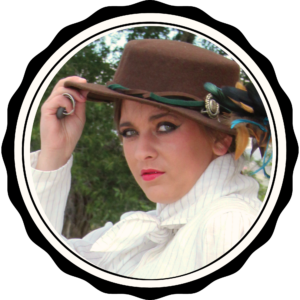
1890’s Outlaw, Kateri Schneider (and other Gals)

The Cody Gunfighters
When the Buffalo Gals were attempting to develop the Cody Wyoming Walking Tours, we hung out all day with a group of re-enactors and performers called “The Wild Bunch” (aka “Cody Gunfighters). We had run ins with these handsome men in dusters and authentic costume many times before, but the summer of 2019, 5 of us got to really know Buffalo Bill Cody, Wyatt Earp, The Sundance Kid, and the rest of the Gang.
A few photos from hanging out with The Wild Bunch summer 2019:
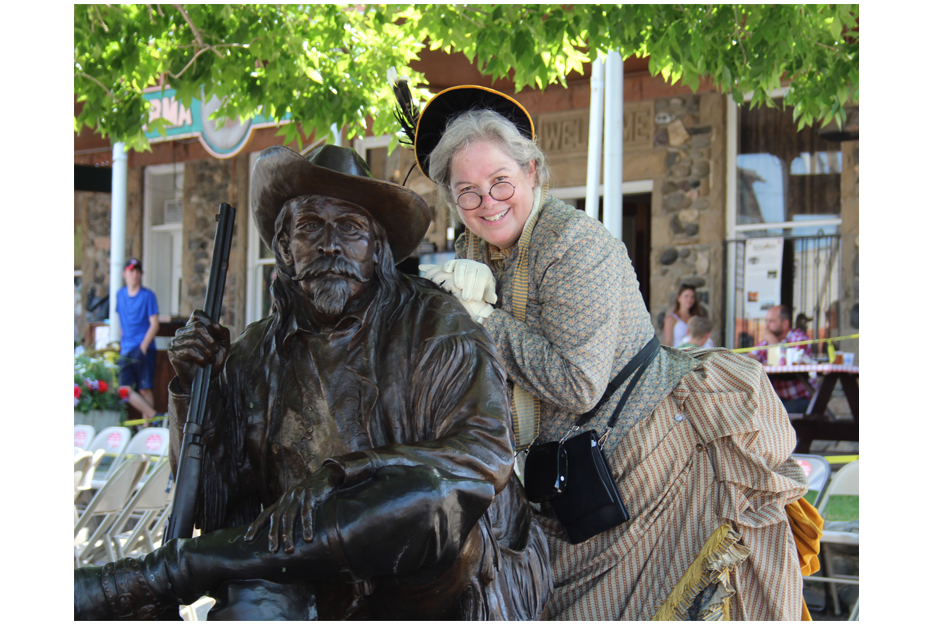
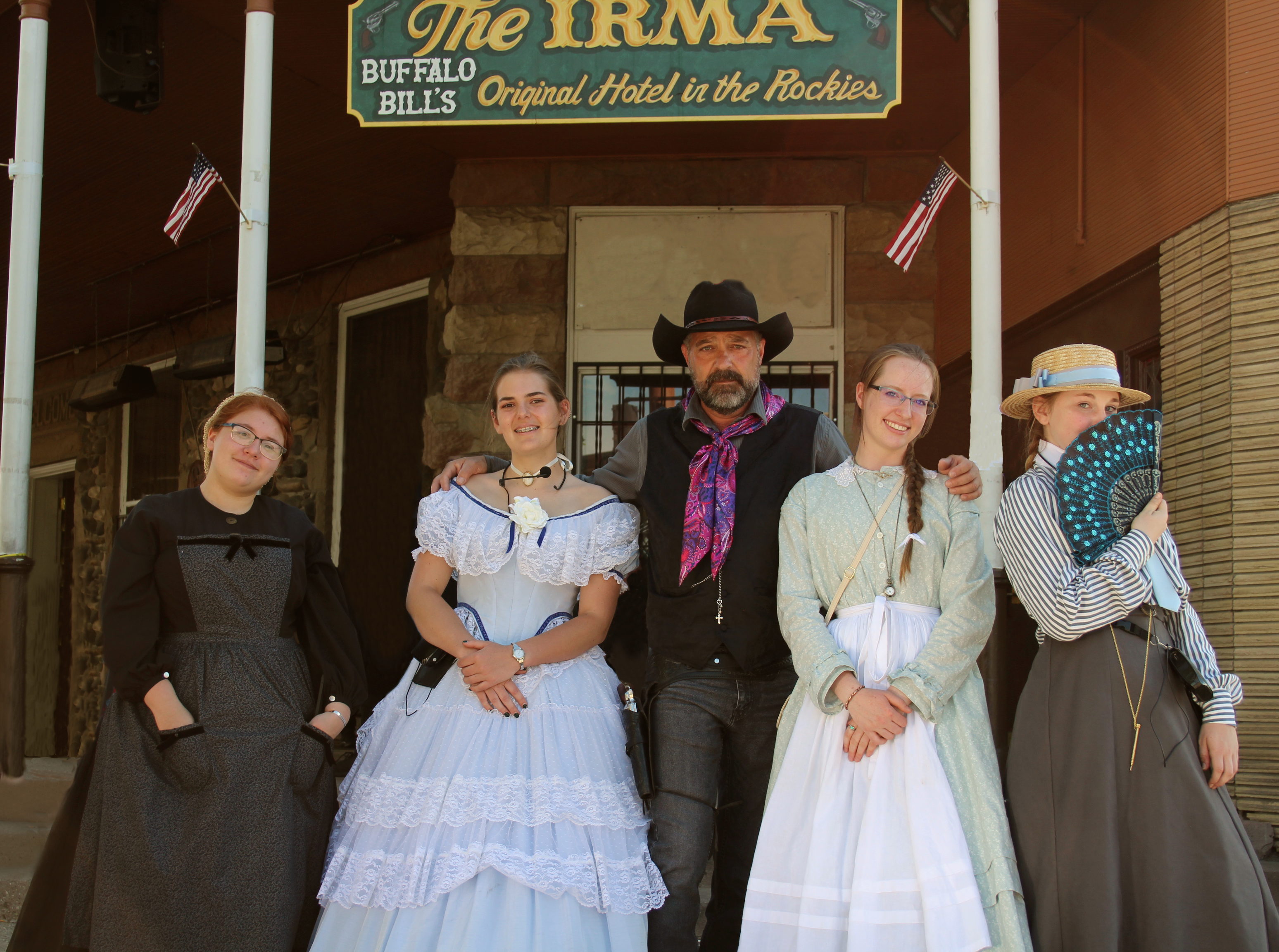
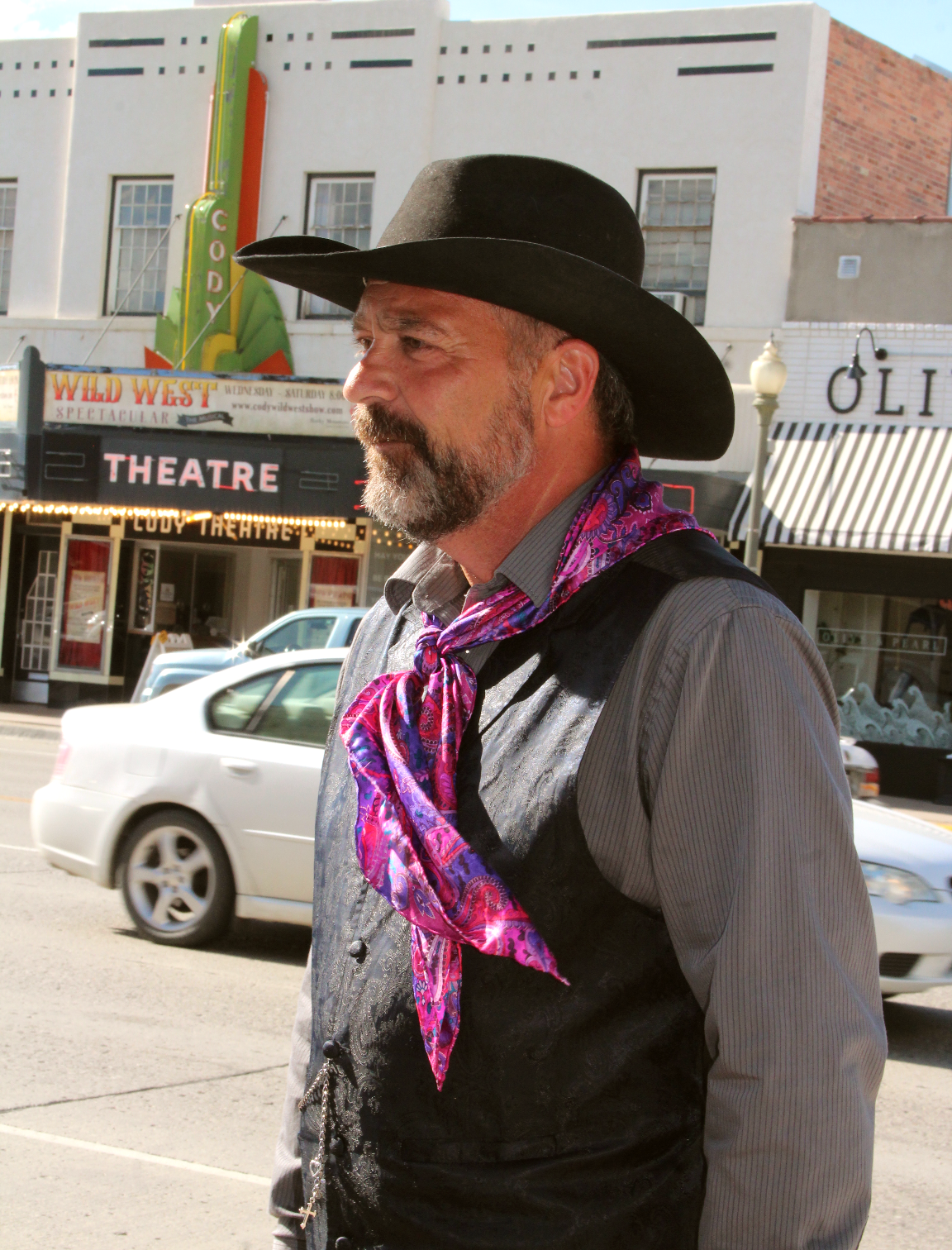
Click here to go to the Historical Context Page (next)
Click here to go to the Fashion History & Design Development Page
Continue below to see the Finished Project

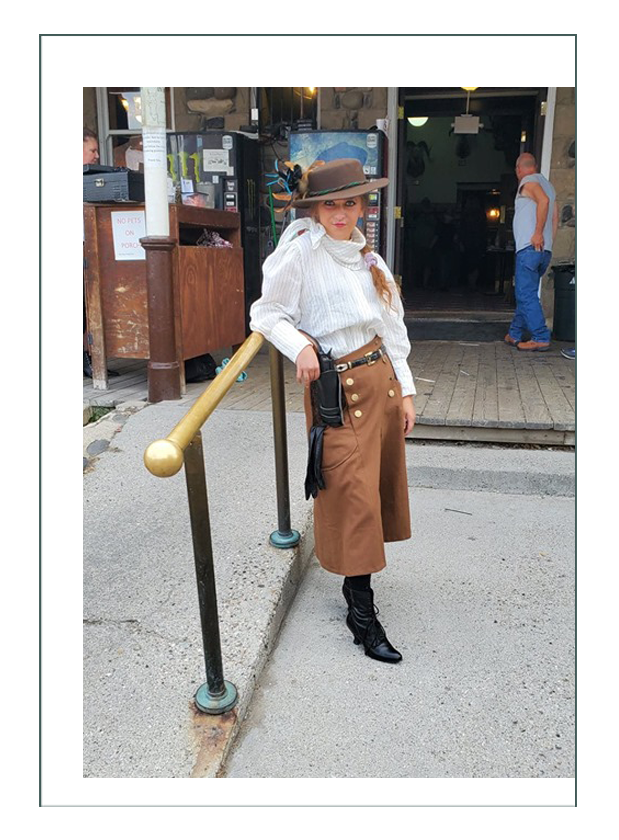
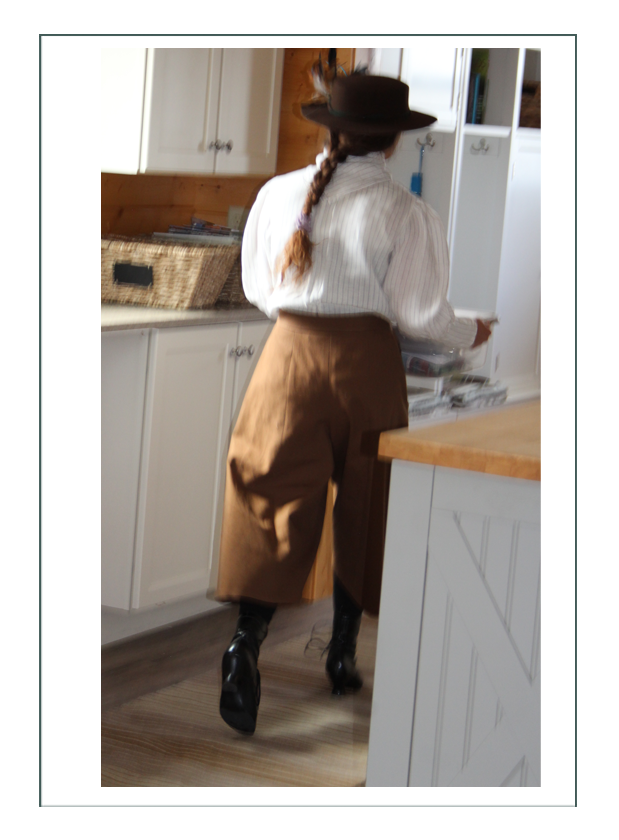
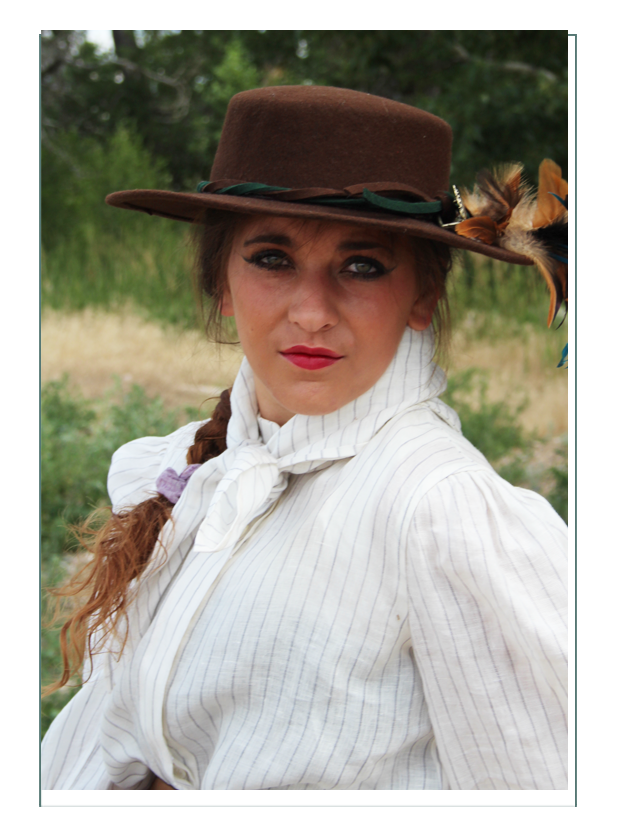
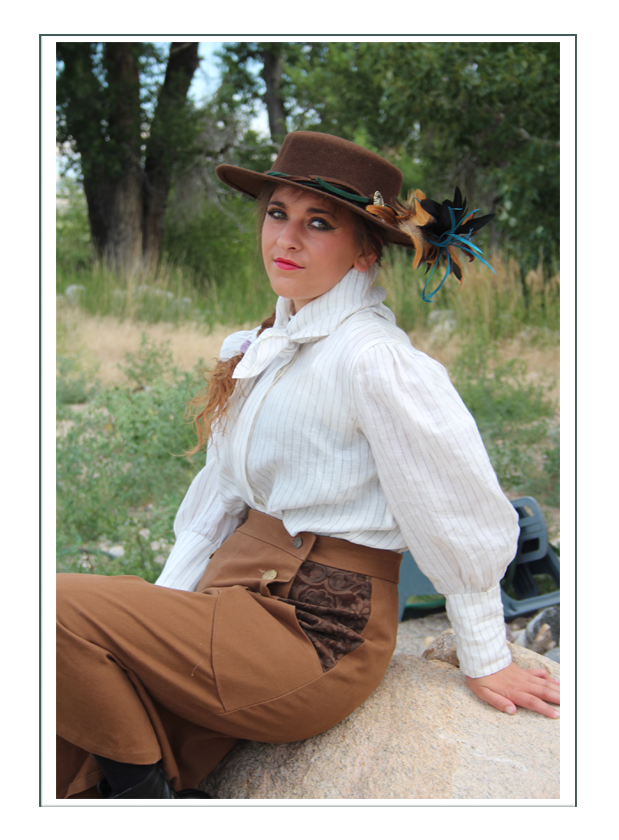
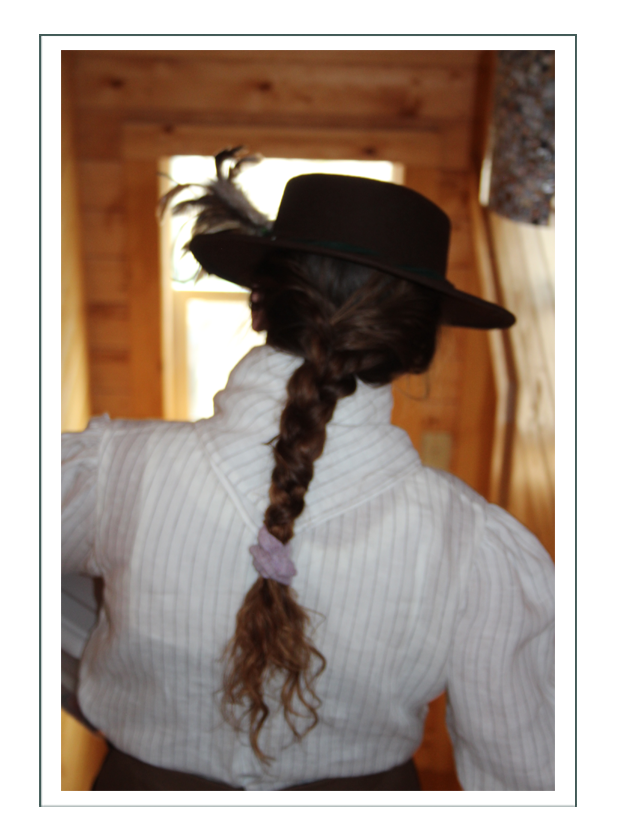
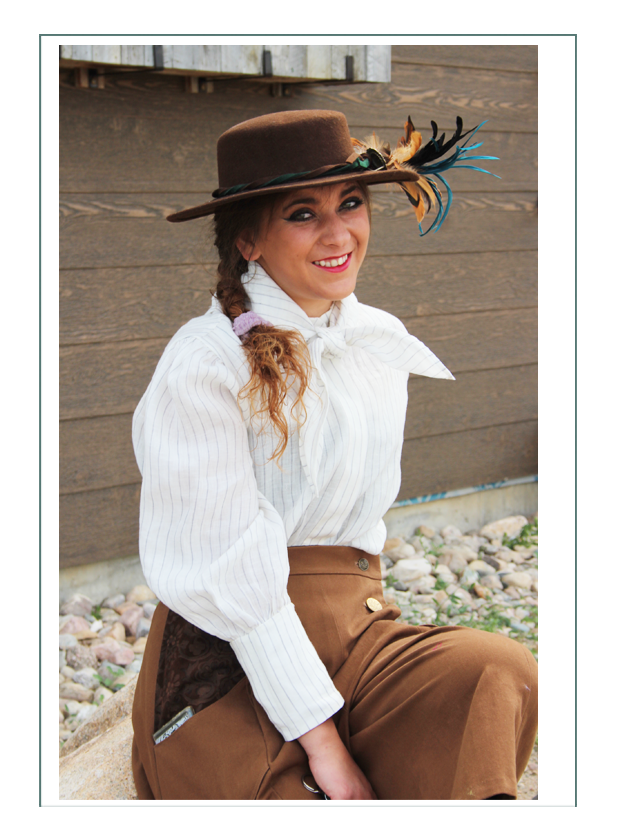
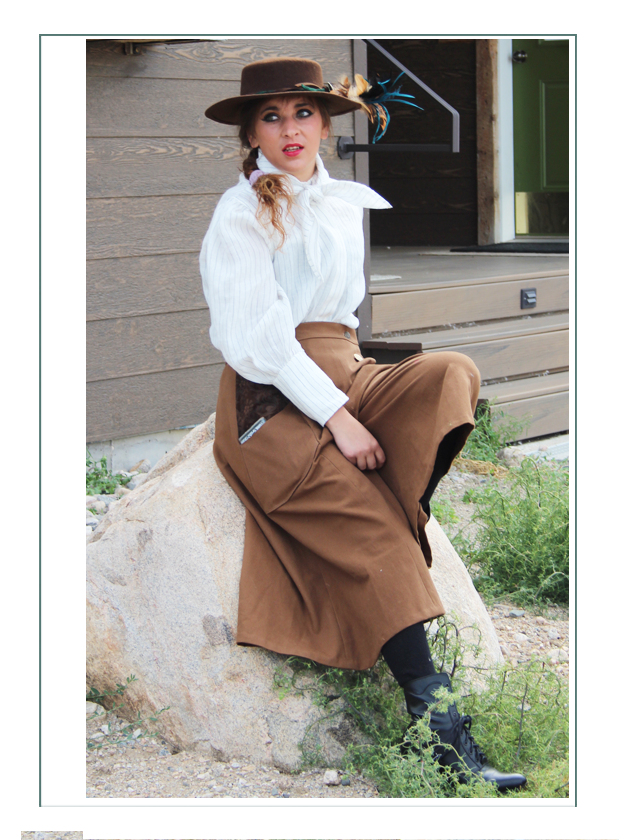
INDIVIDUAL ITEMS
Split Skirt
This was adapted from an historic pattern. It features a drop flap center opening and quick buttons for “using the weeds”. She’s wearing modern unders with the corset for now, but these will eventually have a matching pair of “knickers” that will somewhat duplicate the shape since women of the 1890’s did not wear panties and needed a bottommost layer that was washable.
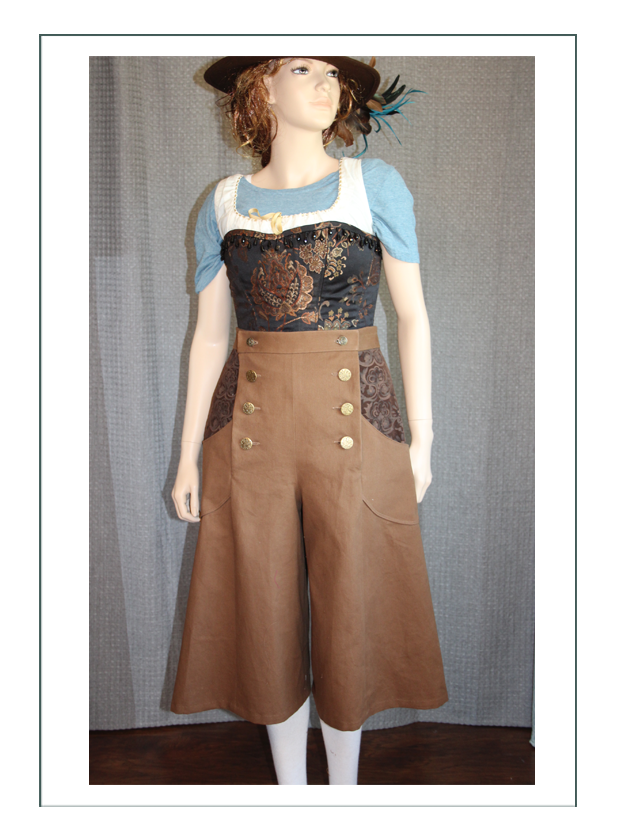
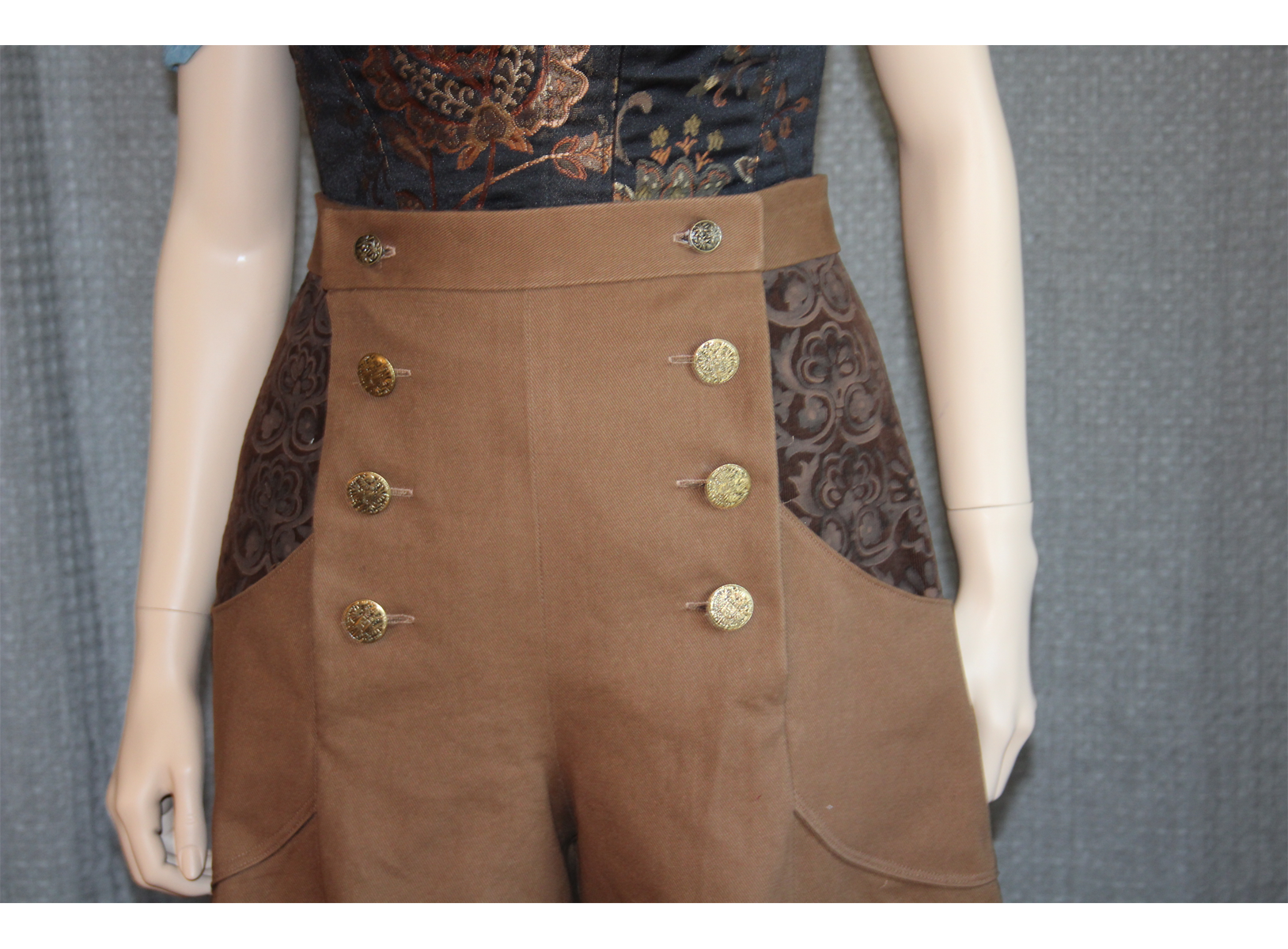
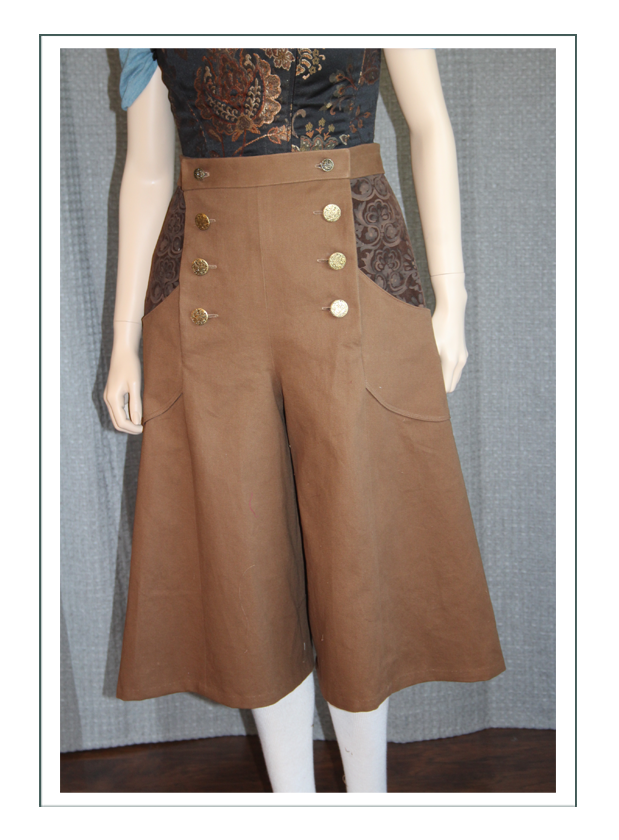
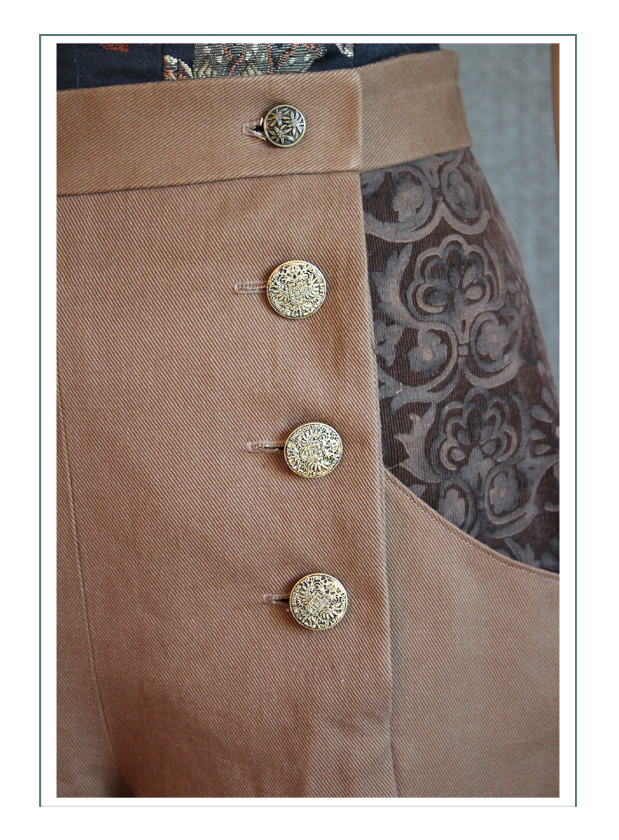
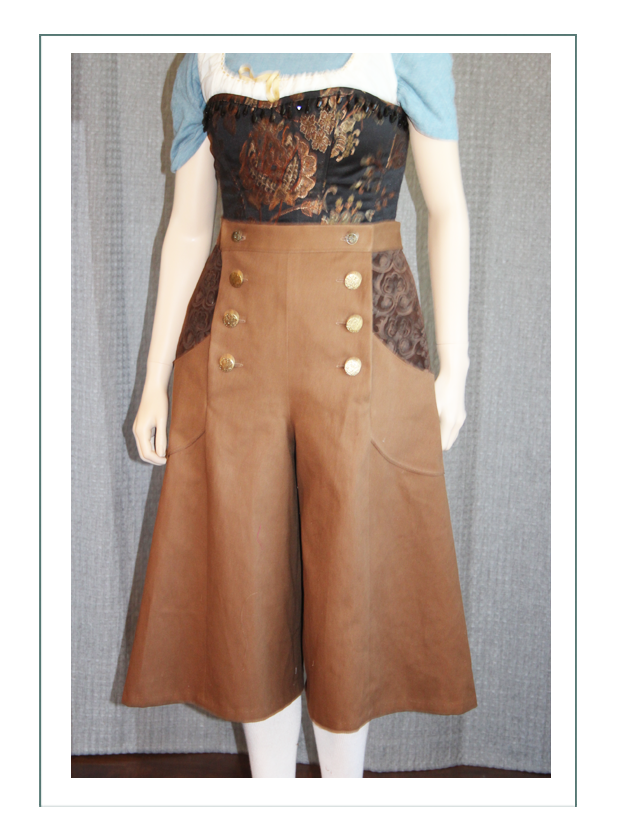
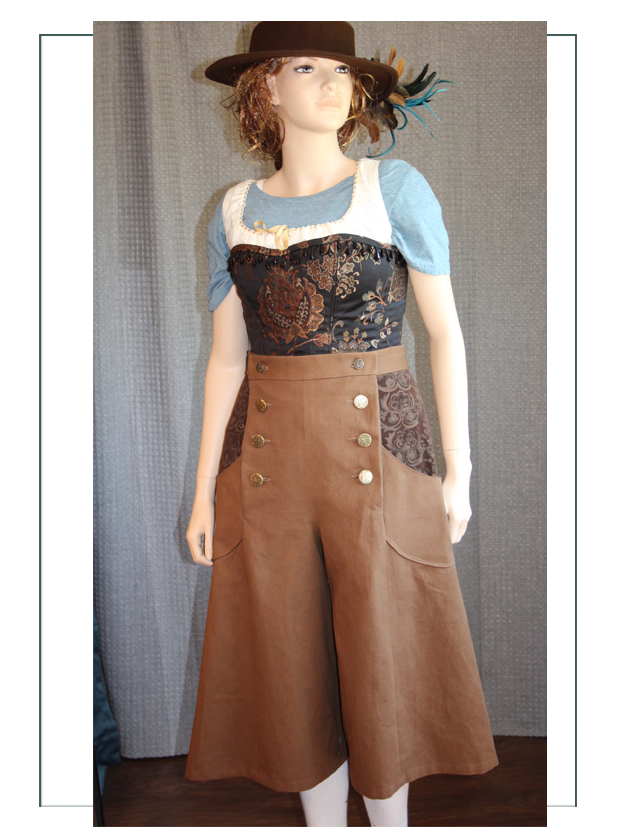
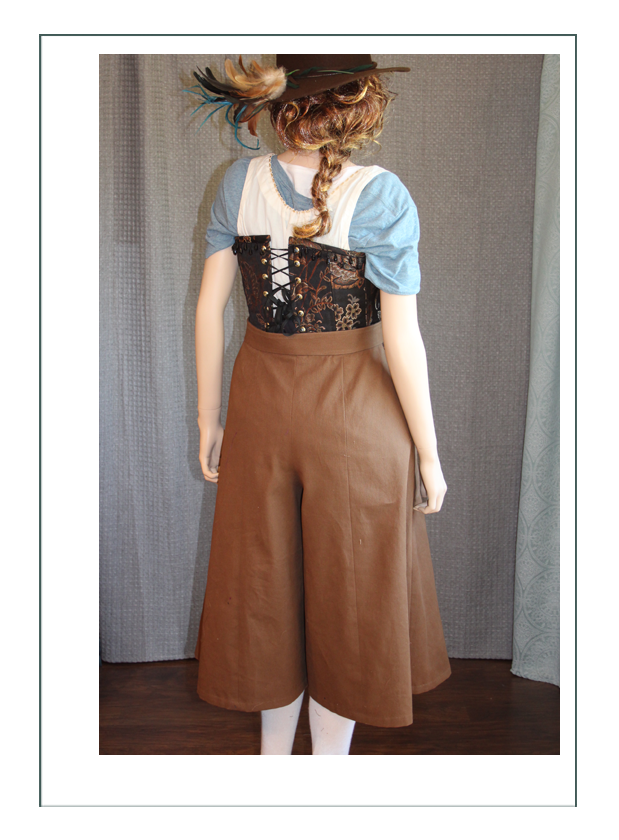
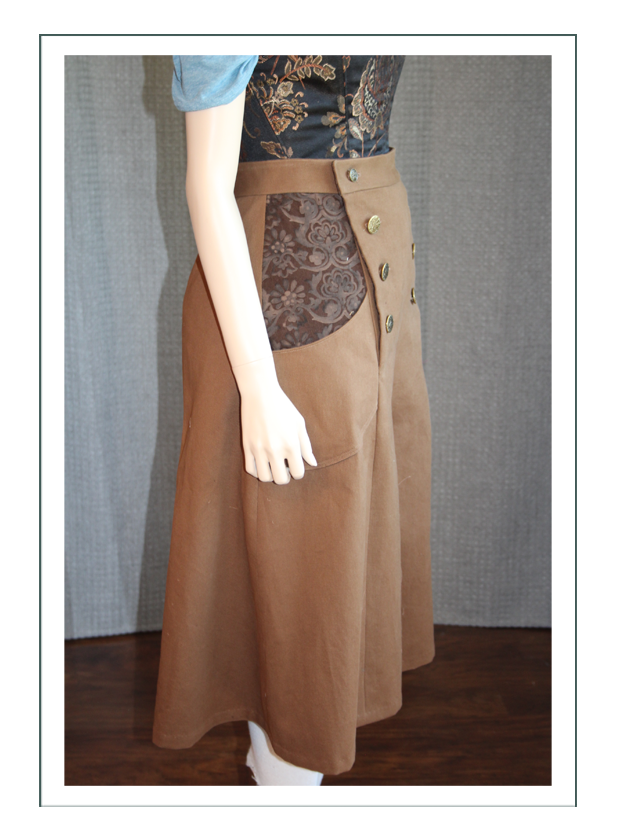
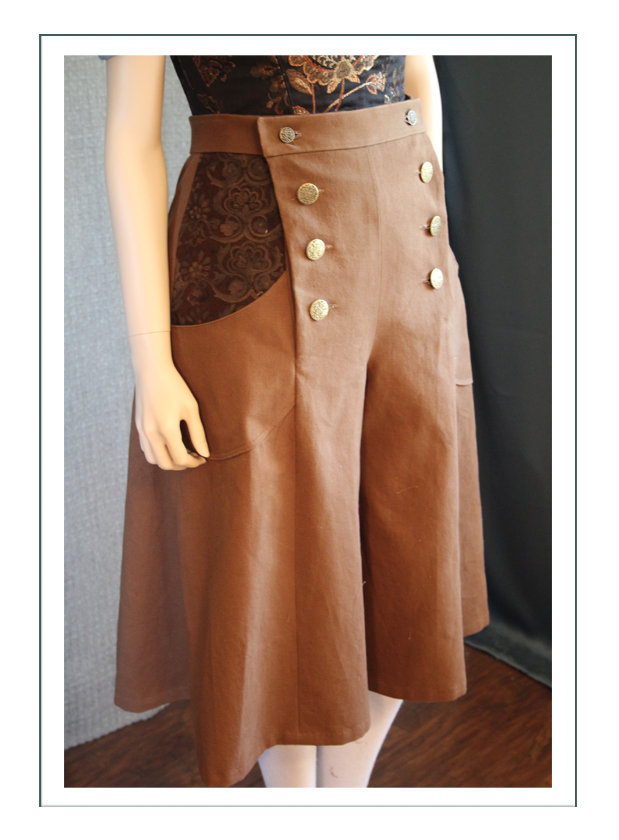
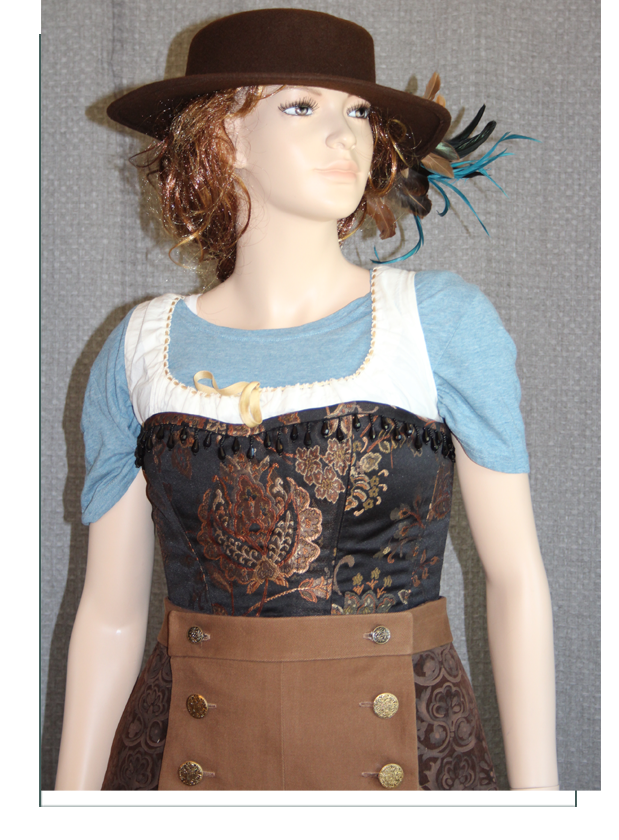
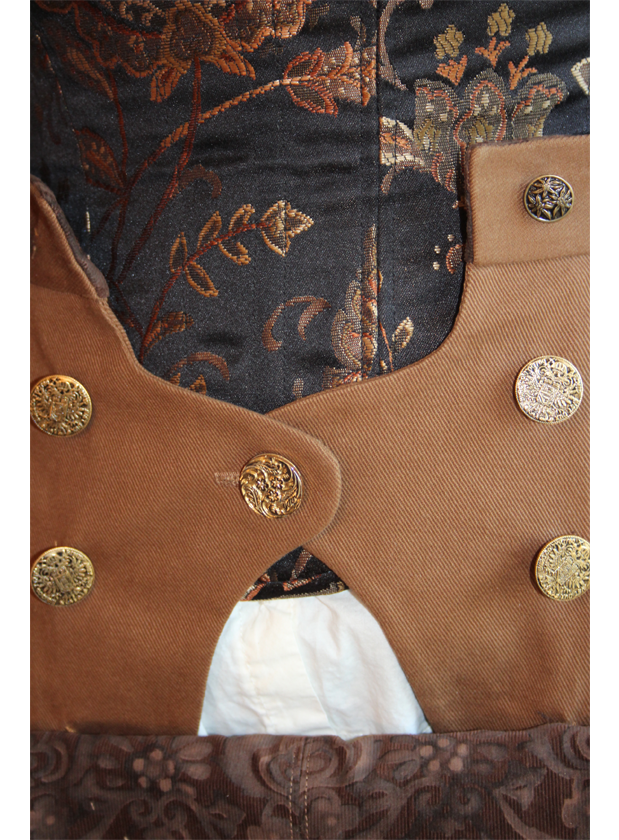
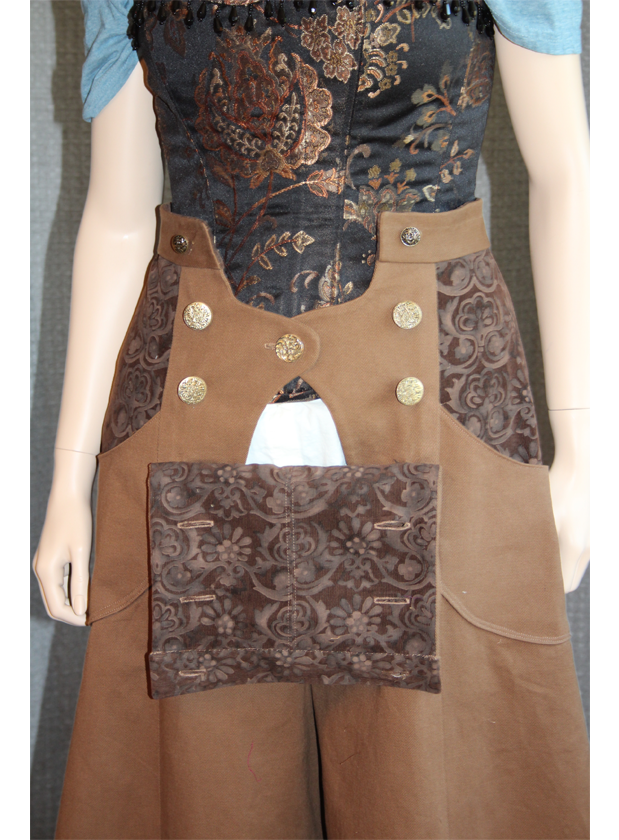
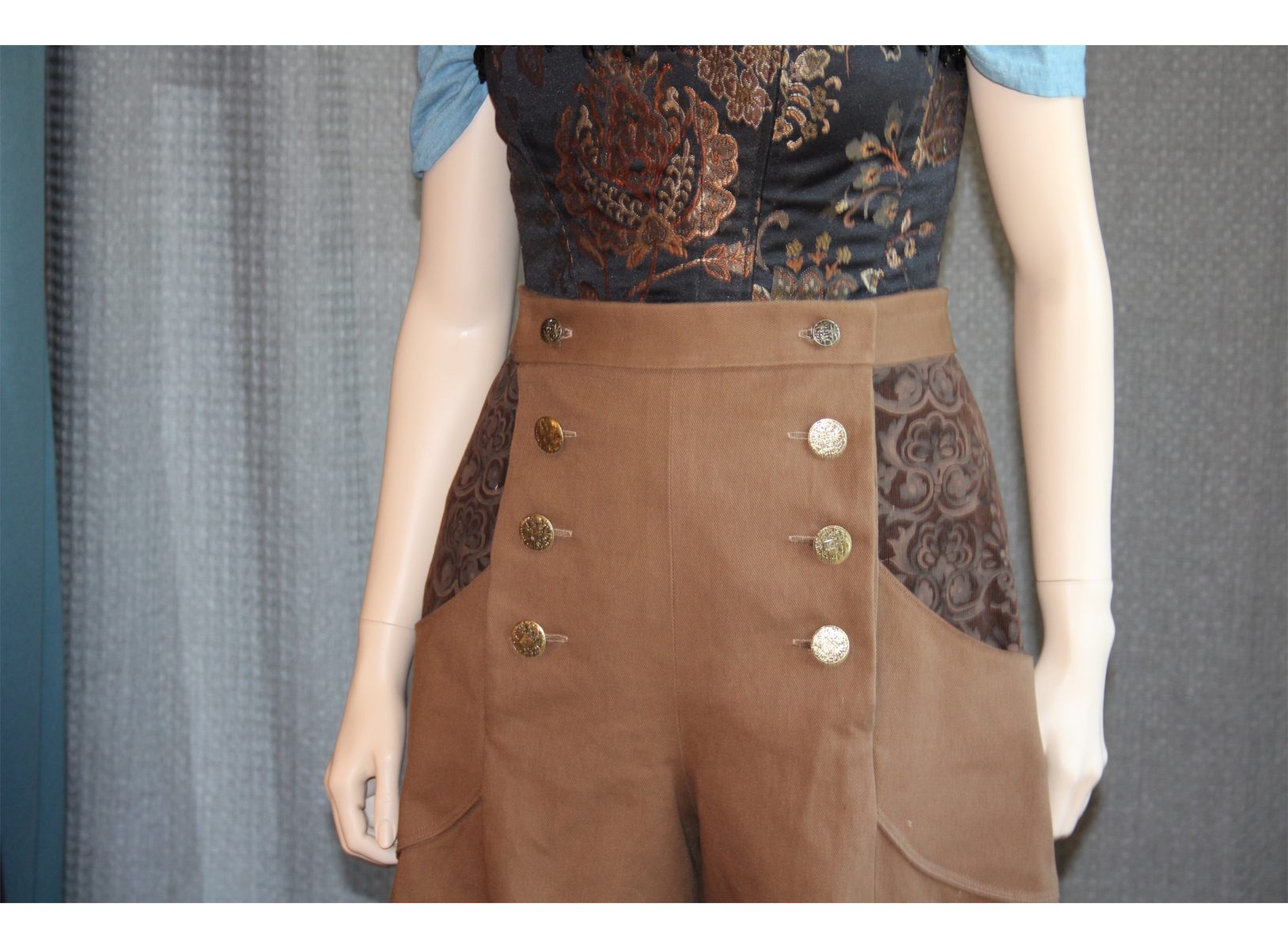
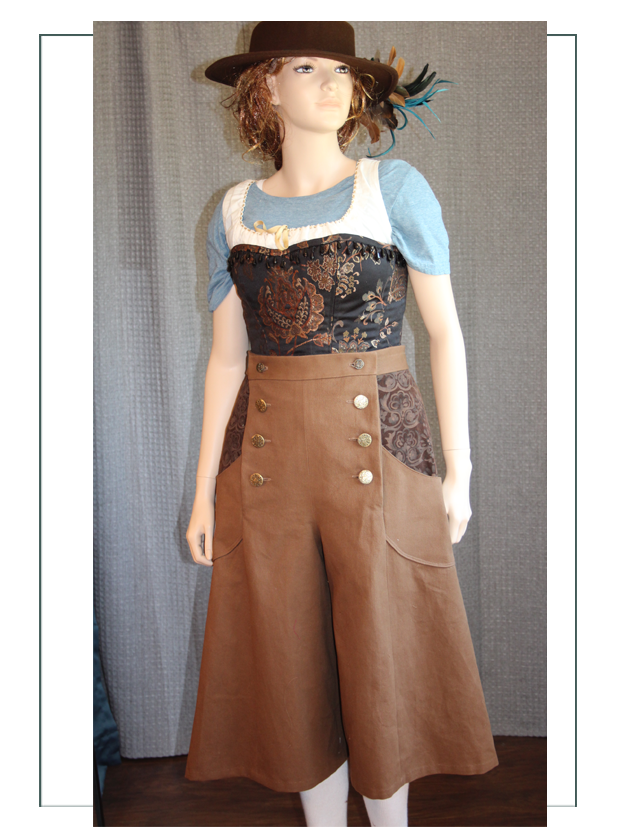
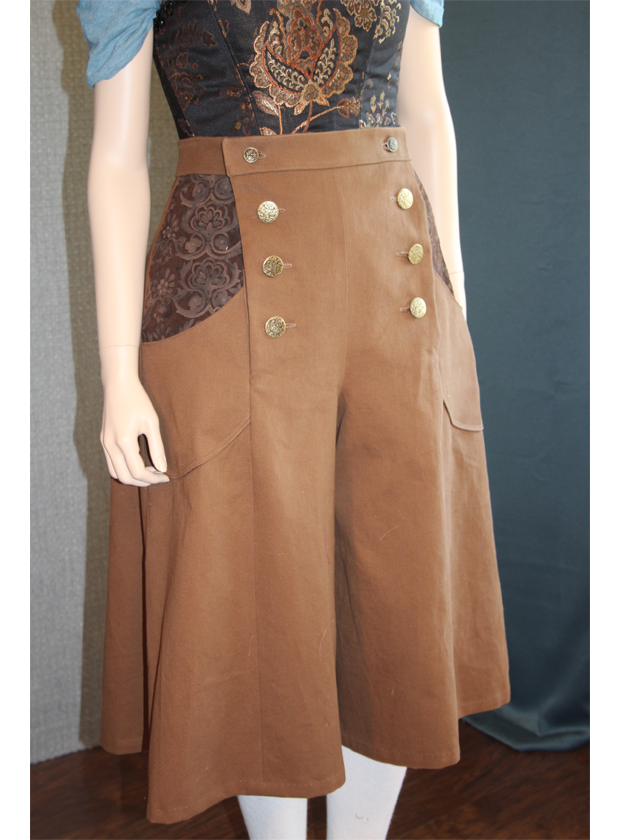
Bolero Vest
Waiting for photos..!
Shirtwaist
There really are no patterns for this era for a western interpretation, so we made our own! Starting with the Bernard type shirtwaist of the early Edwardian era, and mixing in the 1890’s sleeve that featured fullness at the shoulder, plus looking at extant photos and photos of real women, we made this as a kind of “merging” of late 19th century styles.
The priority was comfort and fit though. This is a lovely double gauze softened lightweight linen that is very breathable, washable, and looks good ironed or wrinkled. Kateri’s assignment was to get it dirty and sweaty and to allow sweat rings to stain it, because that’s what would happen in reality to an outlaw or cowgirl wearing this.
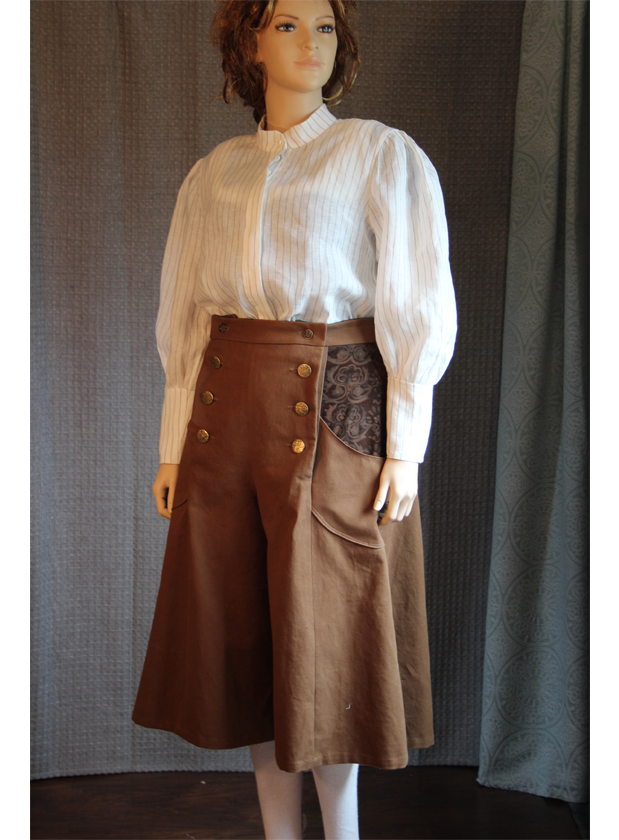
Note it is long sleeved with a modified high collar. Women did not wear short sleeves. Period. We shortened the collar because we know Kateri doesn’t like a high one or a tight one, and we want her to be comfortable performing.
The revers in 1890 had only just become truly a separate garment, the shirtwaist, as a part of the newly created “suit” that had evolved from riding habits and was a trend spurred on by the Parisian designers who saw a big market in the new trend for women in sports and work.
The Western woman wore a type of “suit”, as “suits” of the time were really only two pieces: bodice and skirt, until the separate blousewaist was added a decade or so later. This 3 piece ensemble is less of a fashion statement from the time than a modified replication of what men in the field in the West were wearing at the time.
It’s a “ride astride cowgirl” outfit.
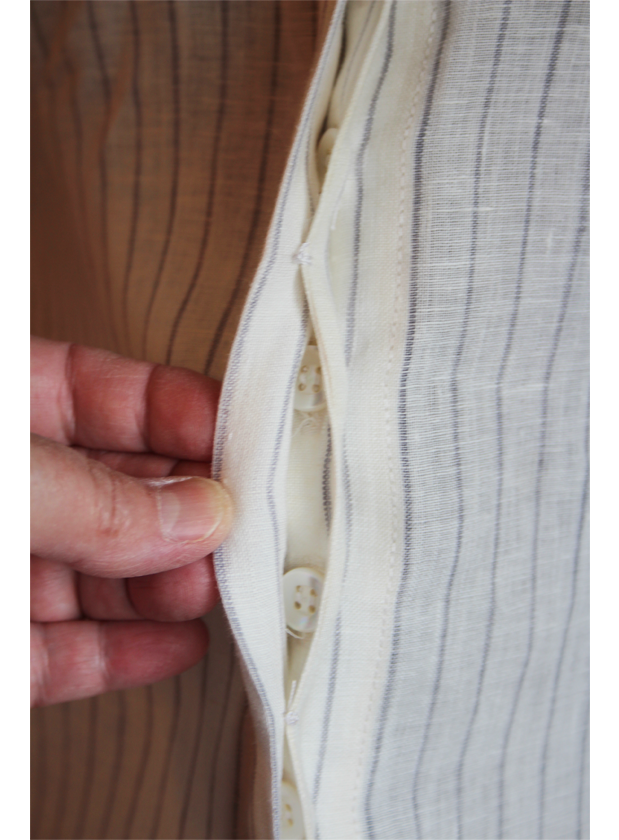
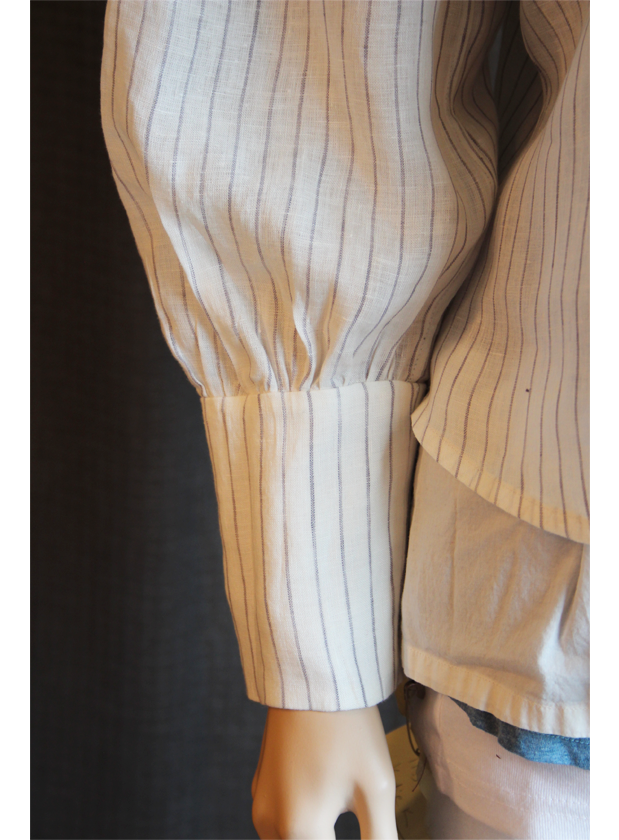
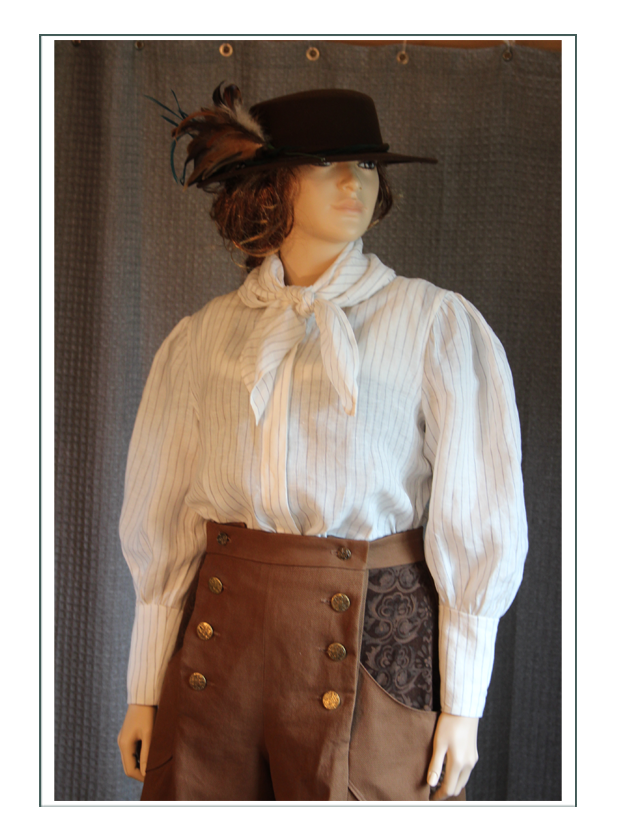
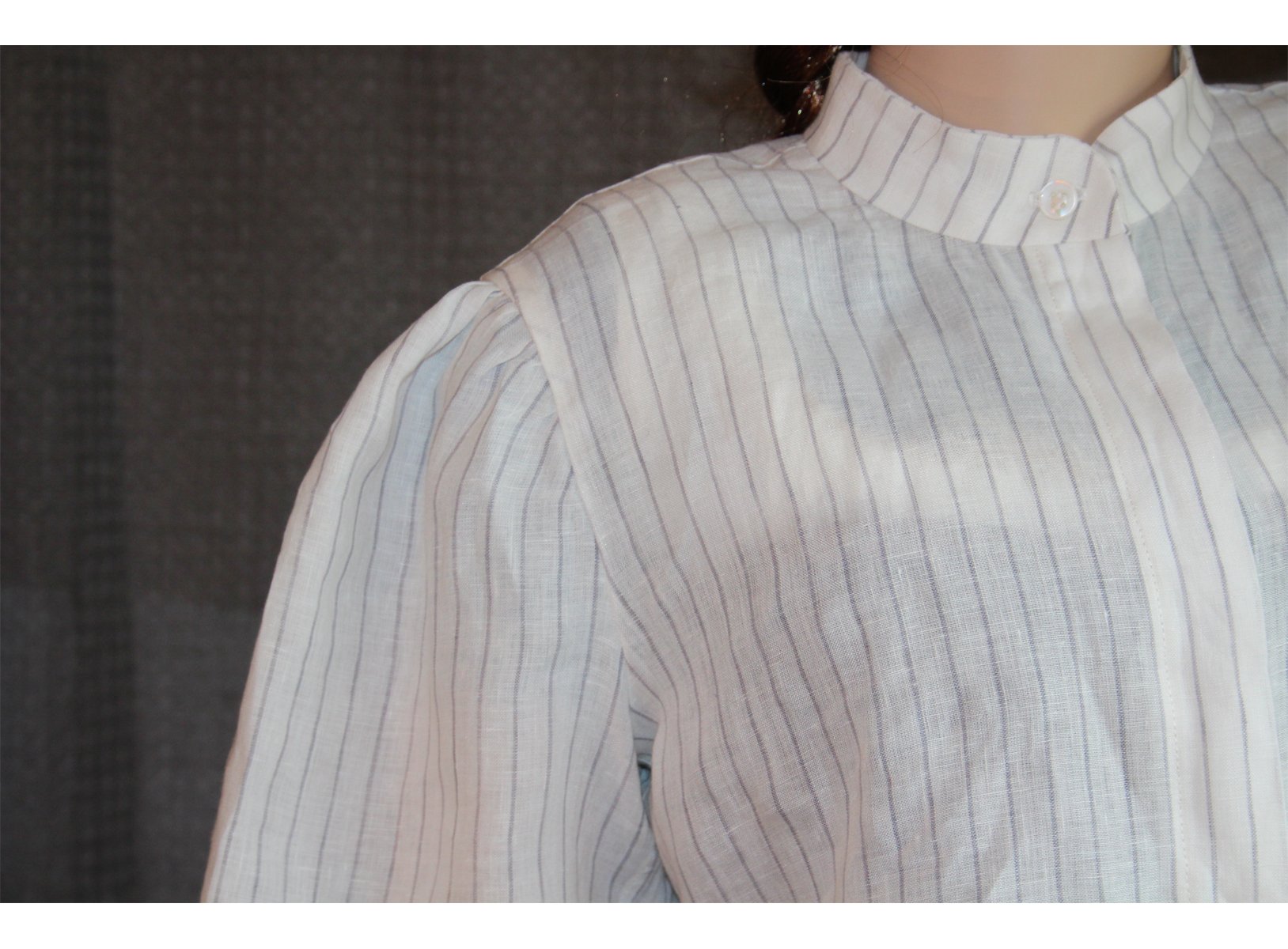
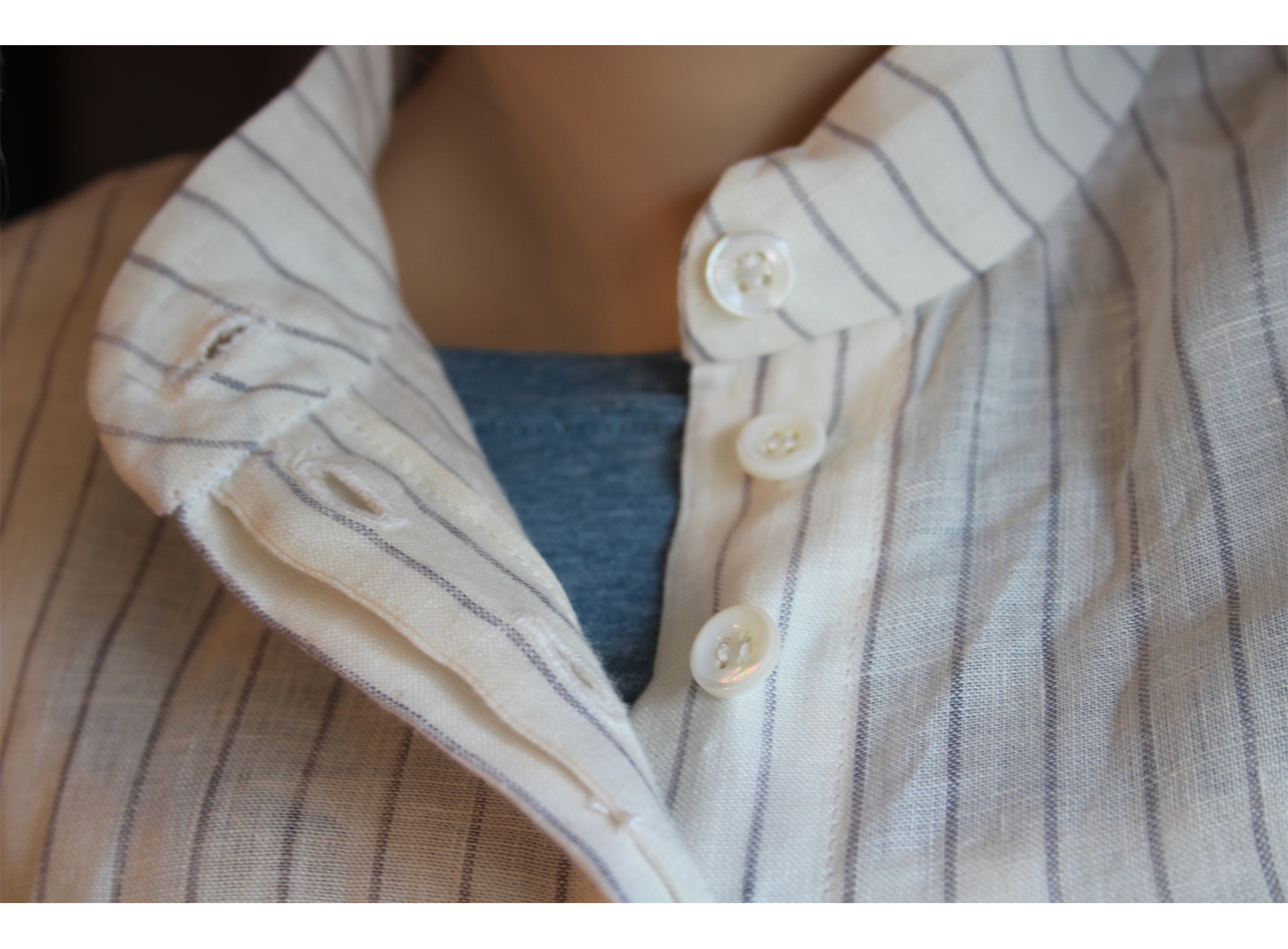
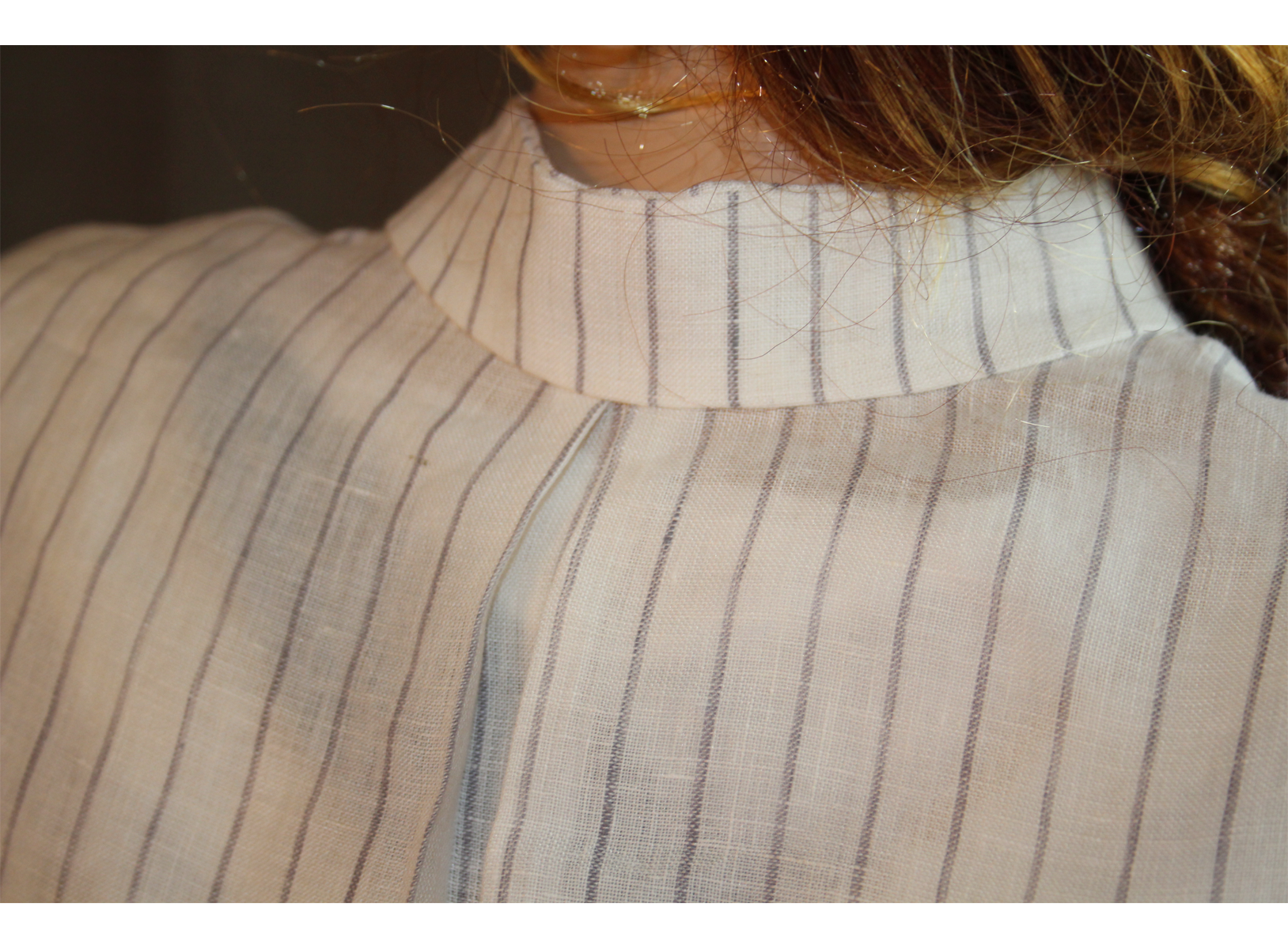
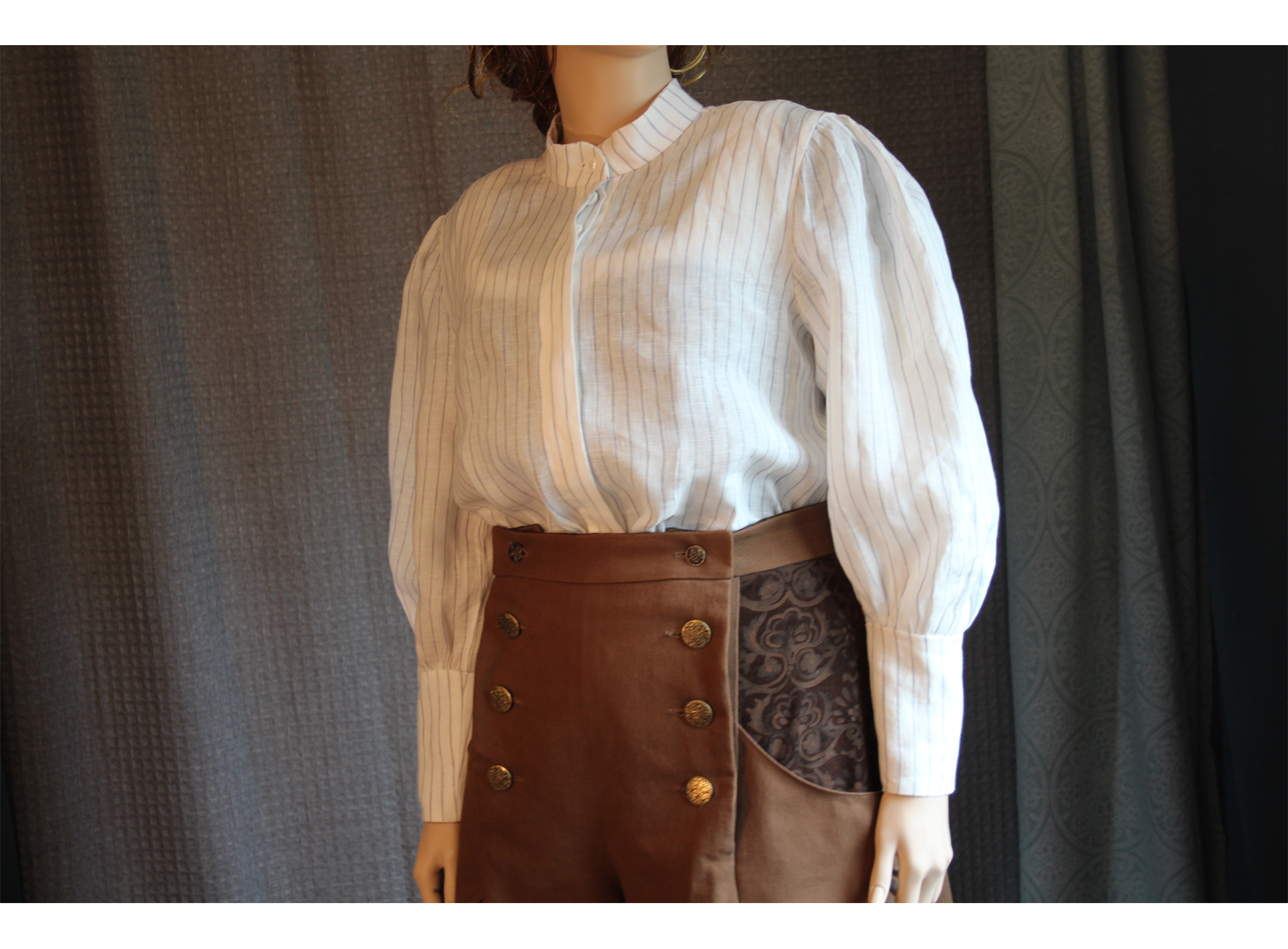
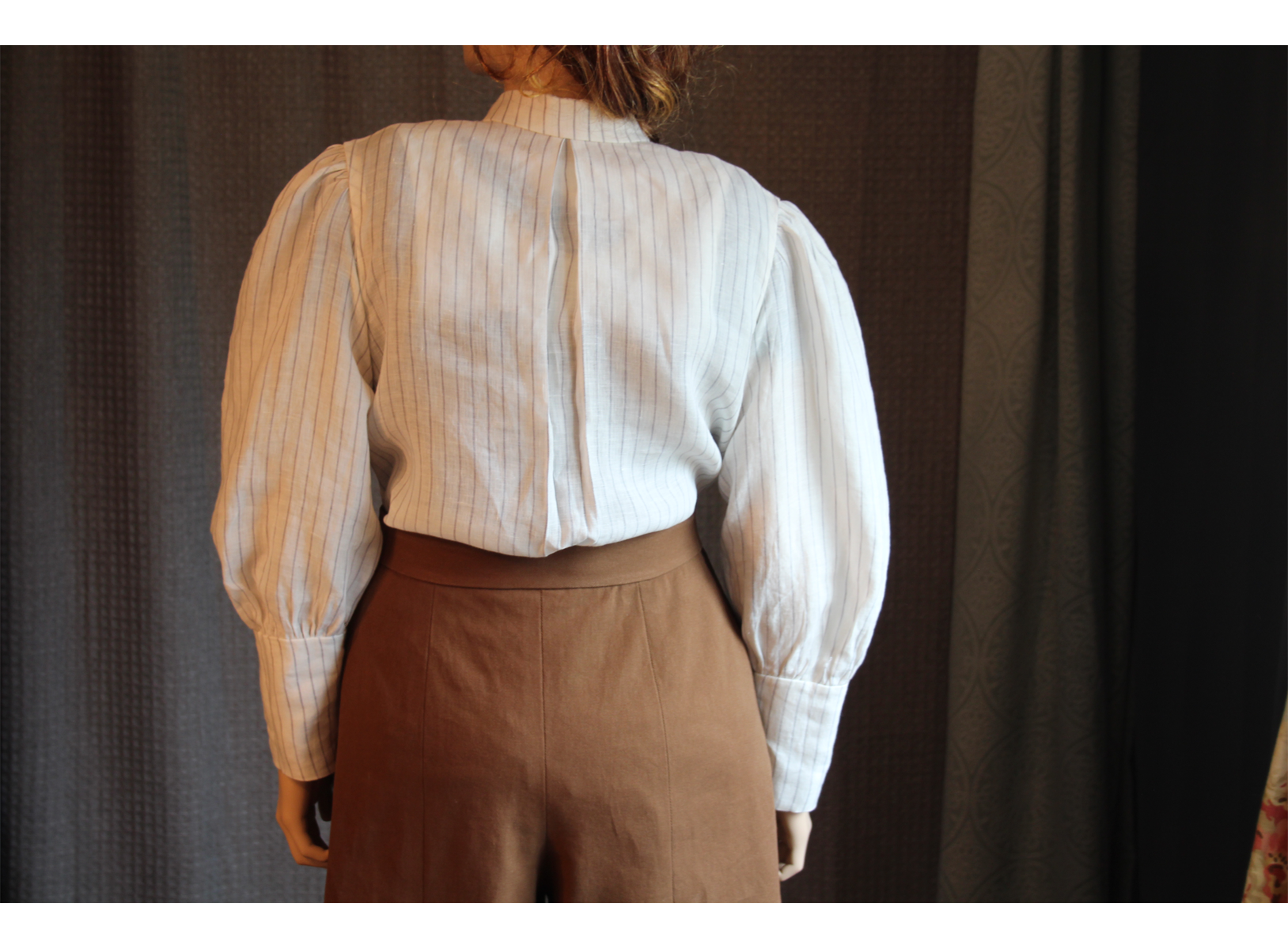
Scarves & Neckwear
The costume for performance will have a silk “snakeskin” scarf, but other neckwear we have in shop change the whole look. The leather necktie would have been VERY typical of a western woman to wear from about 1910-1914.
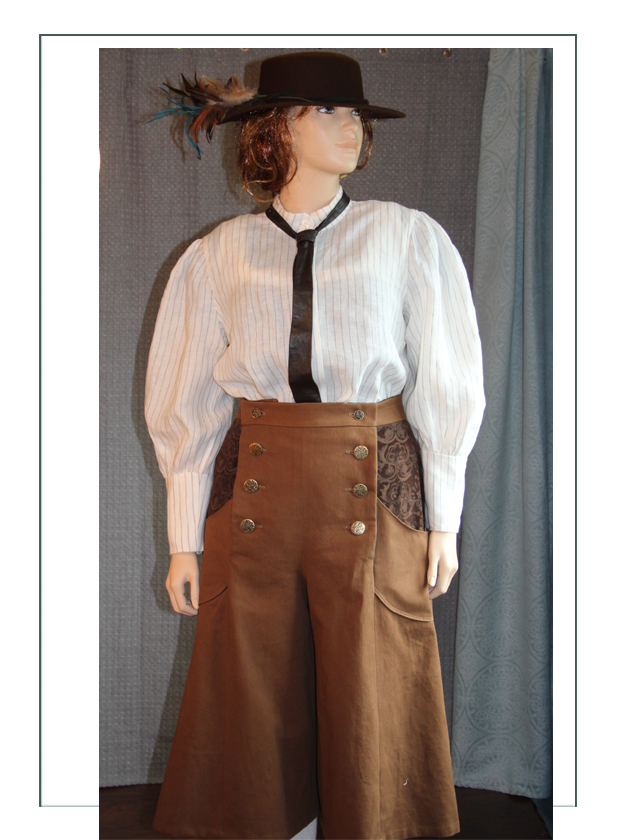
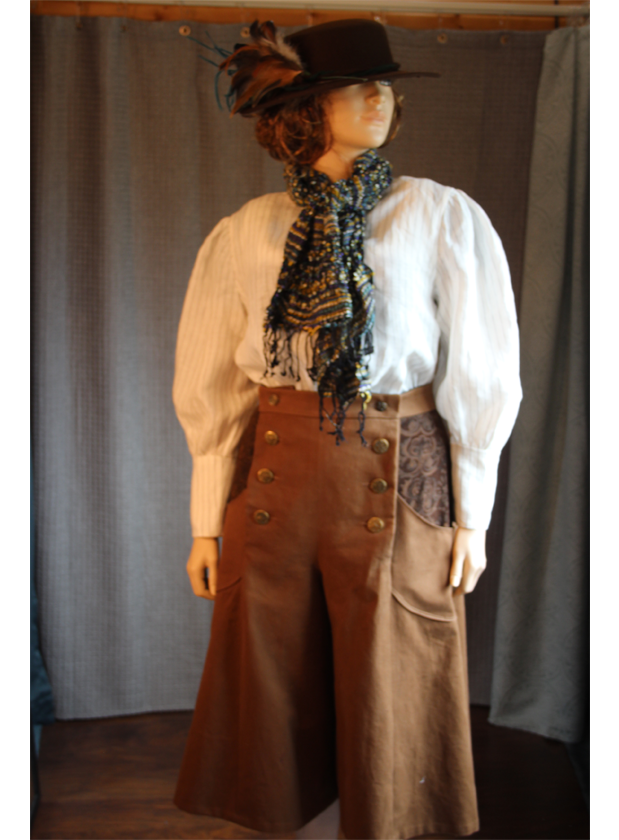
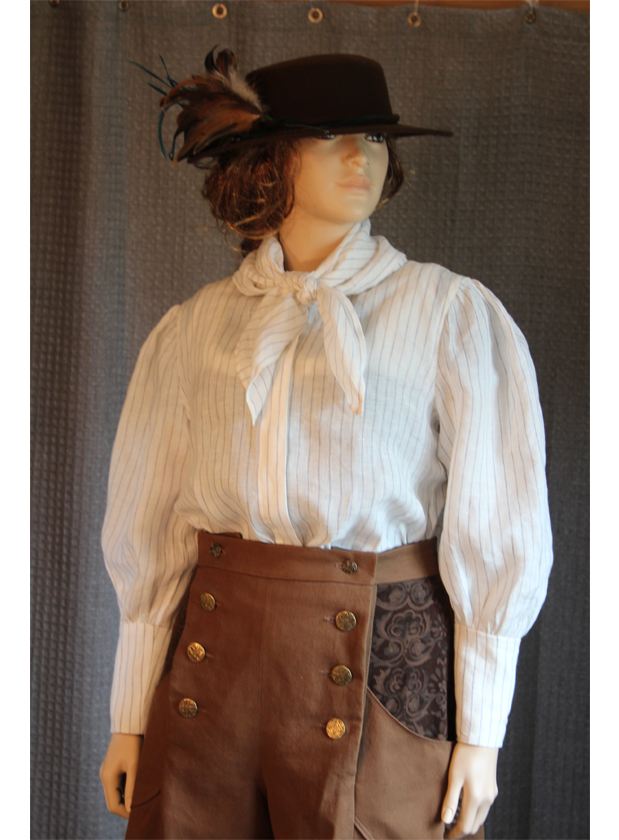
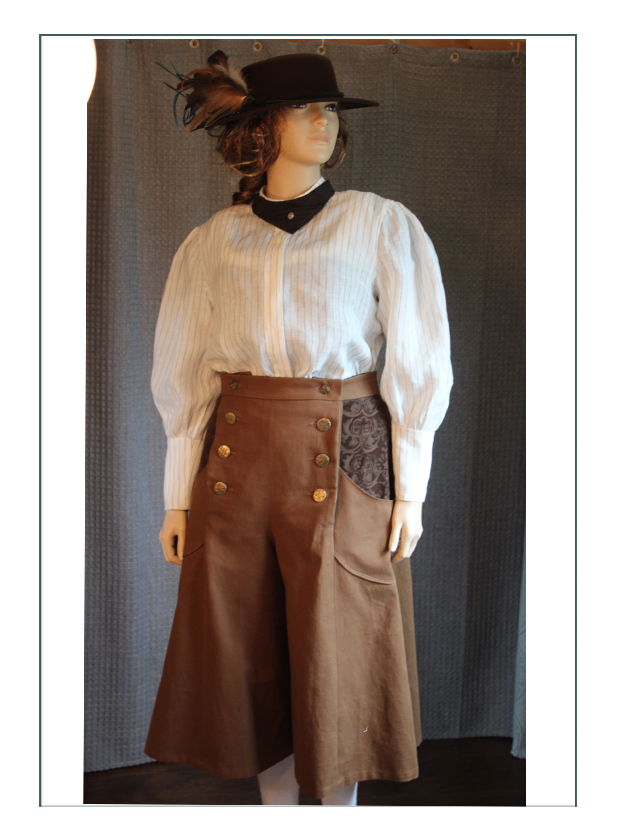
Vest
Our outlaw took off with her basic garments before we got photos, so these are on the mannequin without a corset. The corset gives the shape for this bolero vest. It is made of the same fabric as the skirt, with a unique shoulder insert design that looks like a shoulder holster.
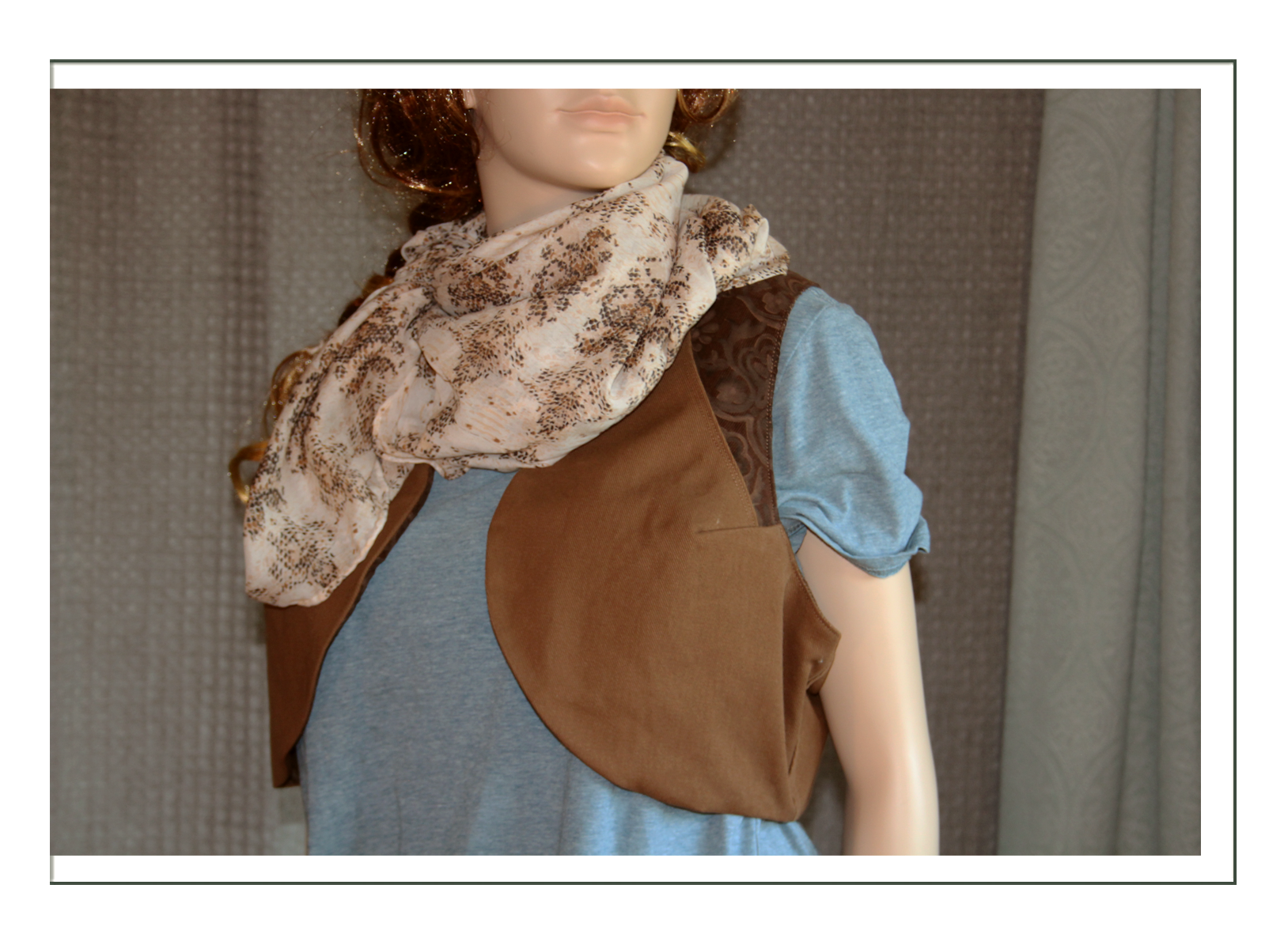
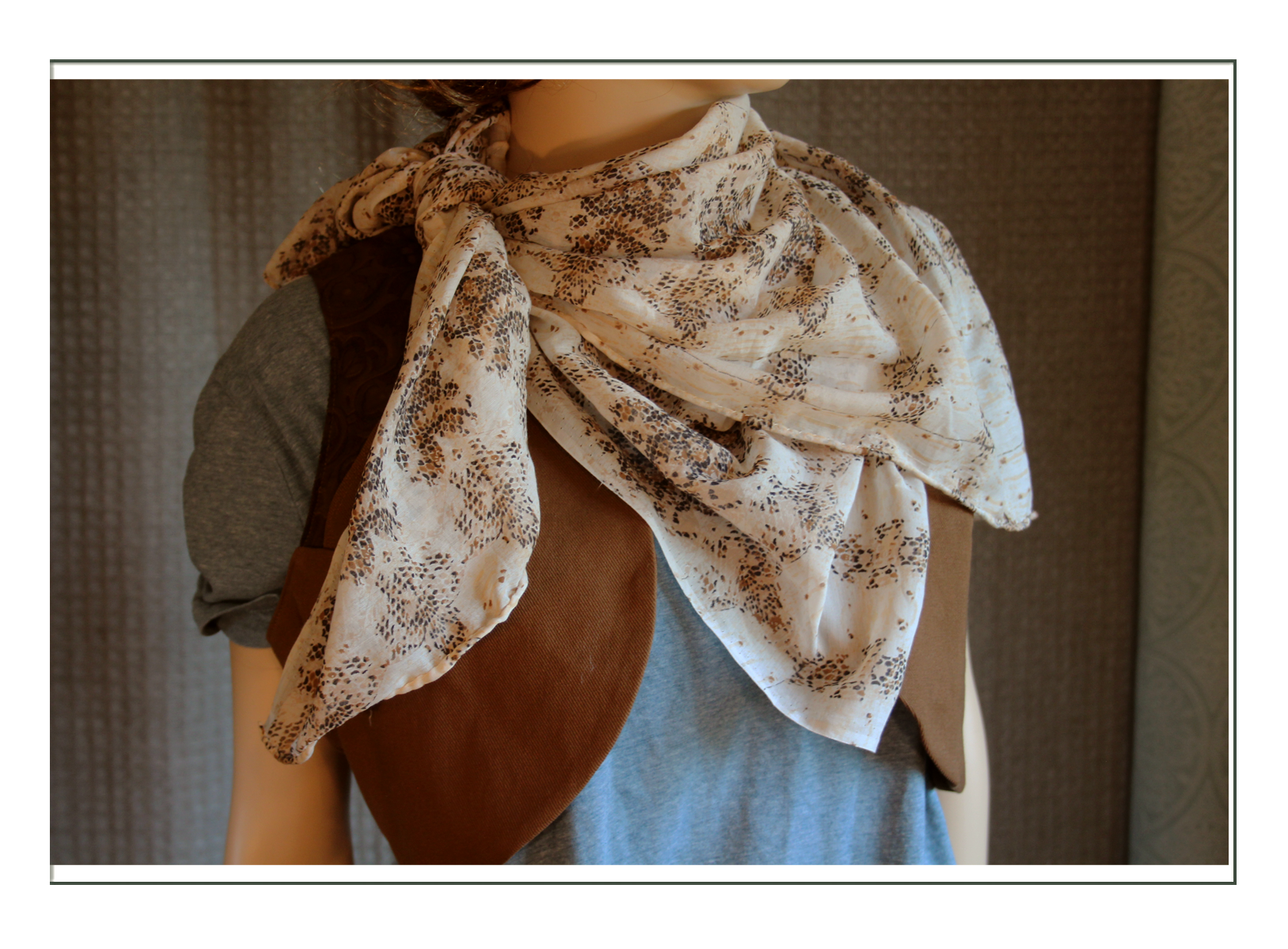
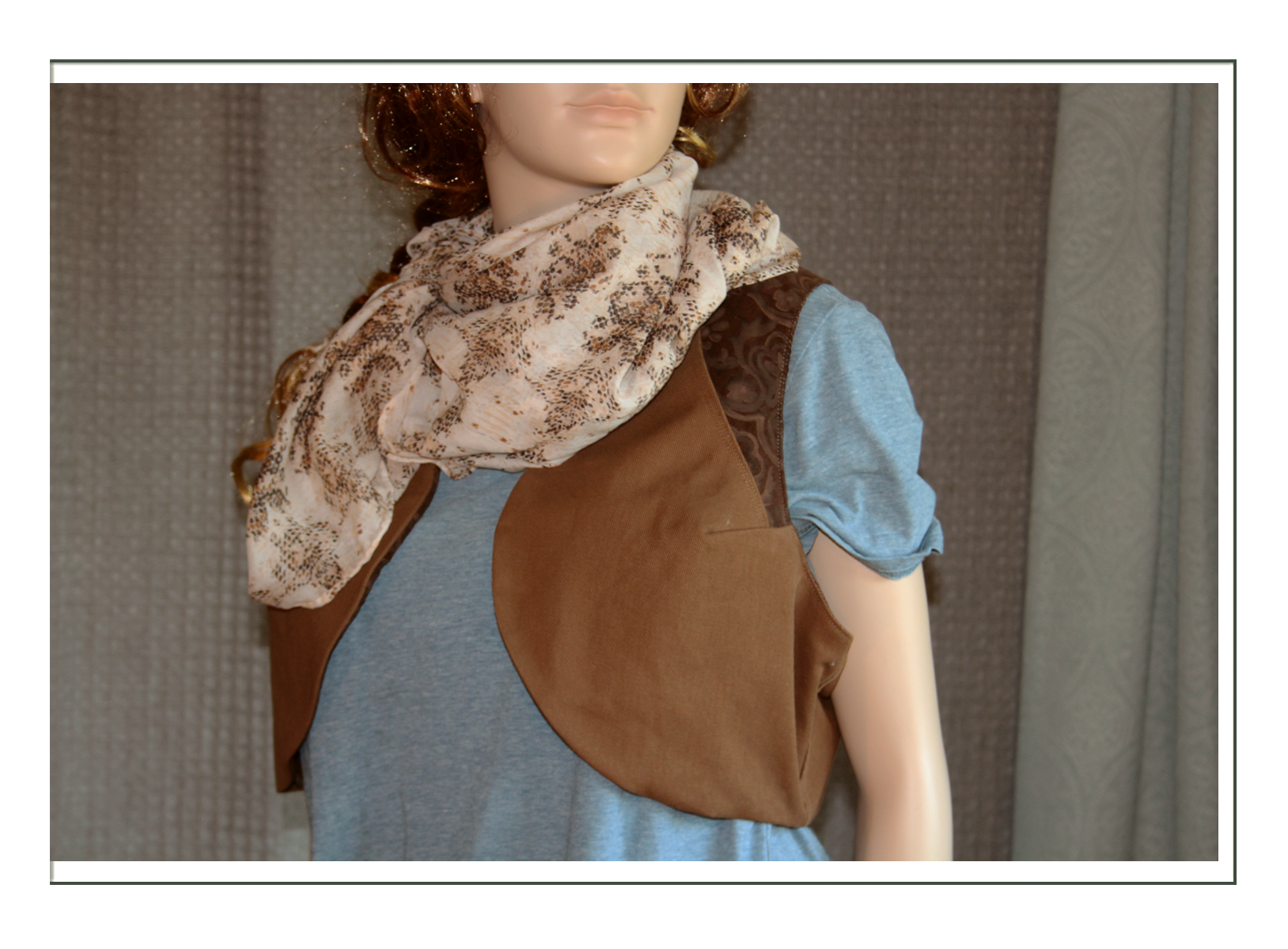
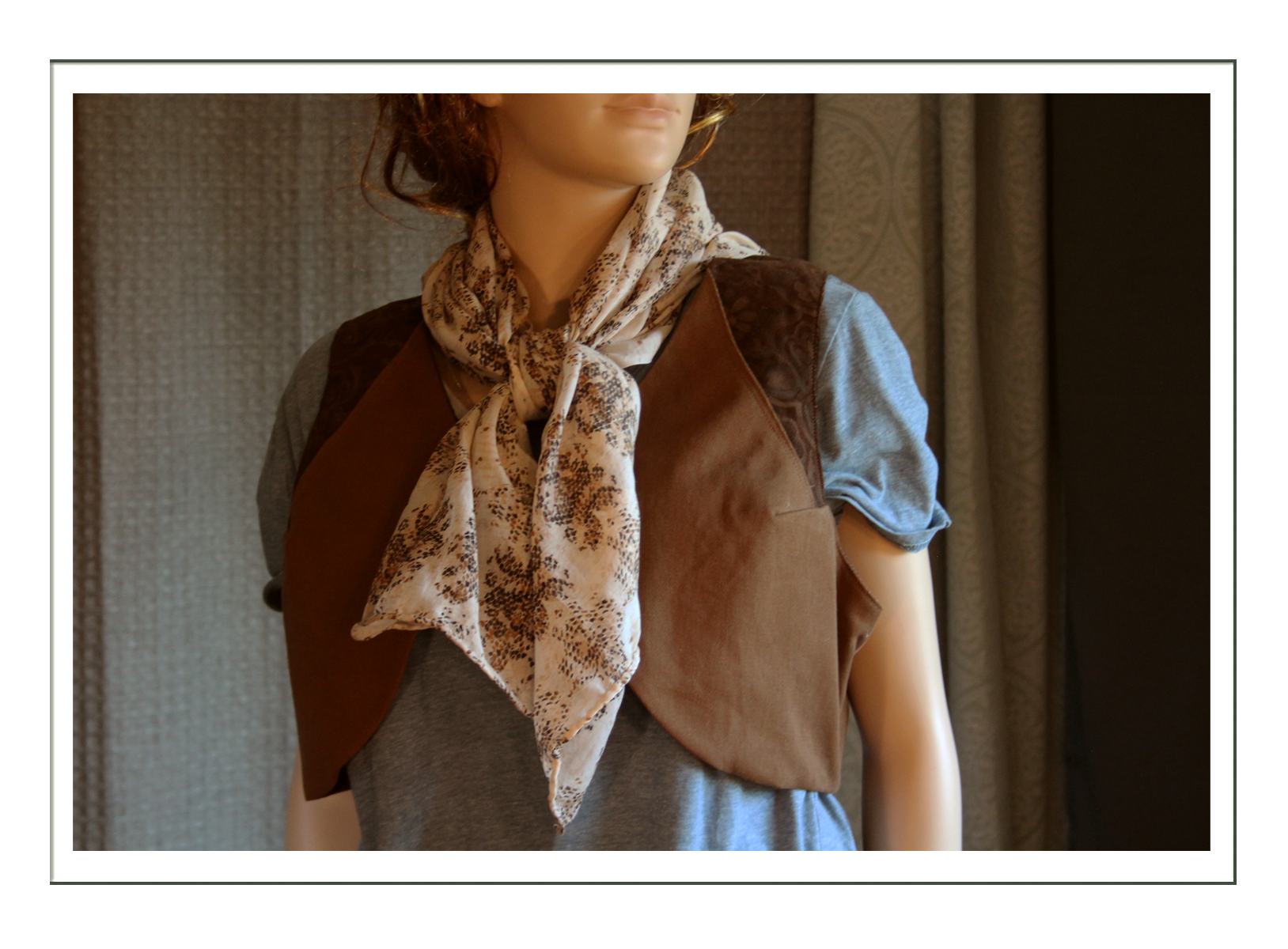
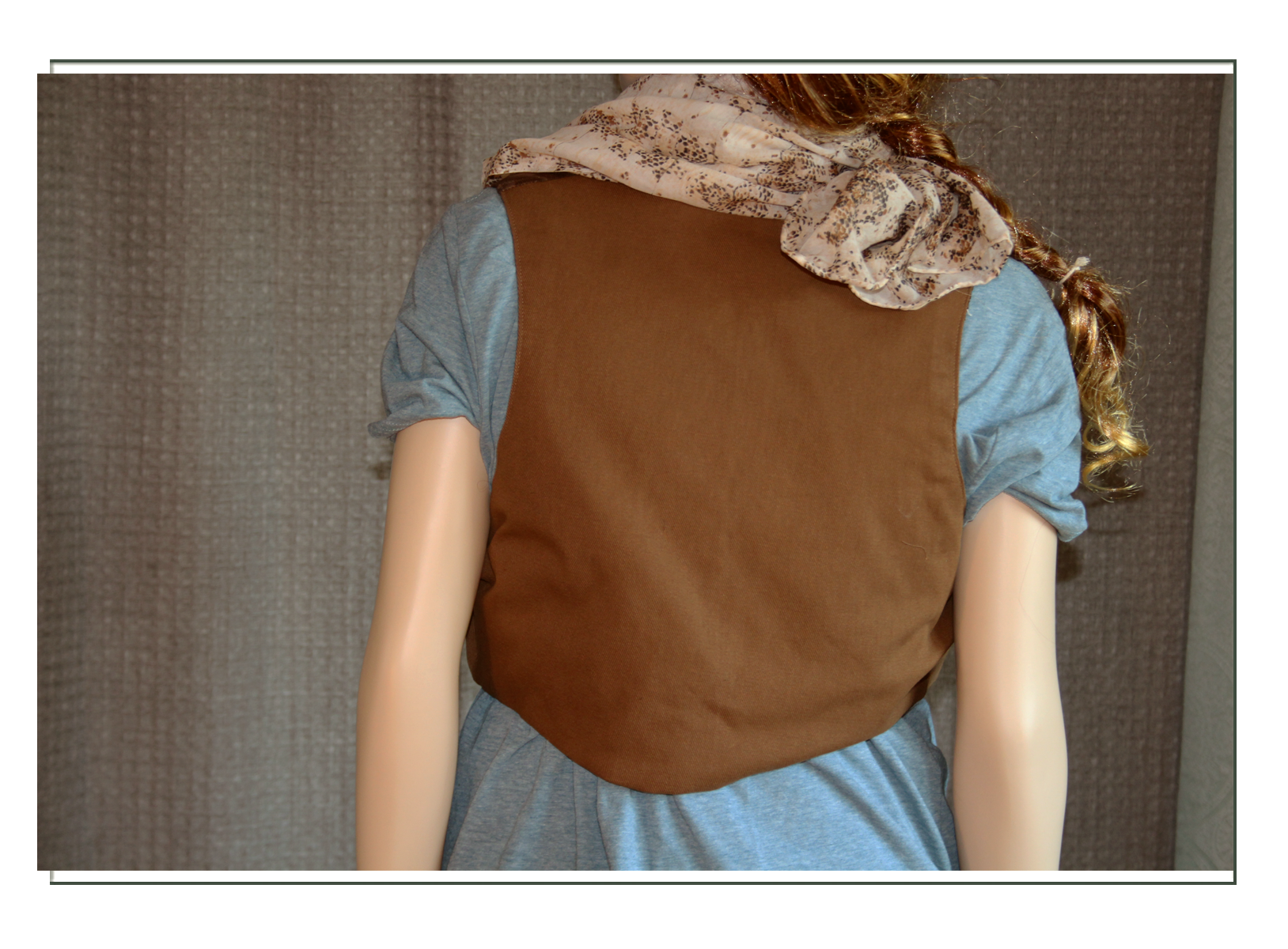
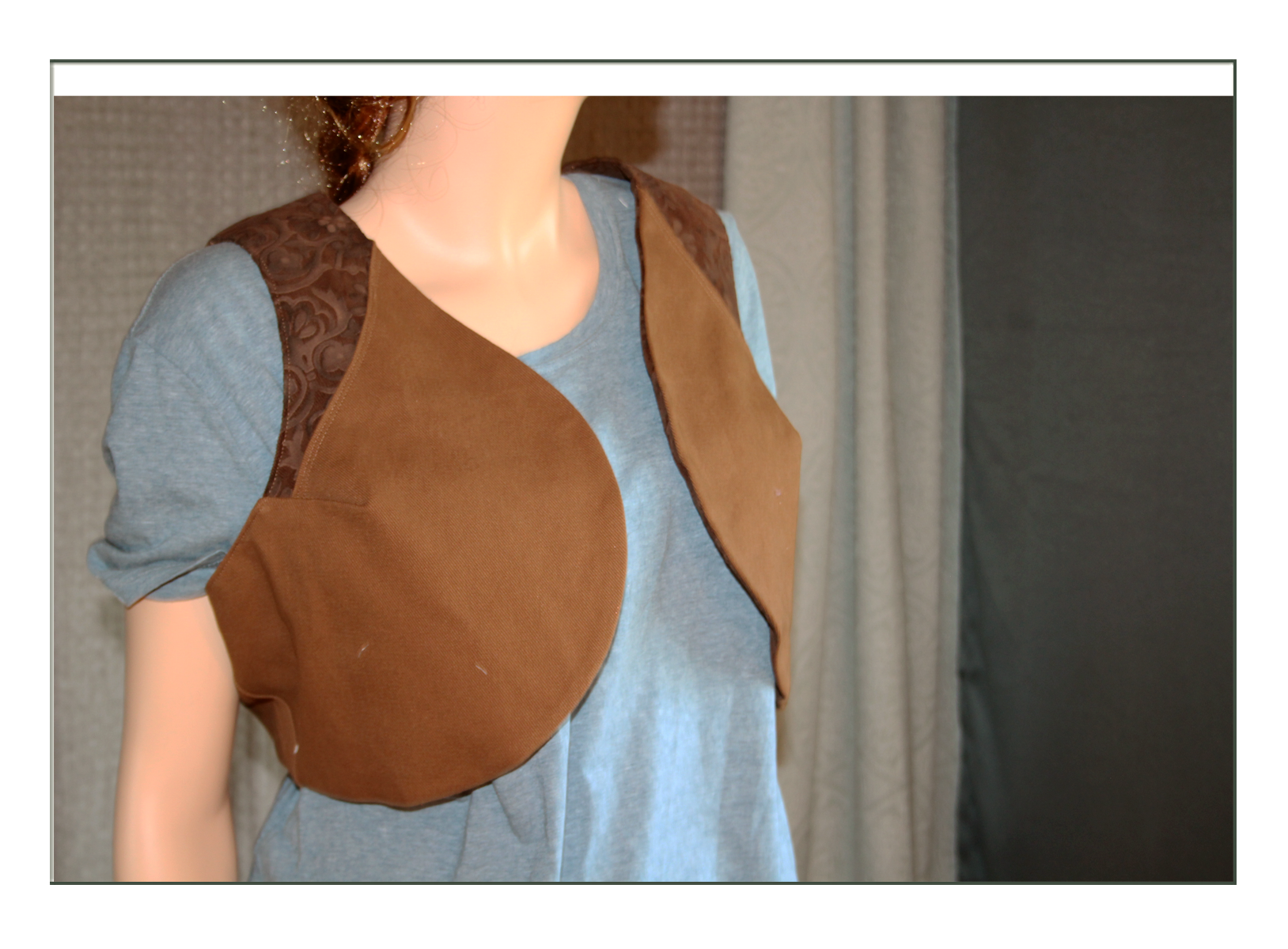
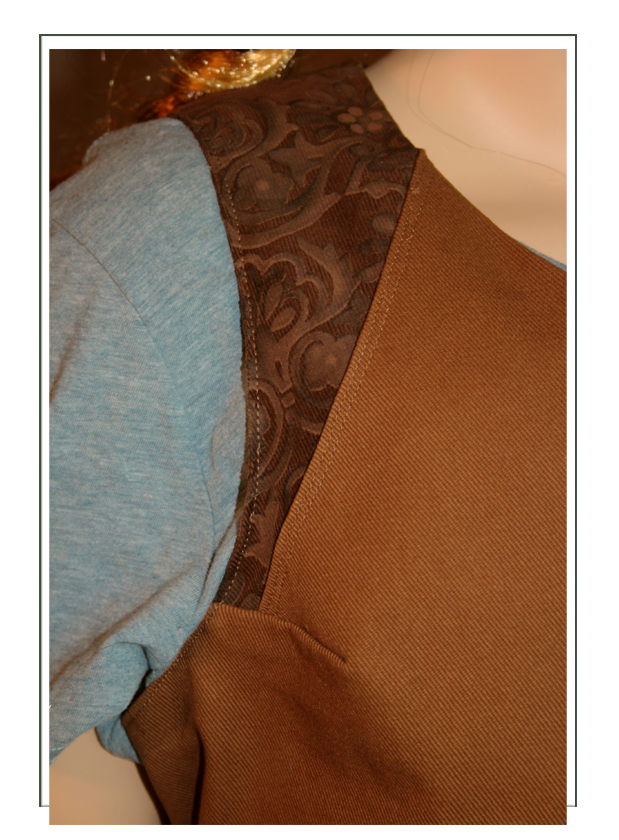
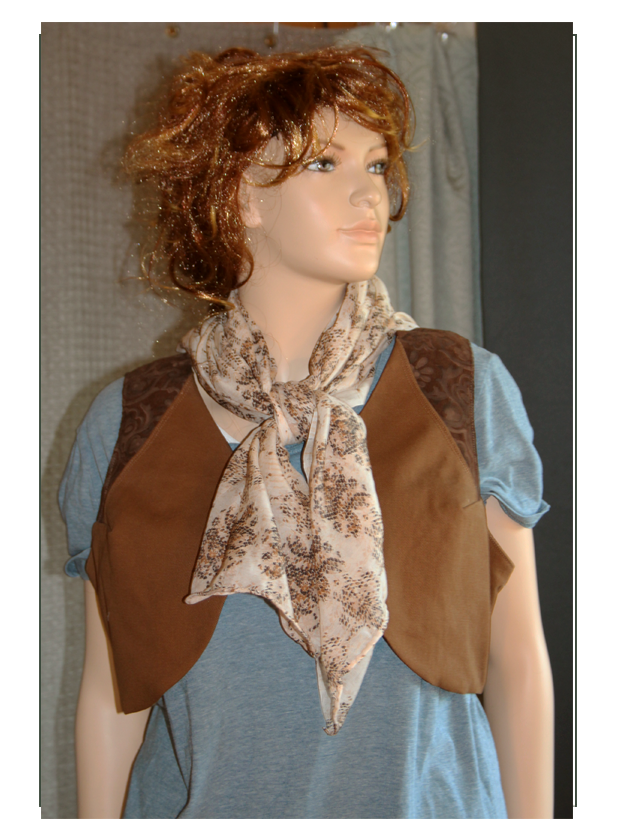
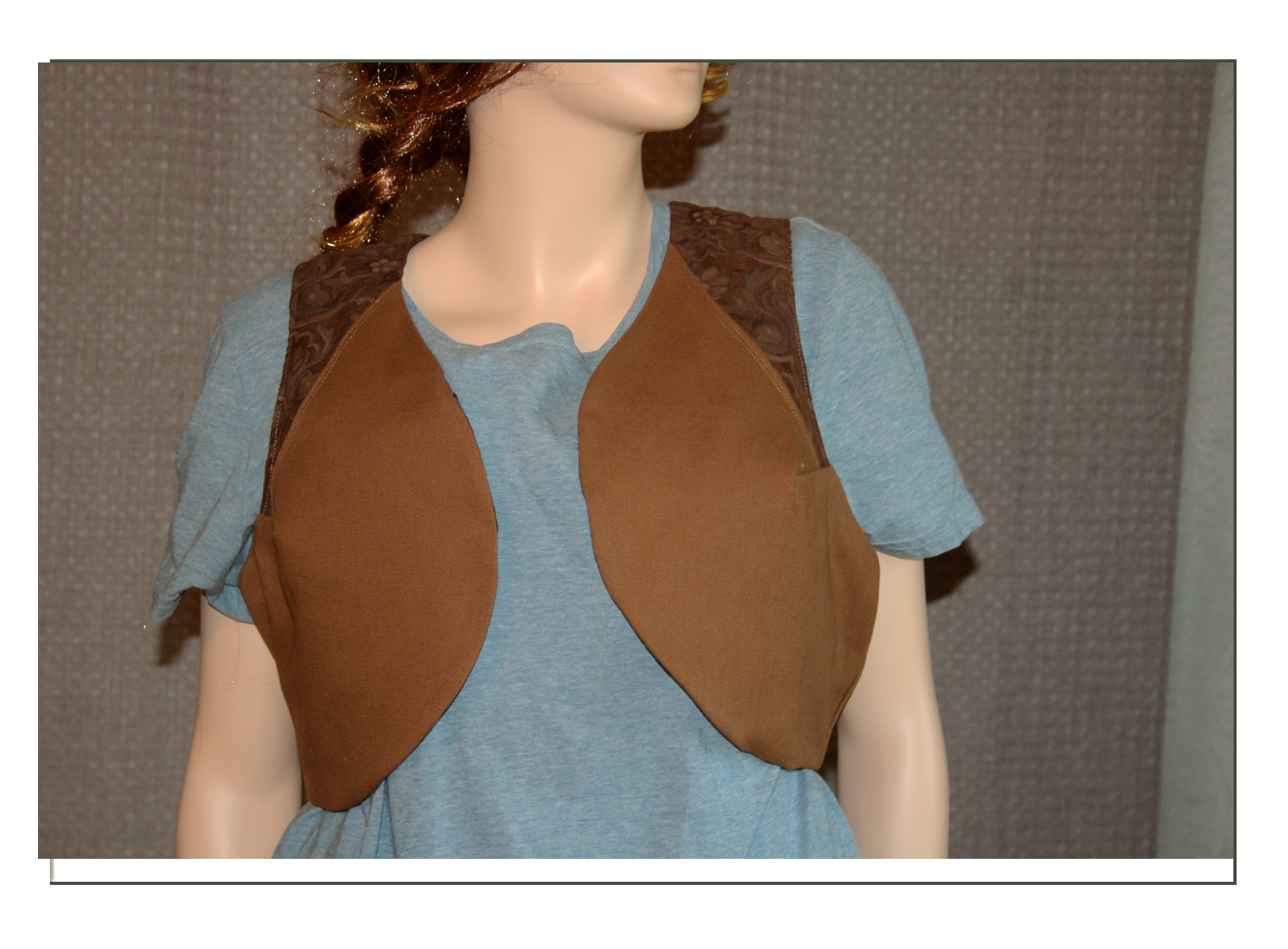
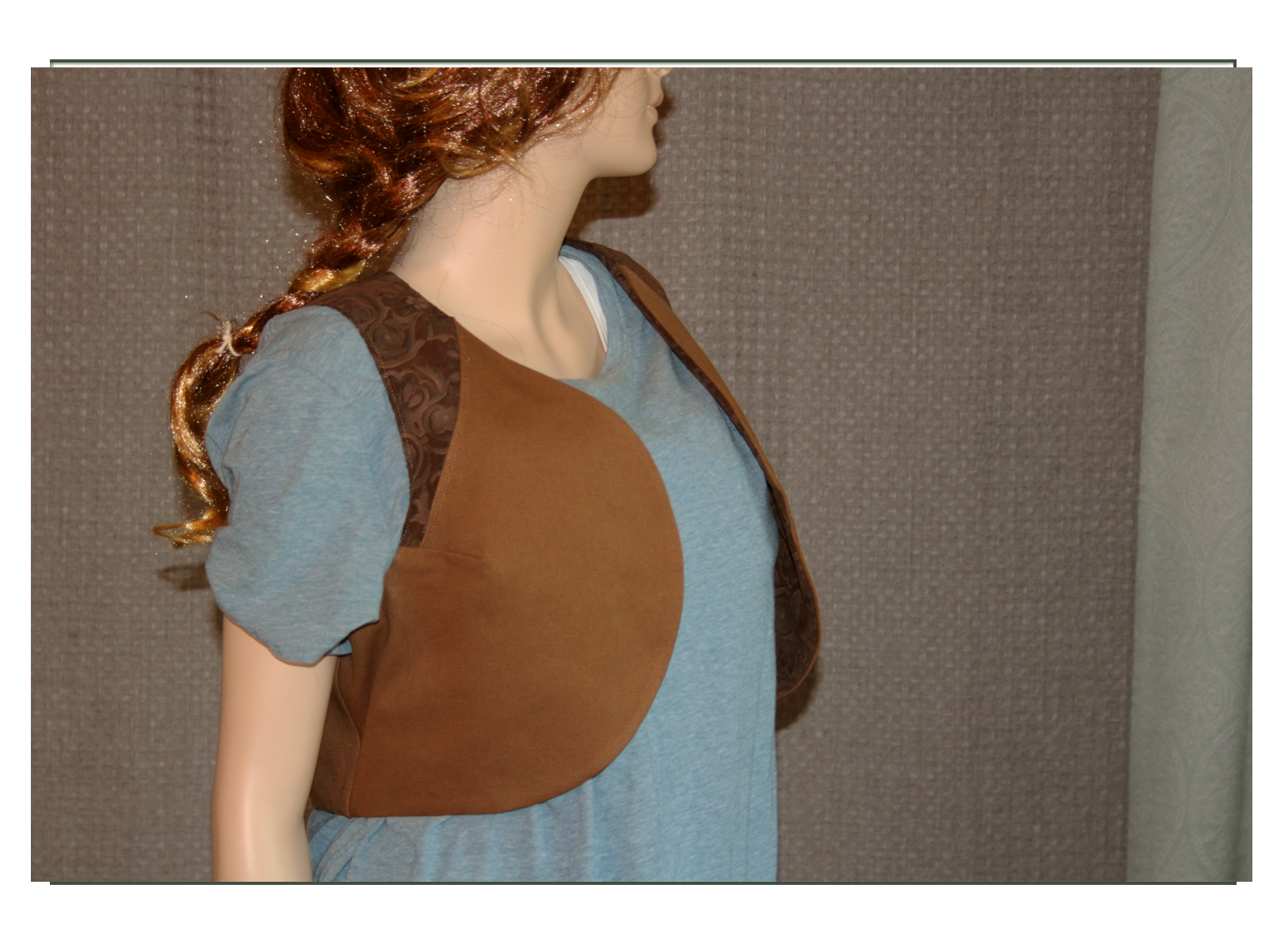
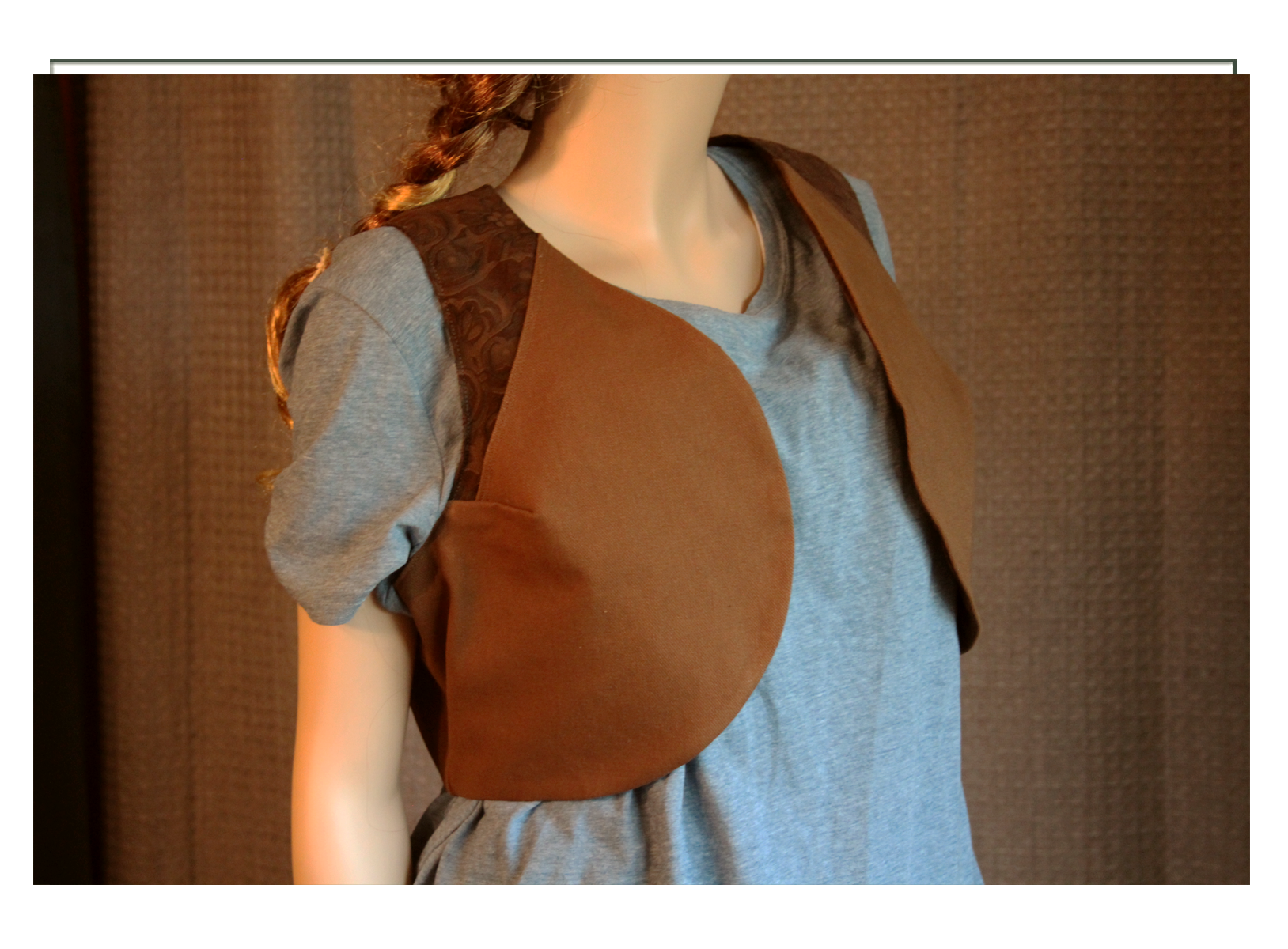
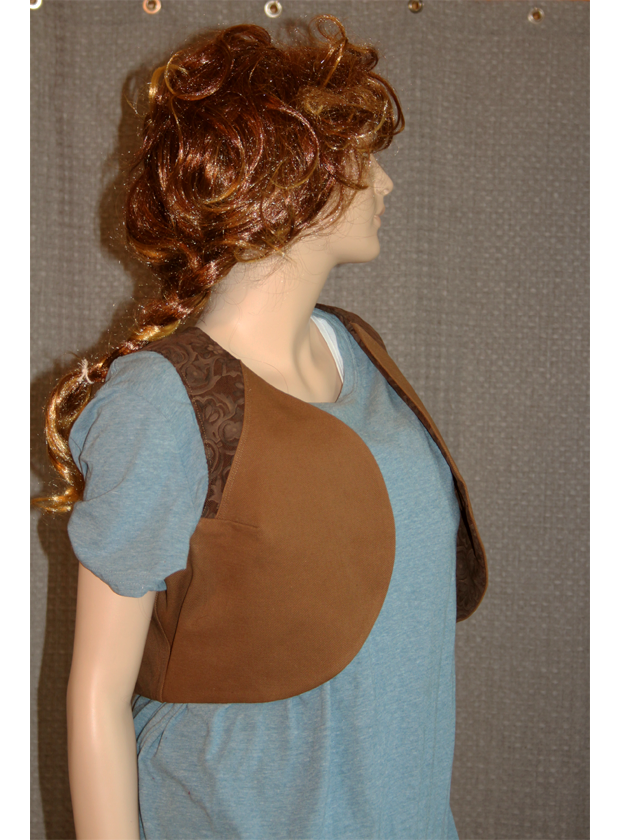
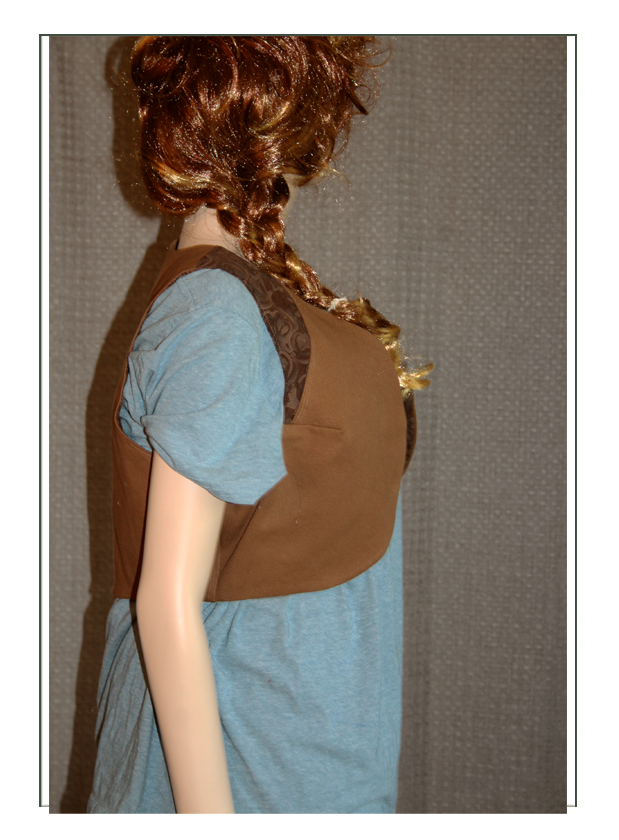
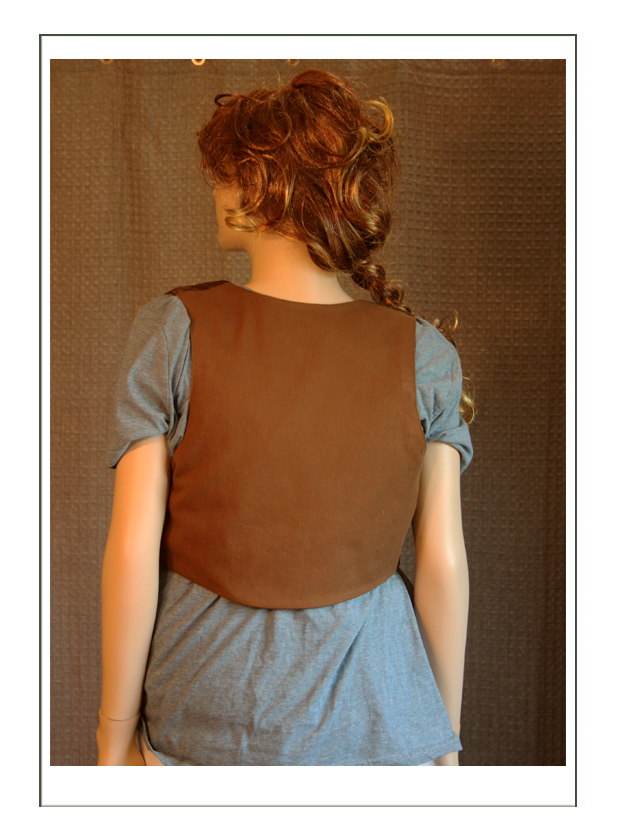
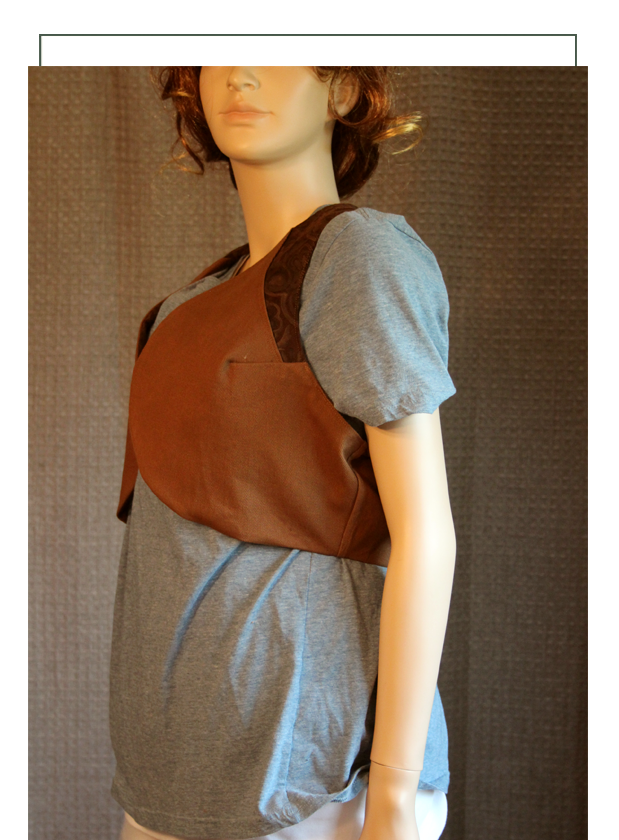
Boots & Gaiters
The ride astride woman of the 1890’s to 1910’s for the most part would not wear trousers. This meant she also had no protection for her legs from rubbing against the horse or the horse’s tack (saddle and equipment). In situations where a man would be wearing trousers with chaps (leggings), the woman was already stretching the rules beyond societal norms to be wearing a split skirt! She therefore would (mostly – of course there were always exceptions) need something to protect her lower legs.
The answer was a gaiter or legging. Built the same as men’s leggings from the 18th century (it seems nothing is REALLY new in fashion by the 1890’s – they repeated a lot of 18th century concepts), these wrap around the lower calf to the knee. They are worn over the boot, which makes them a bit lumpy. This is because historic women did not wear boots like these. The wore a short shoe with gaiters.
These boots are Oak Tree Farms modern reproduction and include 2 historically inaccuracies: hook type lacing and synthetic polyester uppers. Since this is for theatrical production though, it’s the overall effect we’re after – and fast. The gaiters are made of real lambskin, died to a variable medium brown to match the skirt. Grommets are antique brass large metal with round matching lacings.
These came out to be a bit coarse in appearance, but they will look great from the distance that the audience is from the performers, plus they will be easy to put on. The mannequin has no calves, so these will look much better on Kateri.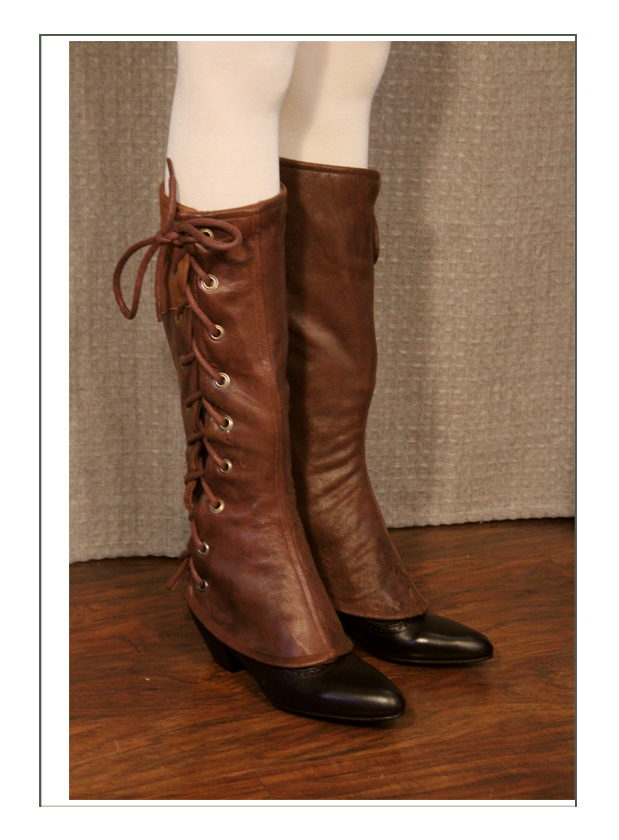
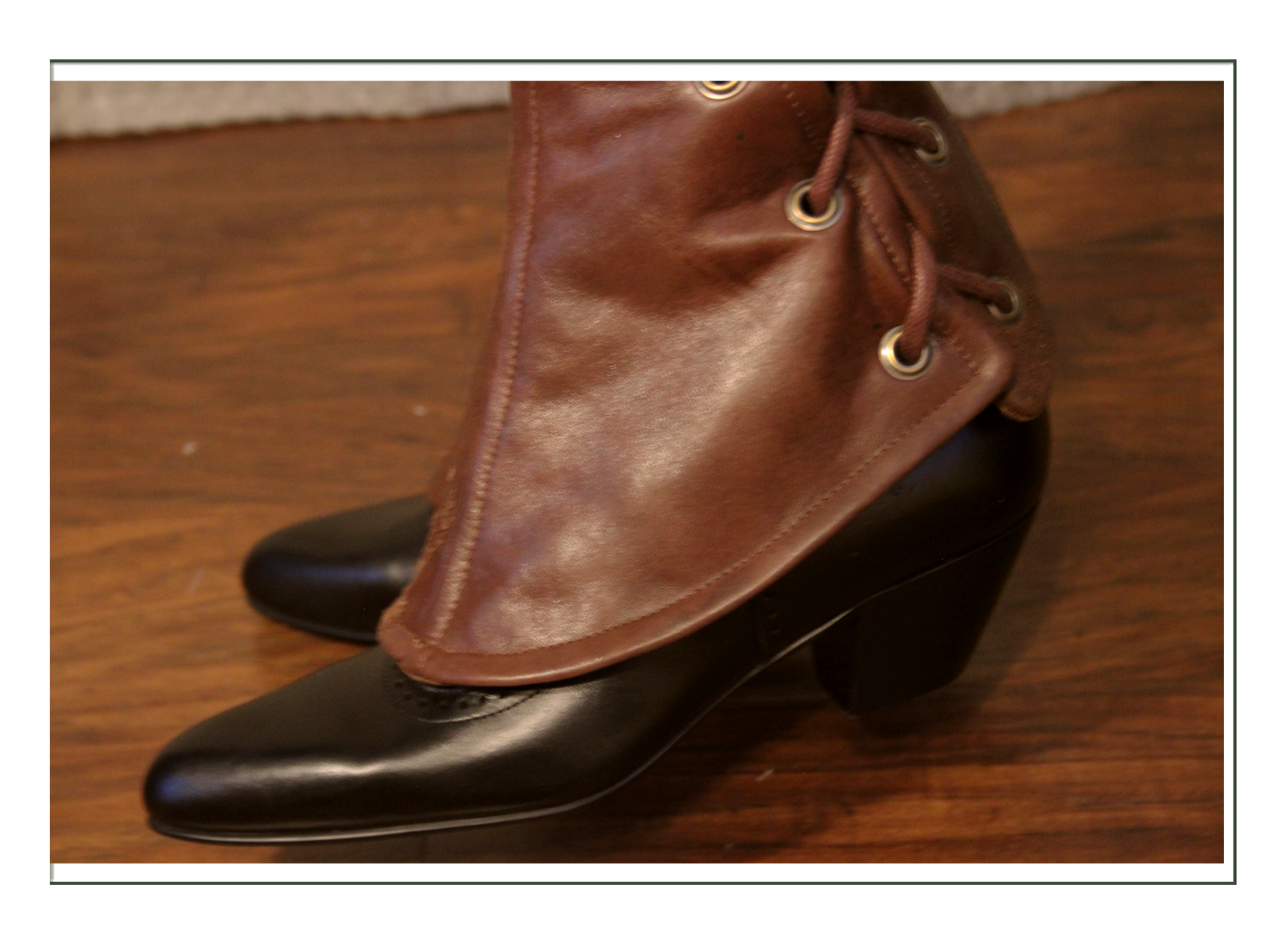
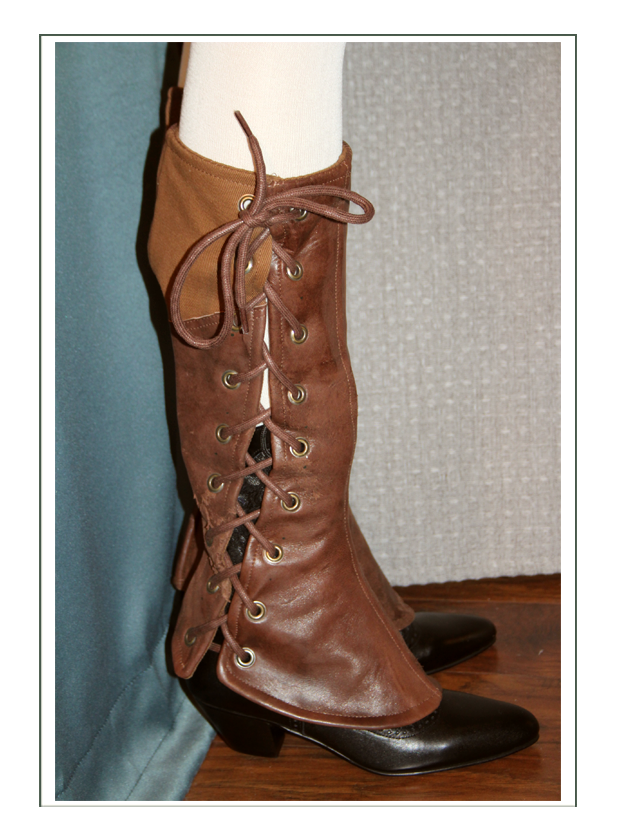
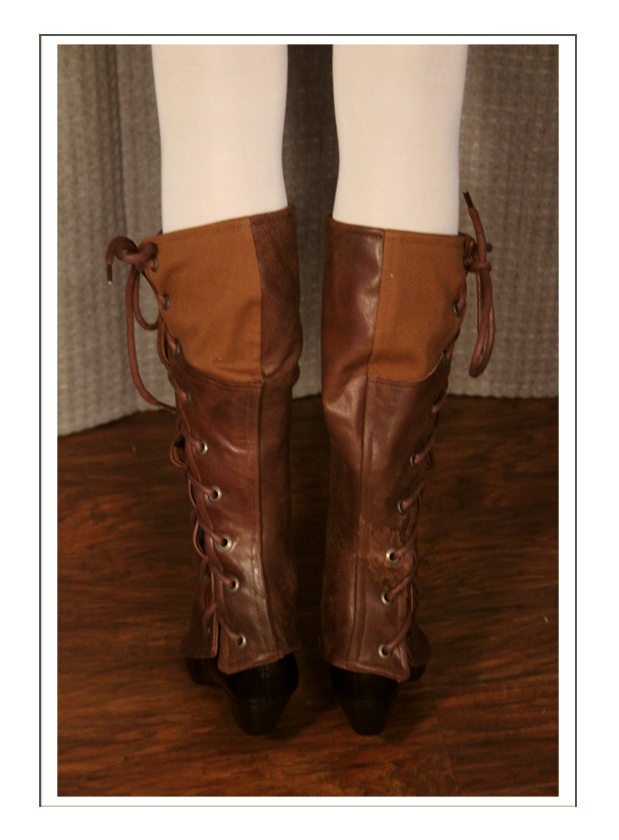
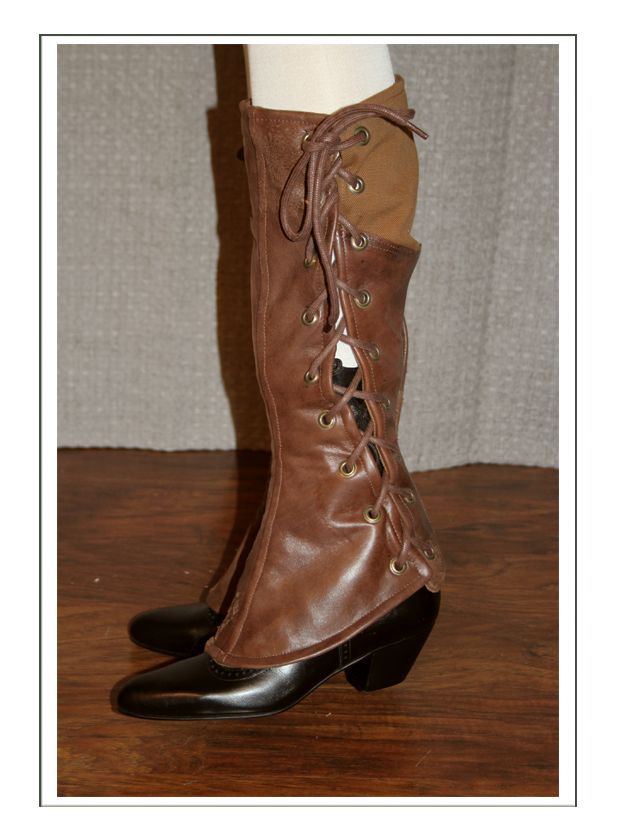
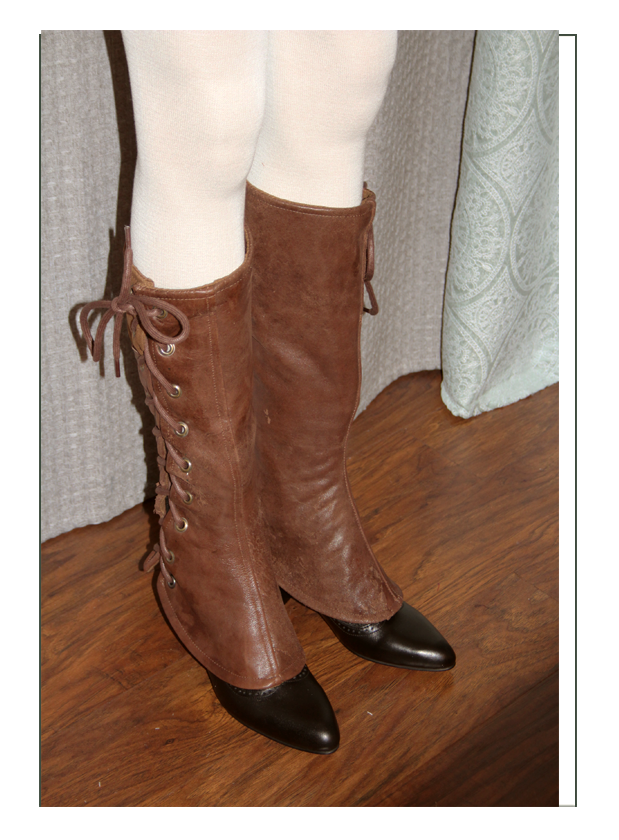
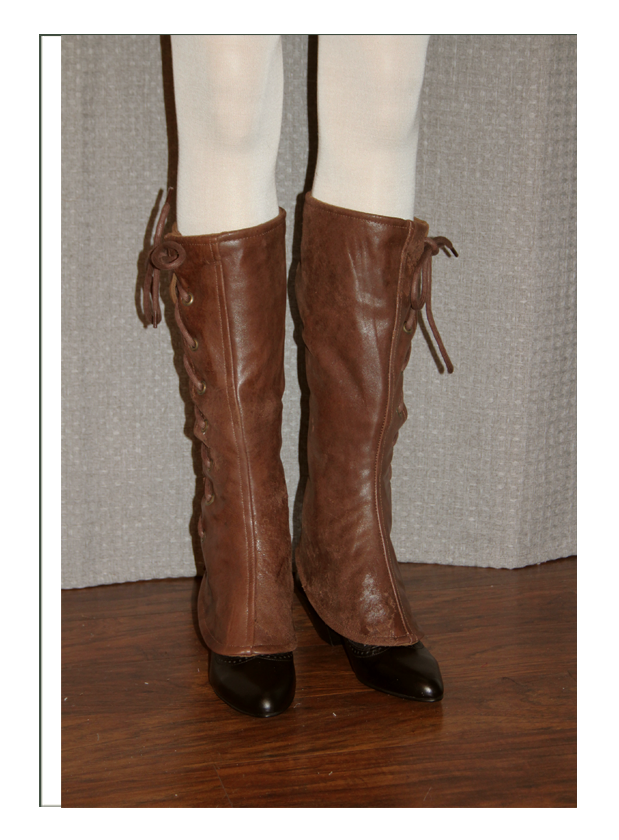
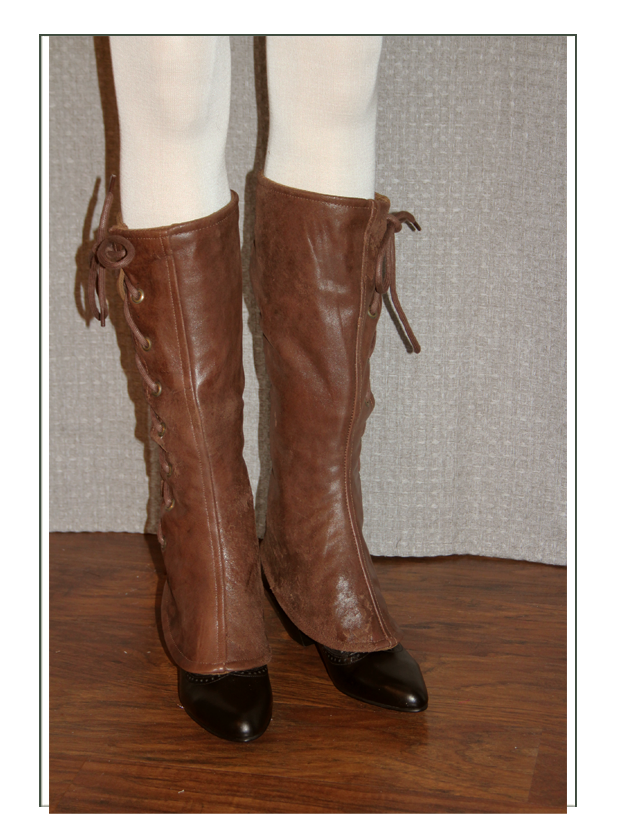
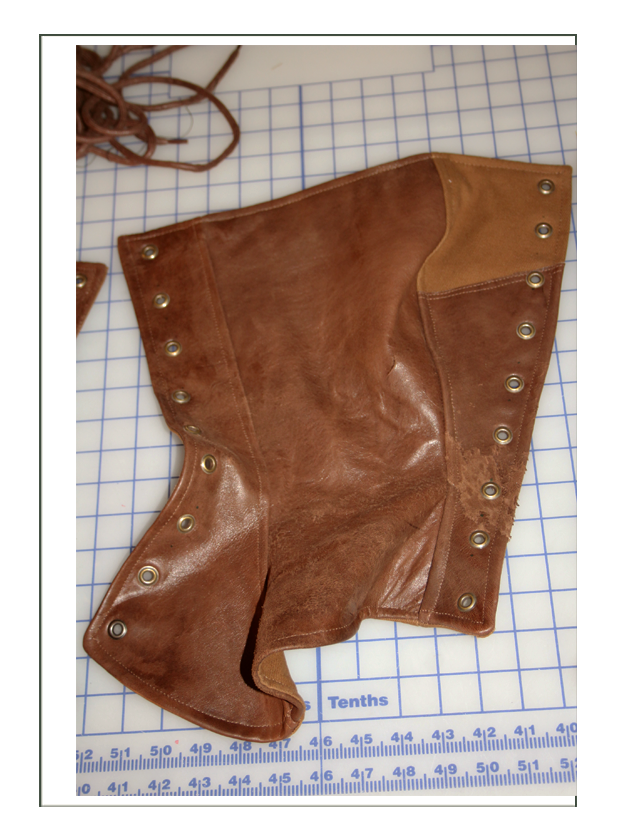
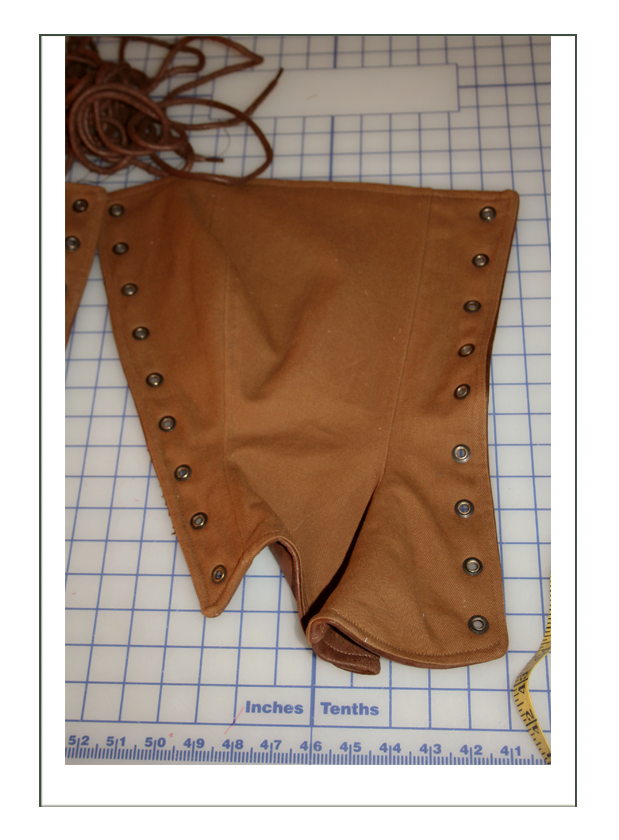
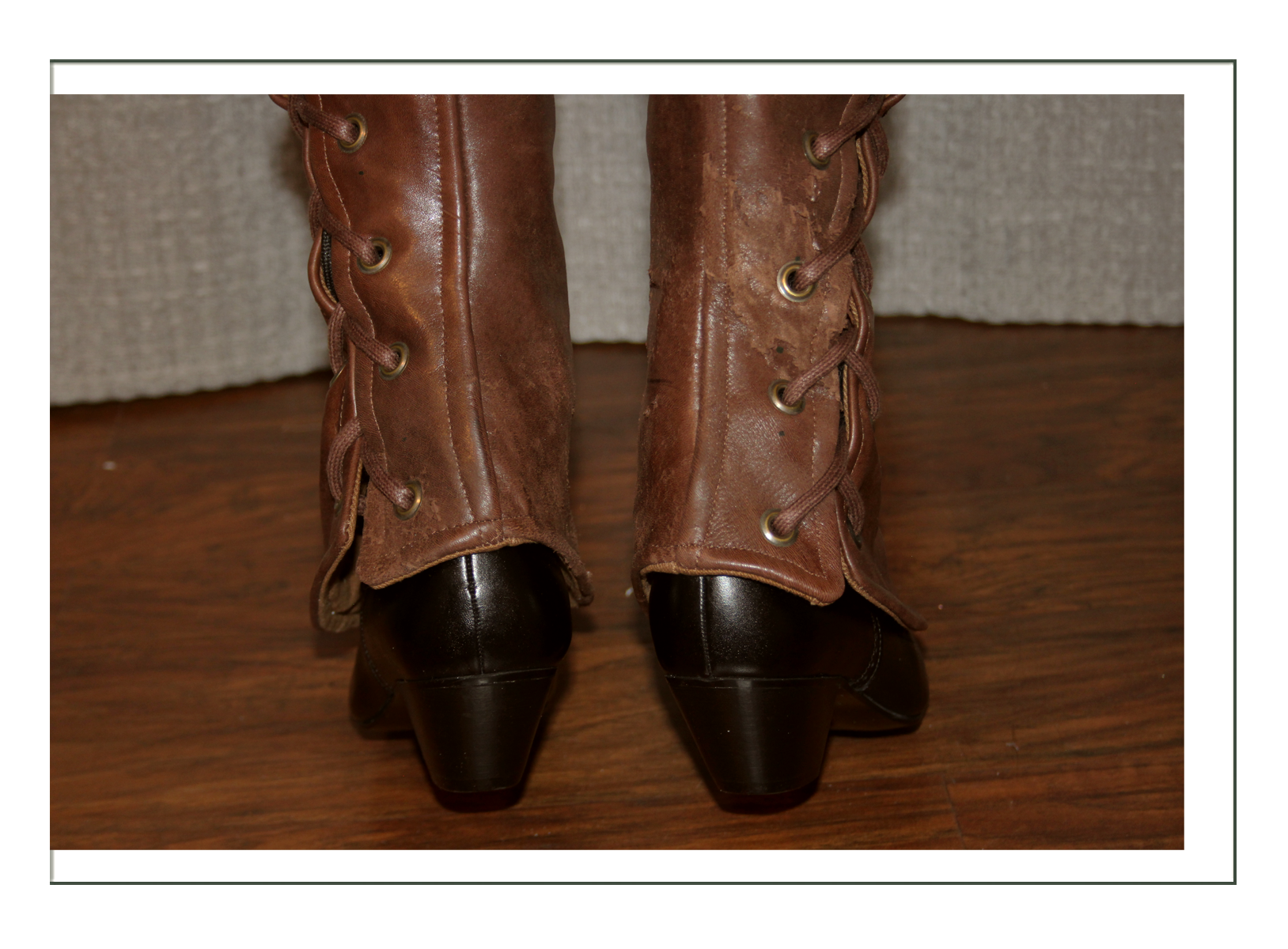
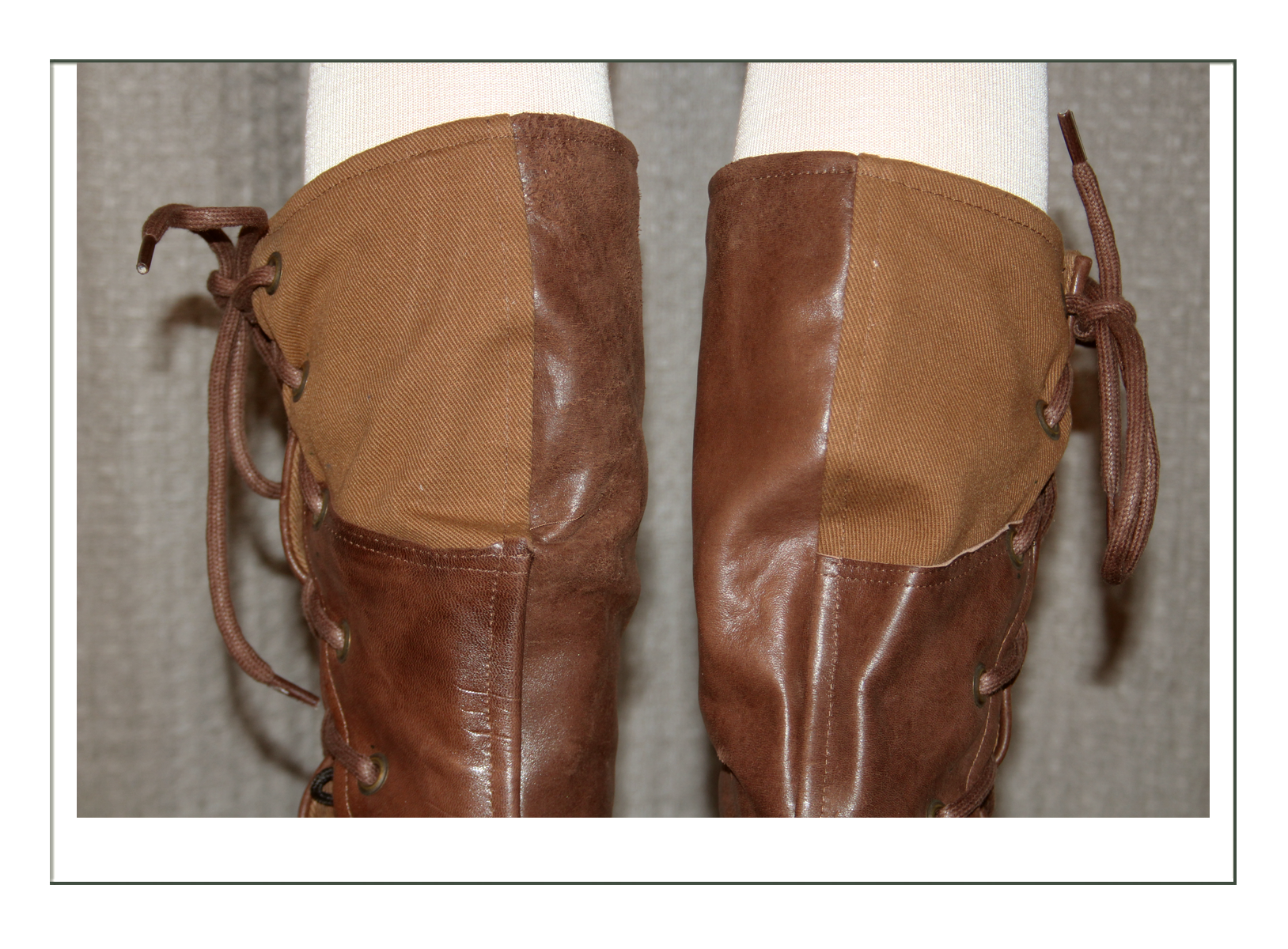
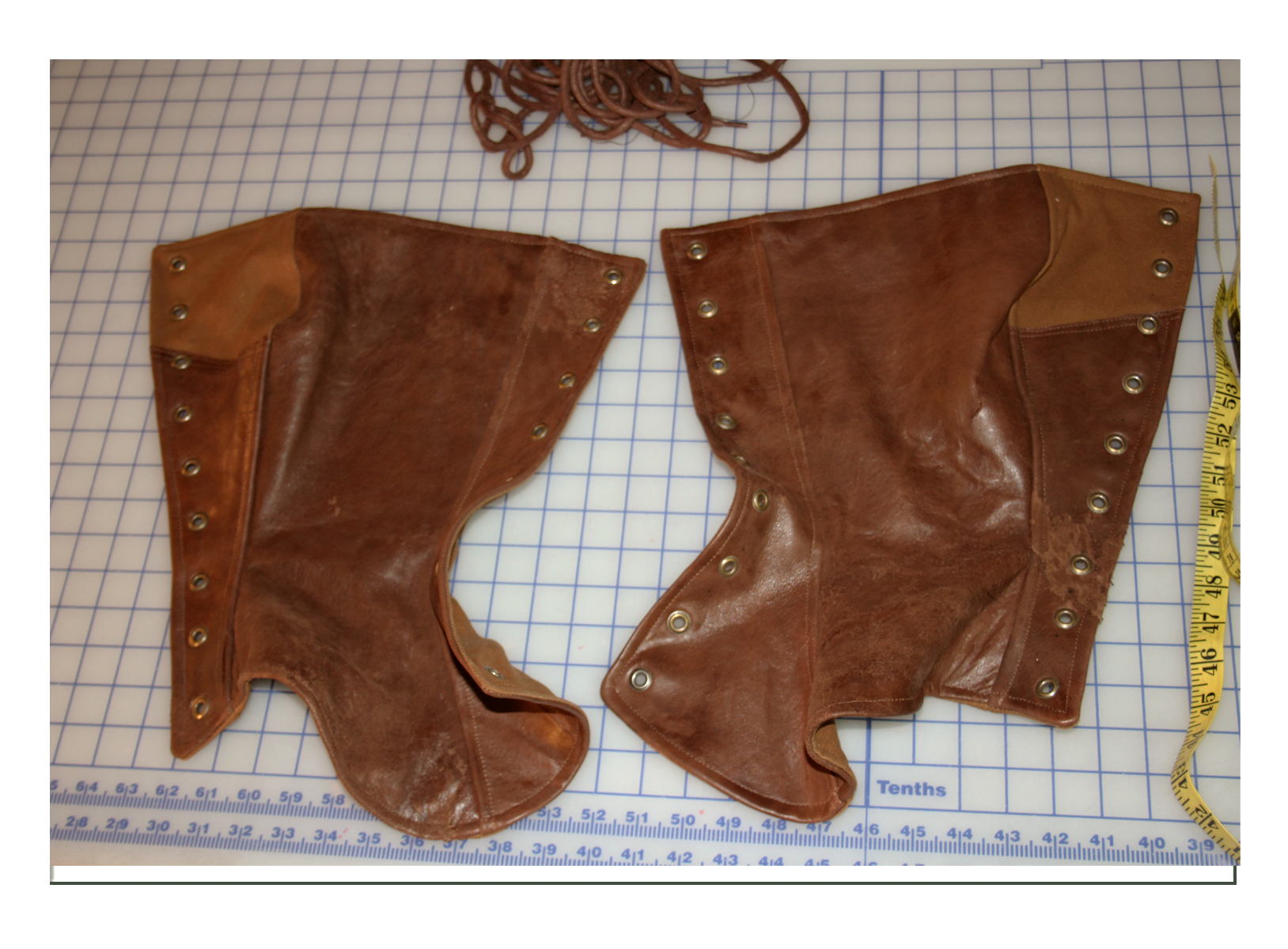
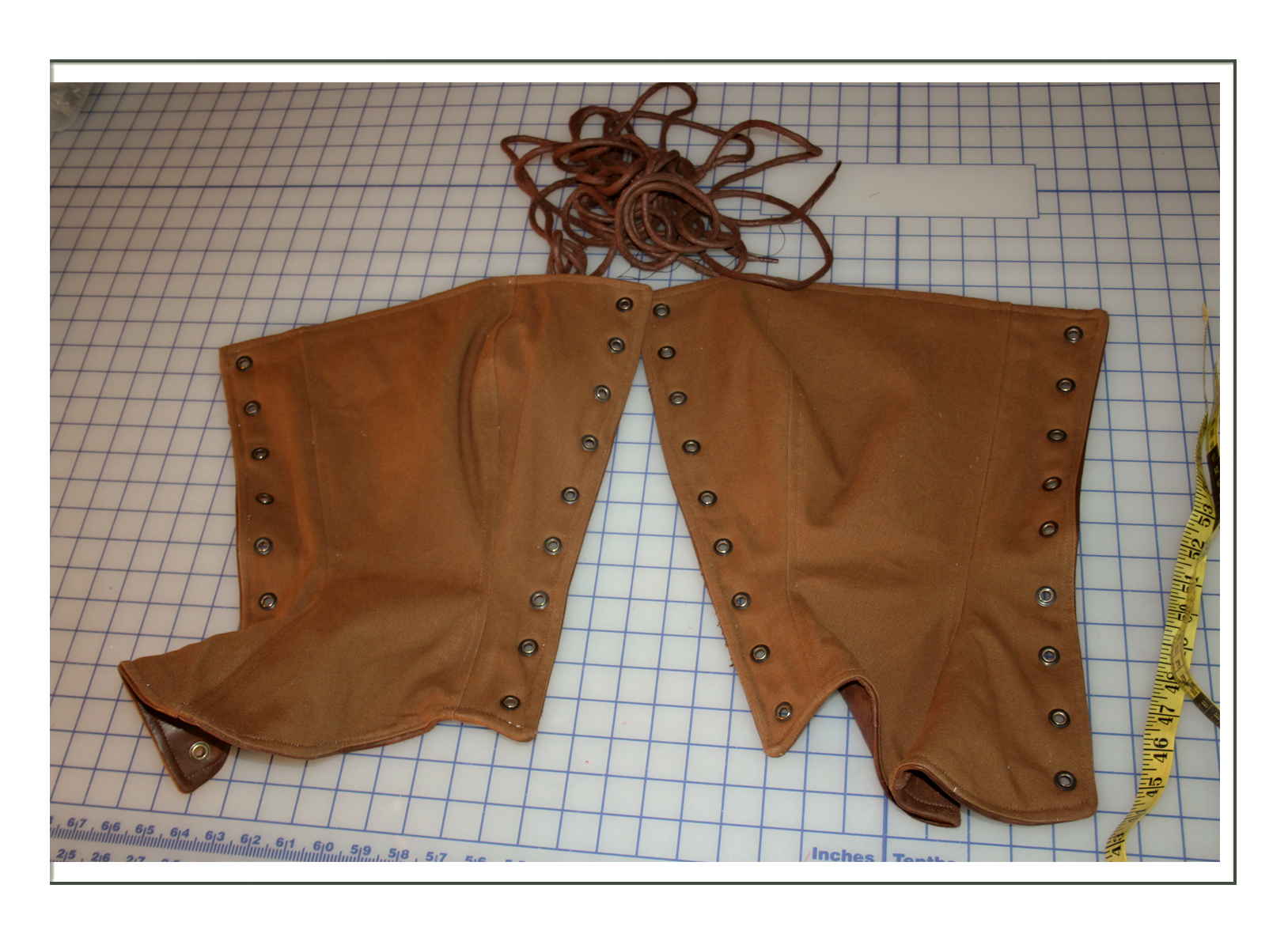
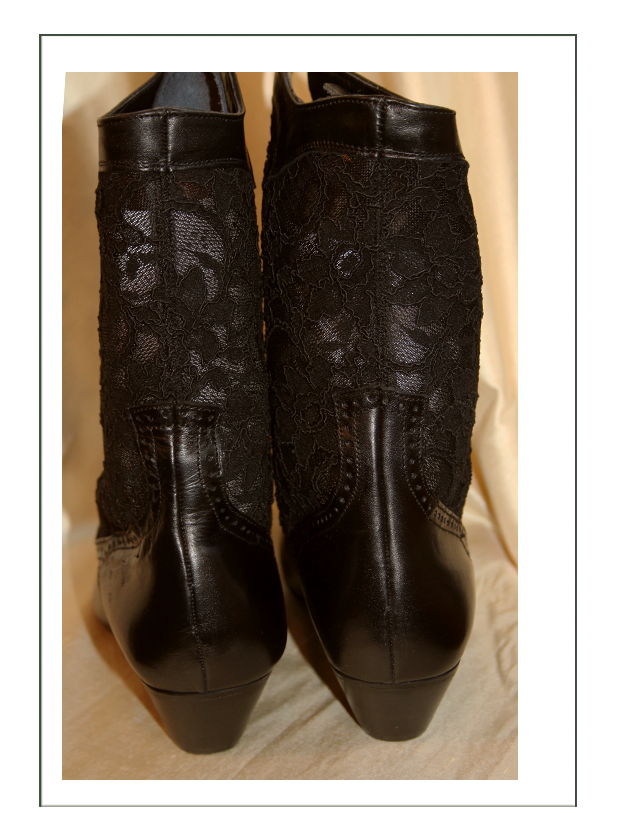
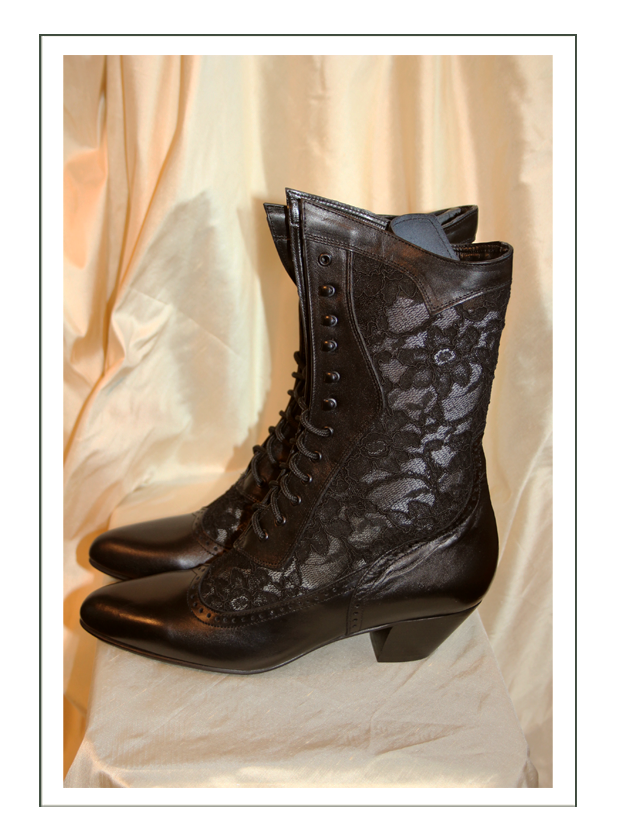
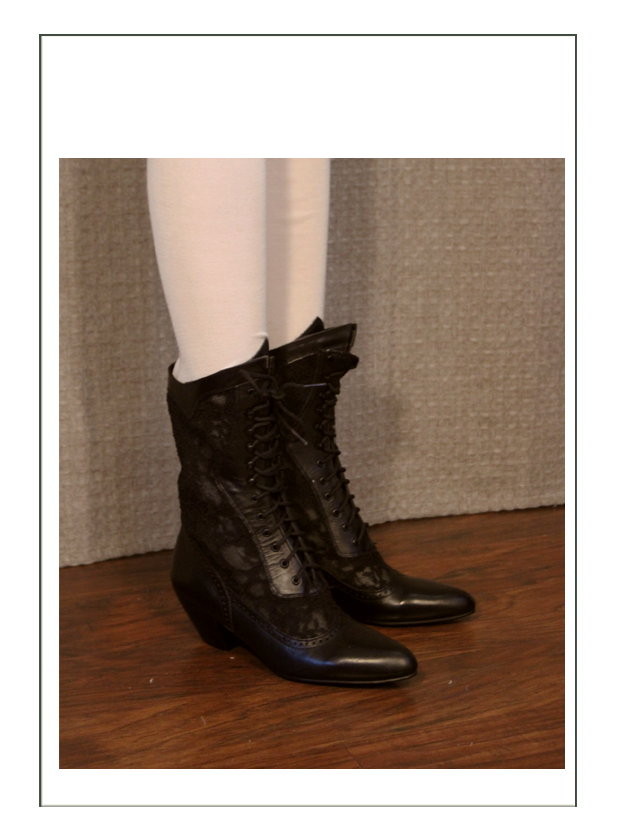
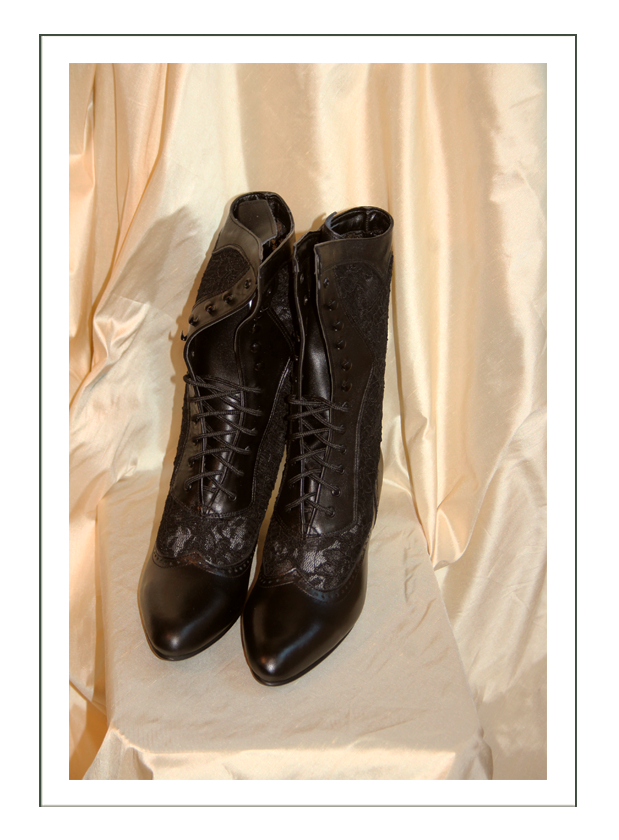
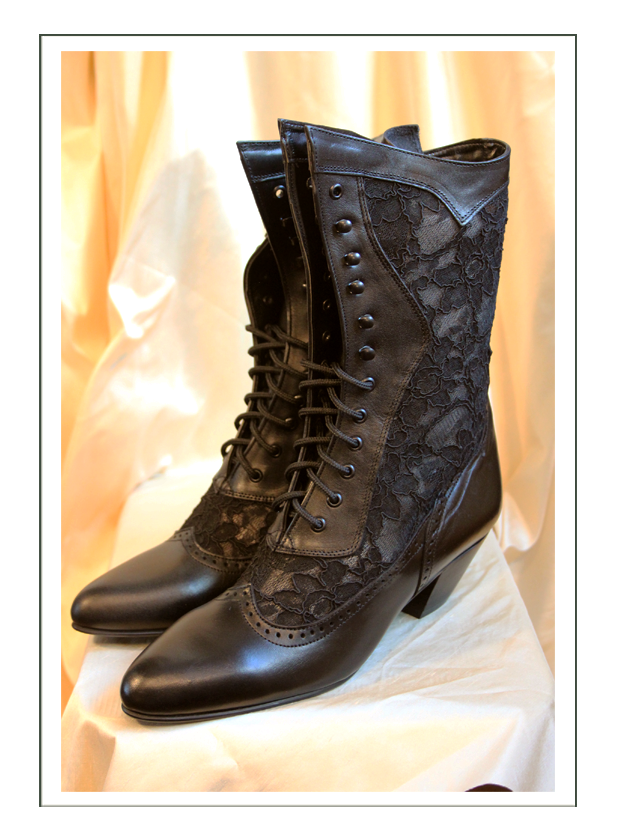
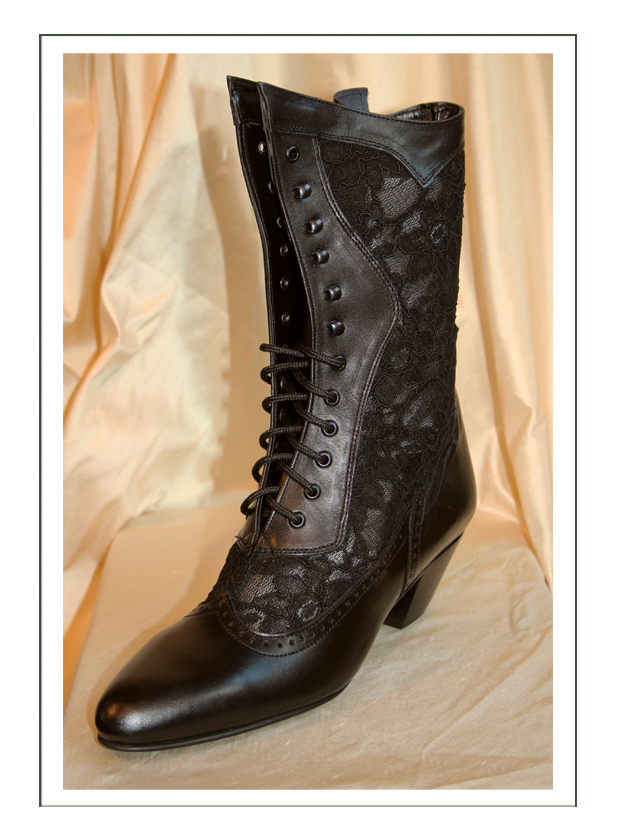
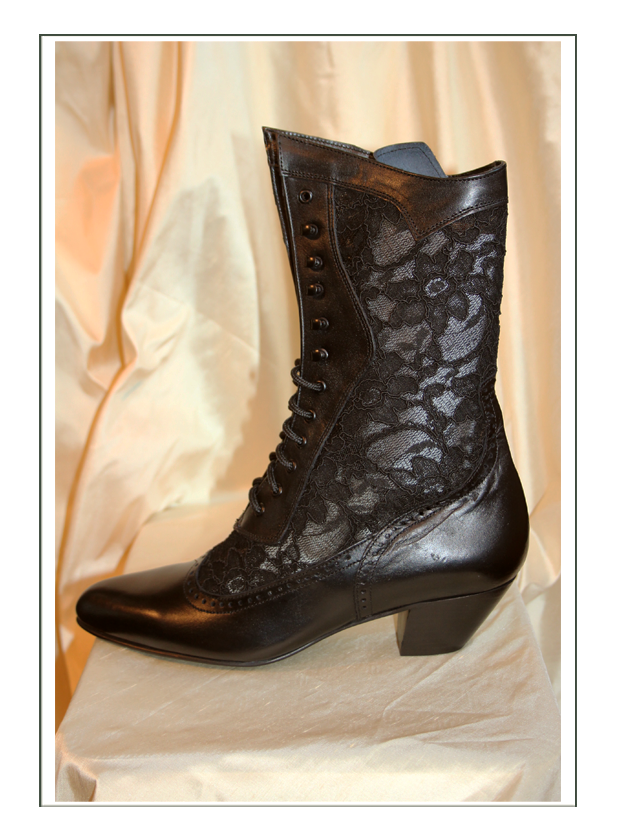
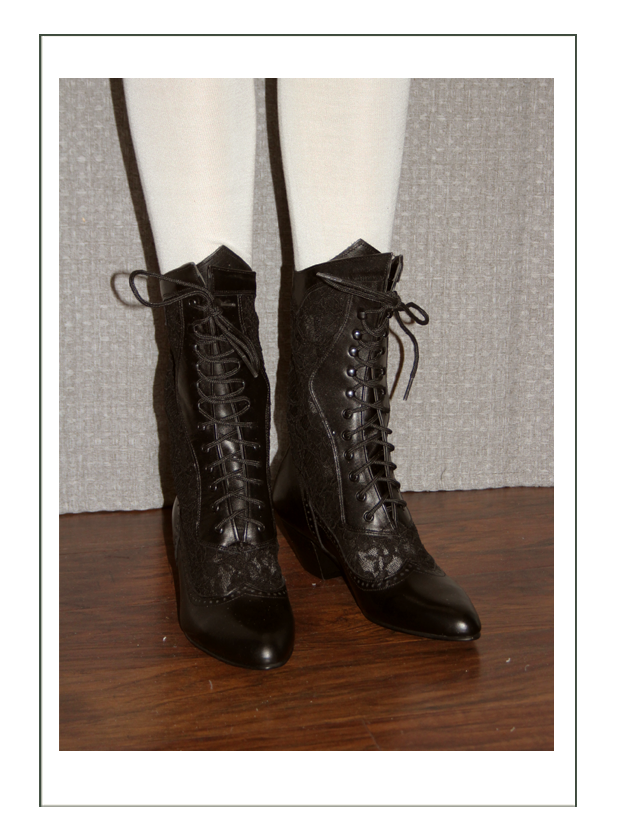
Scarf
This is cotton lawn “snake skin” and can be worn many ways. It has a simple hand sewn narrow hem. No that isn’t for COVID – that’s to rob banks, although a side benefit might be outlaws are safe from COVID because they are wearing masks…

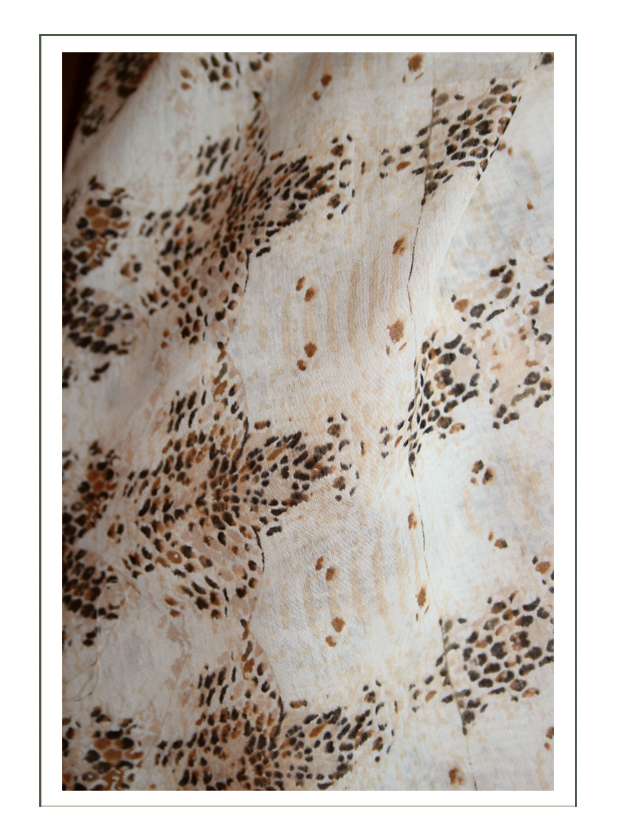
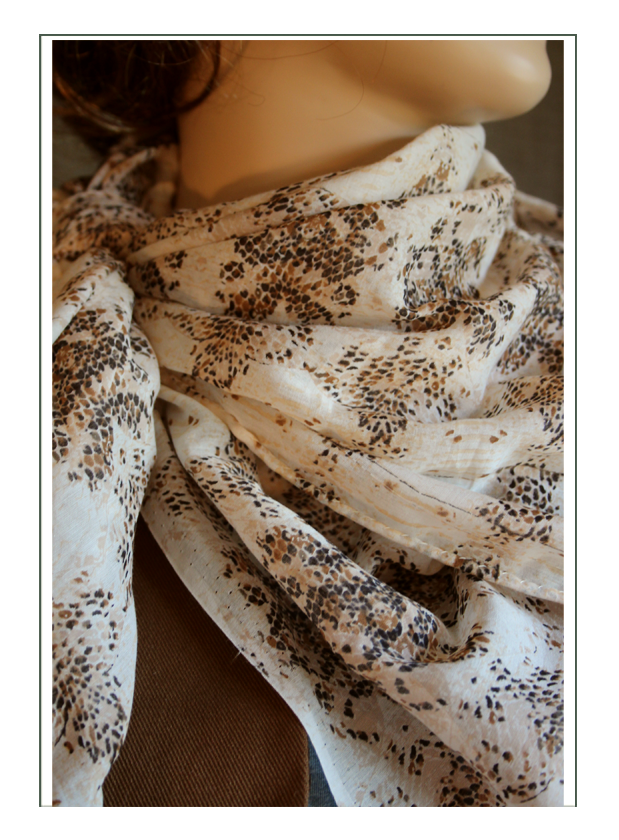
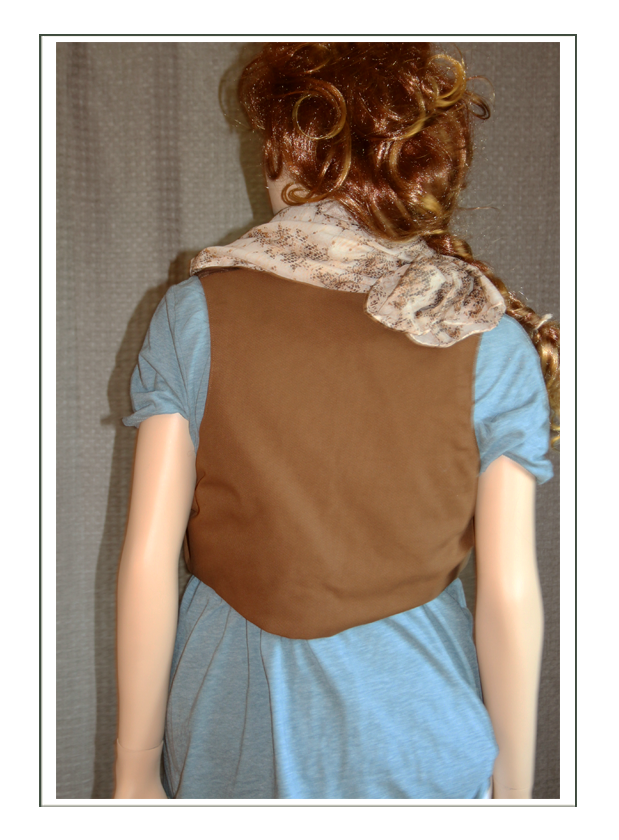
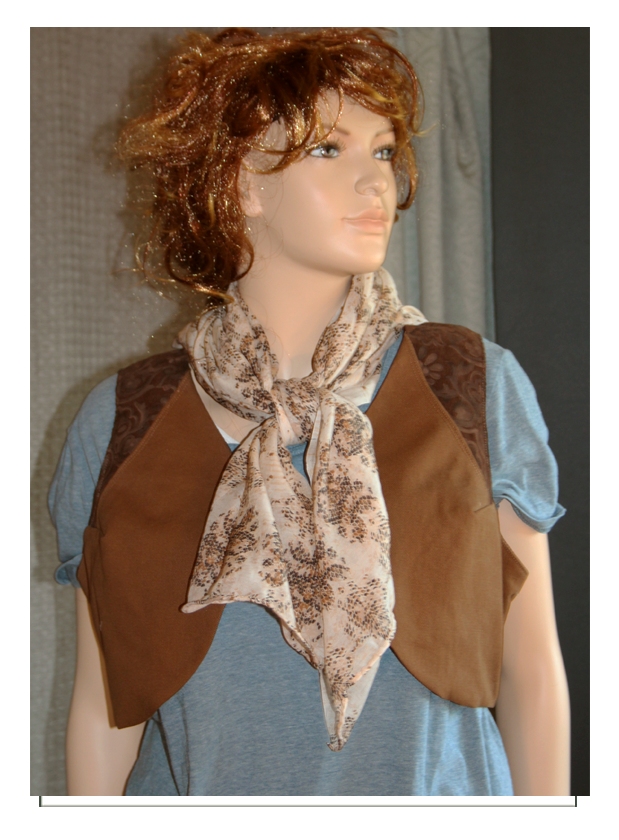
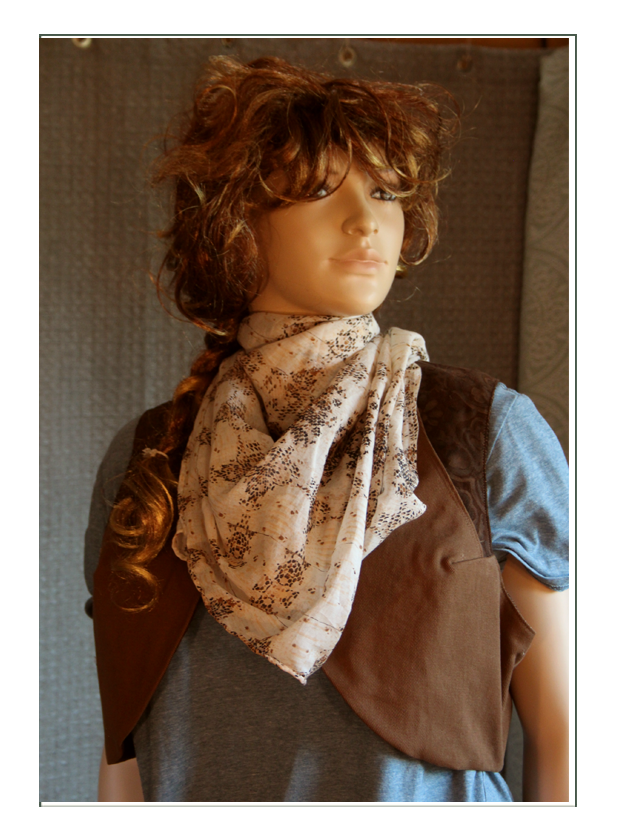
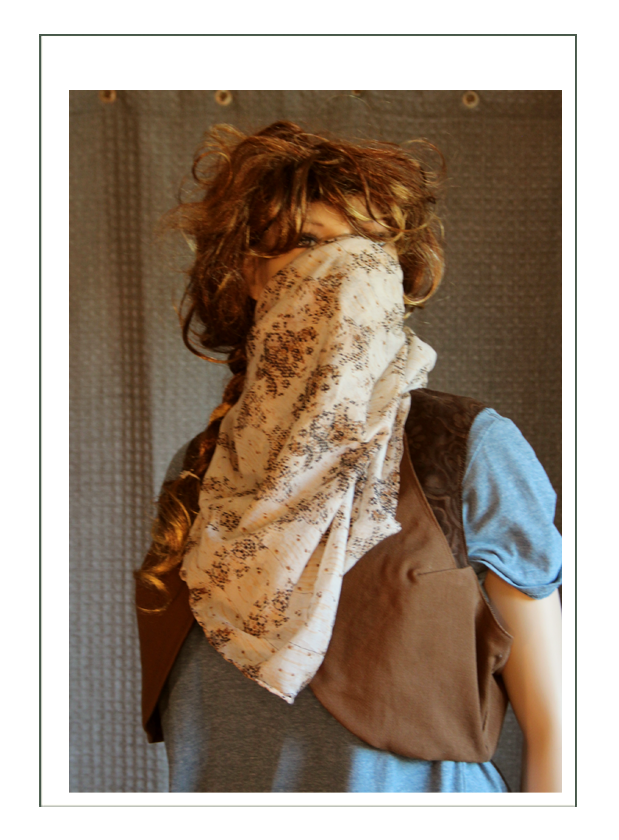


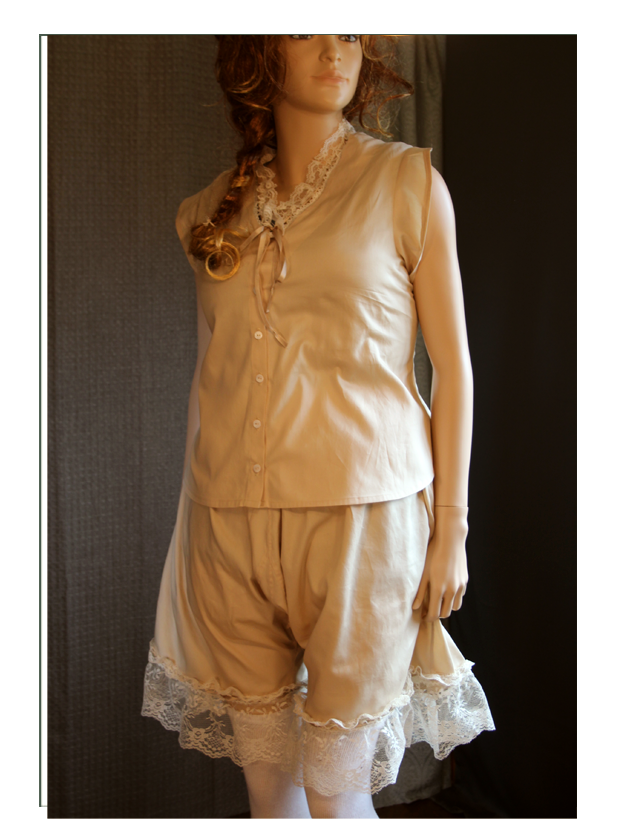
Camisole
100% cotton sateen for comfort, with easy front button for self-dressing and bathing in the creek. Note our model will NOT wear a t-shirt underneath! That is only for our mannequin, as she has been padded out to match the model’s measurements, and the shirt keeps the stuffing on her since she cannot be stuck with pins like a dressmaker’s dummy can.
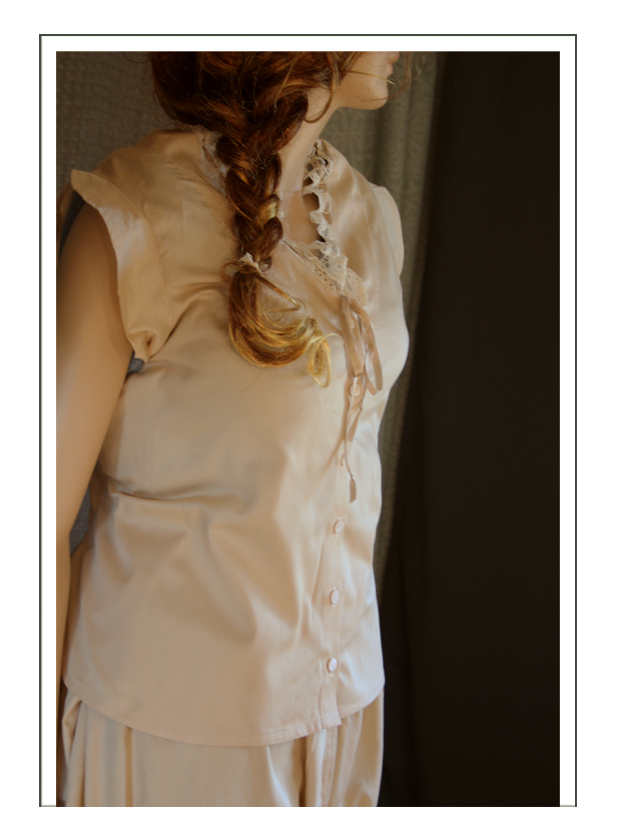
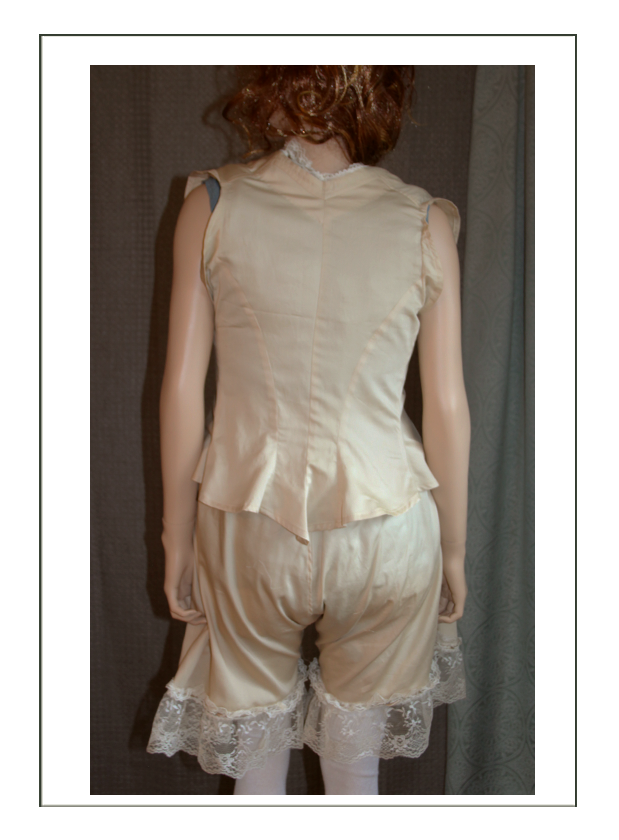
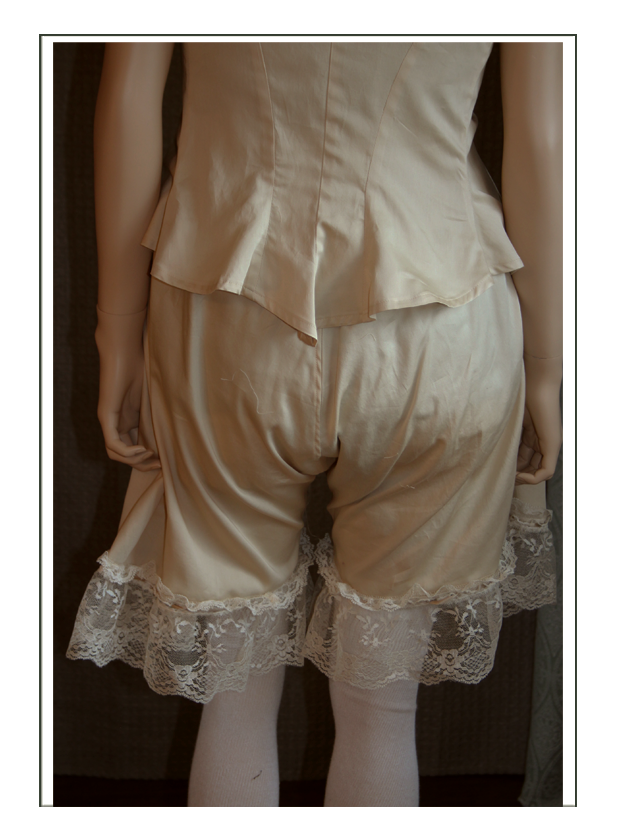
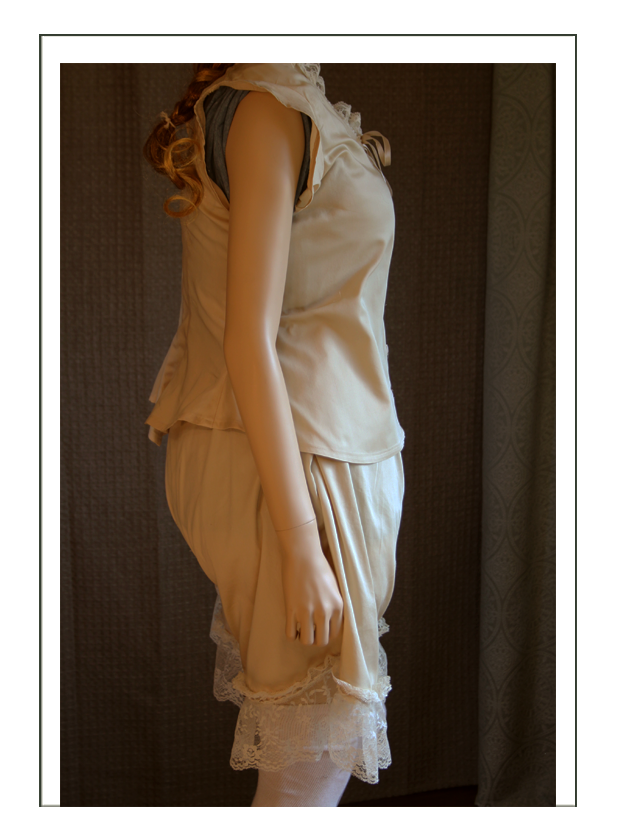
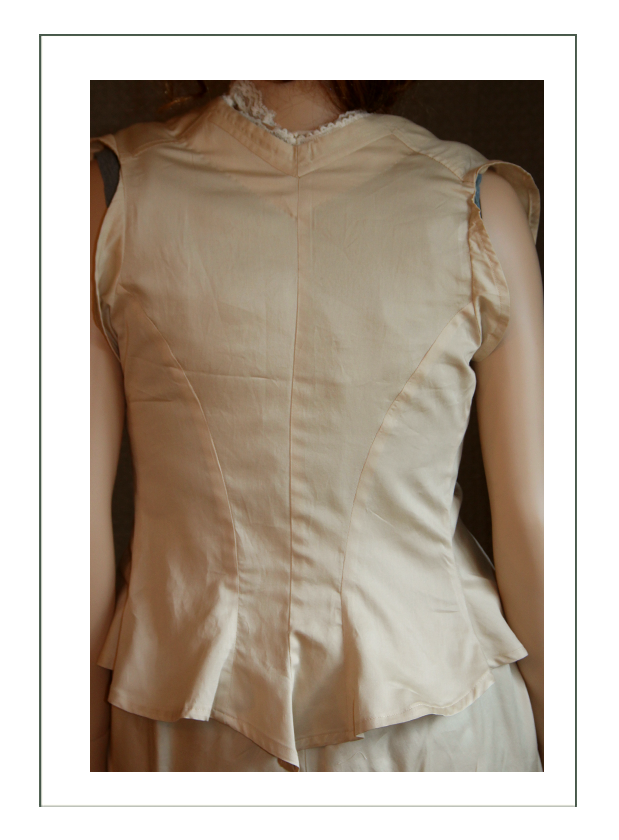
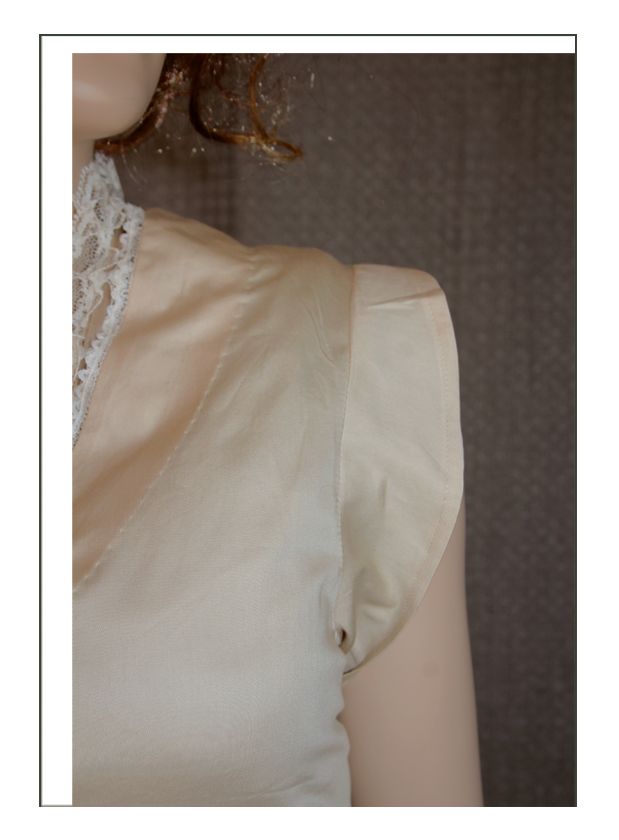
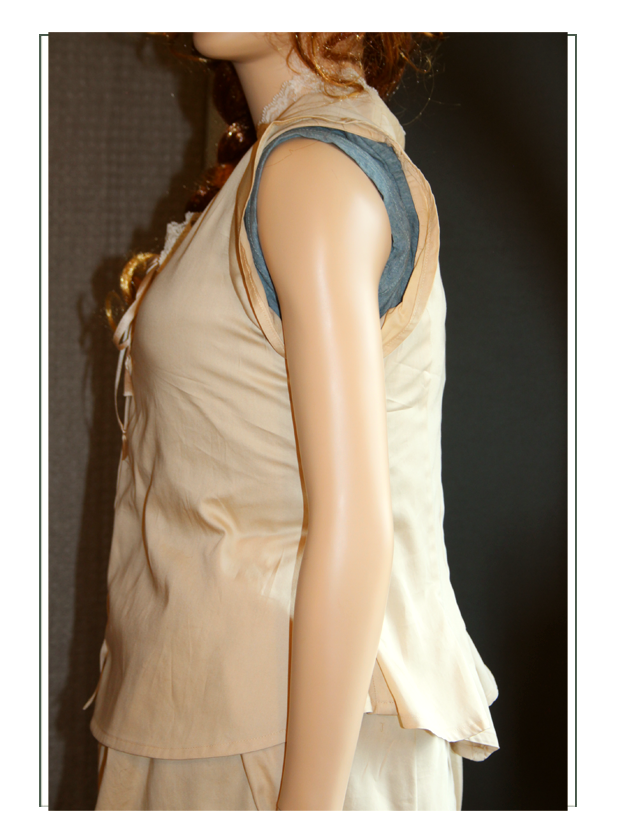
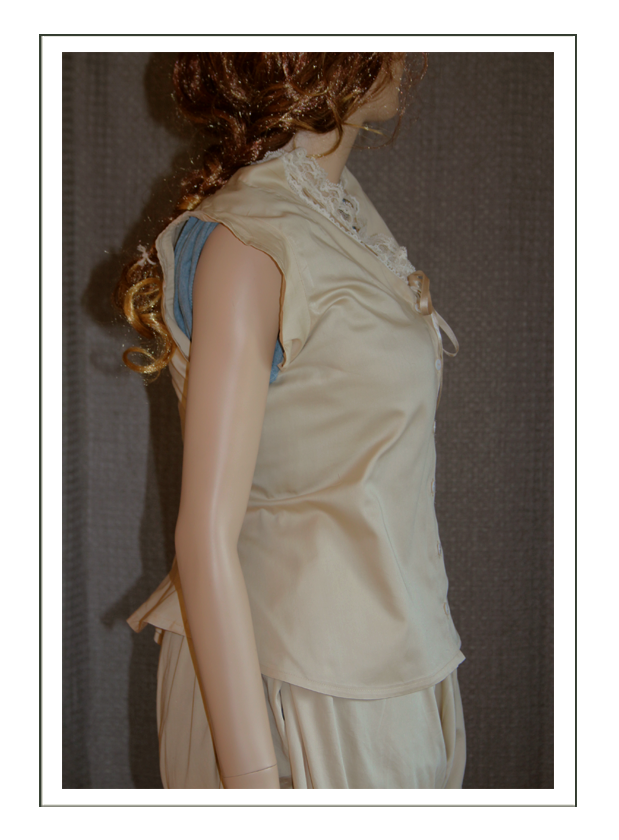
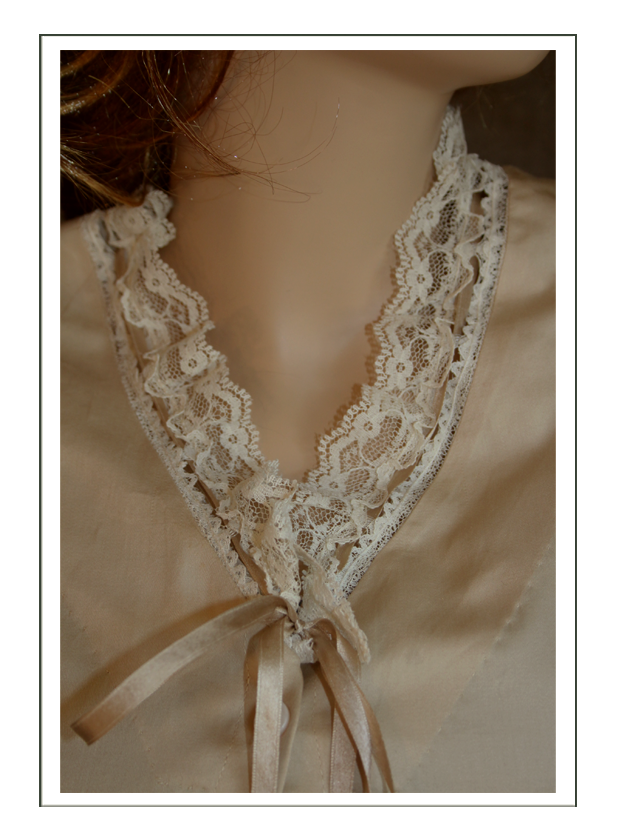
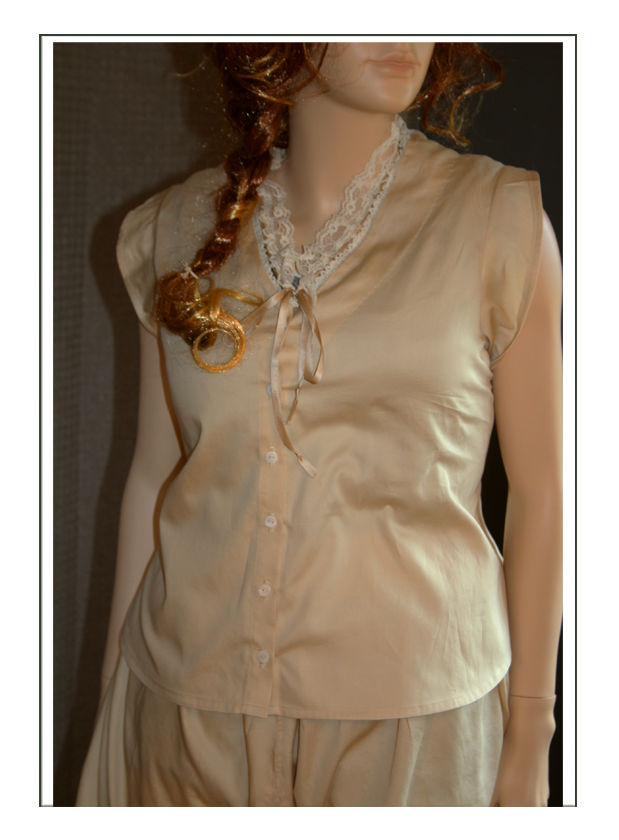
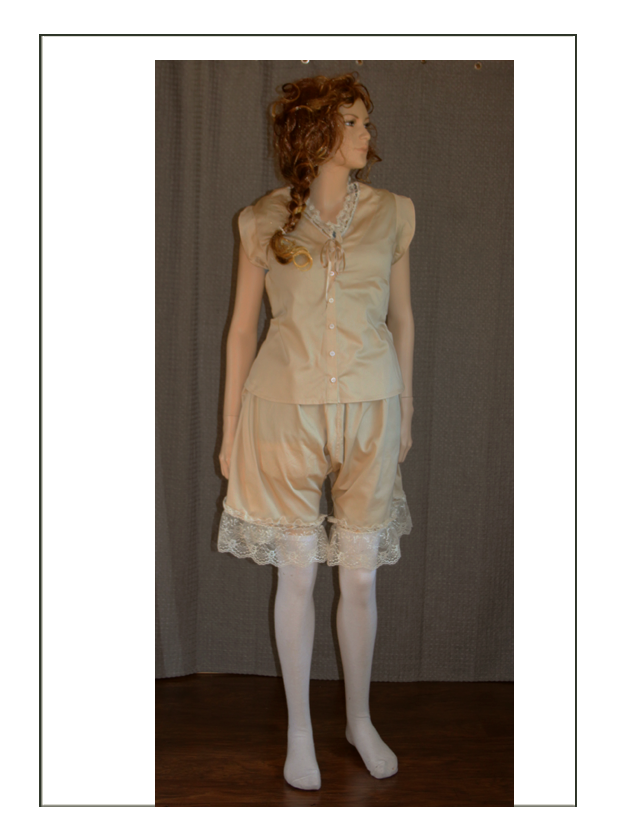
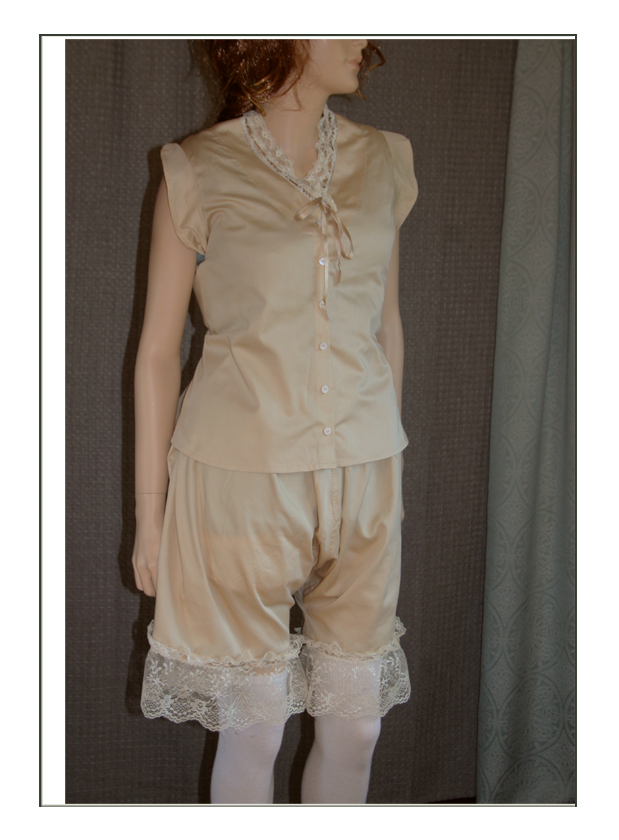
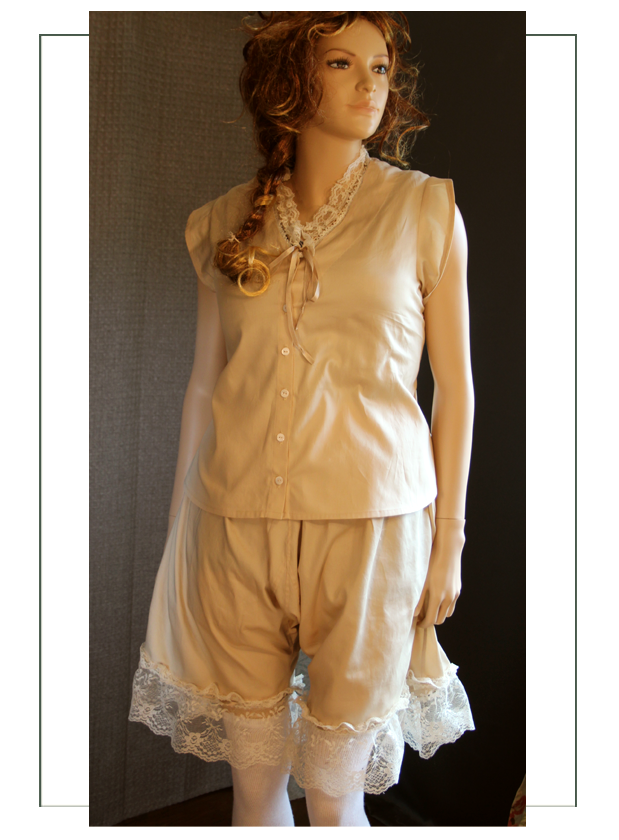
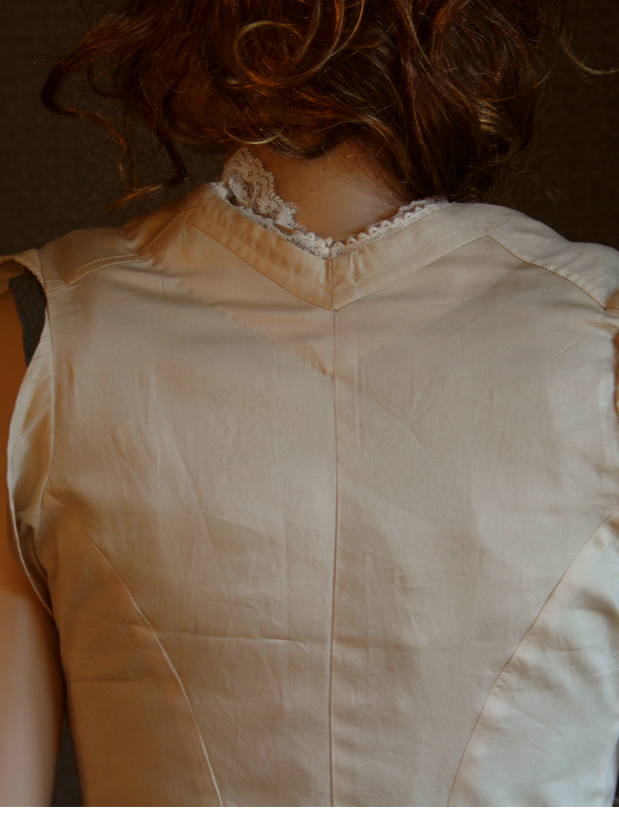
Knickers
Also of 100% cotton sateen, these are NOT split, but button with a flap to pull down along with the skirt. The shape of the bottom keeps the shape of the skirt, and the smooth crescent waistband keeps the smooth front profile of the silhouette.
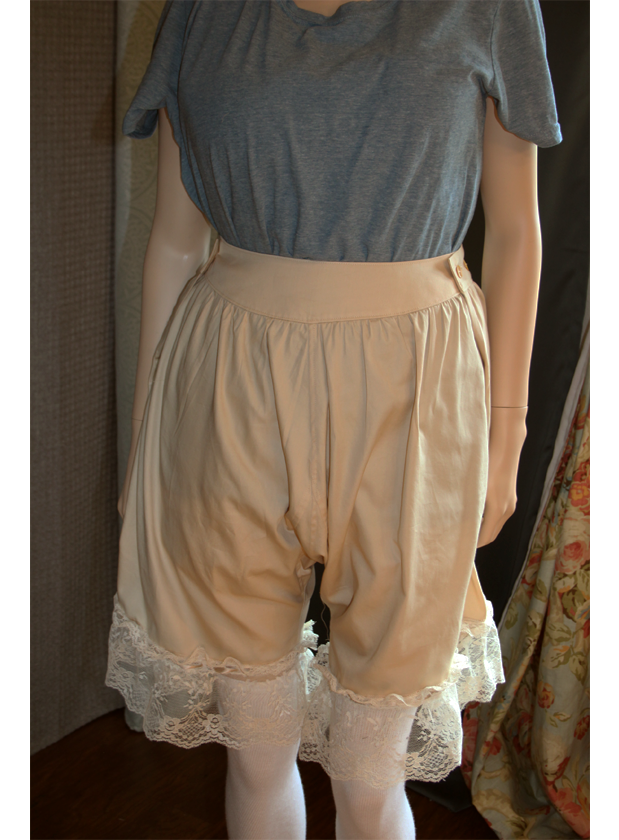
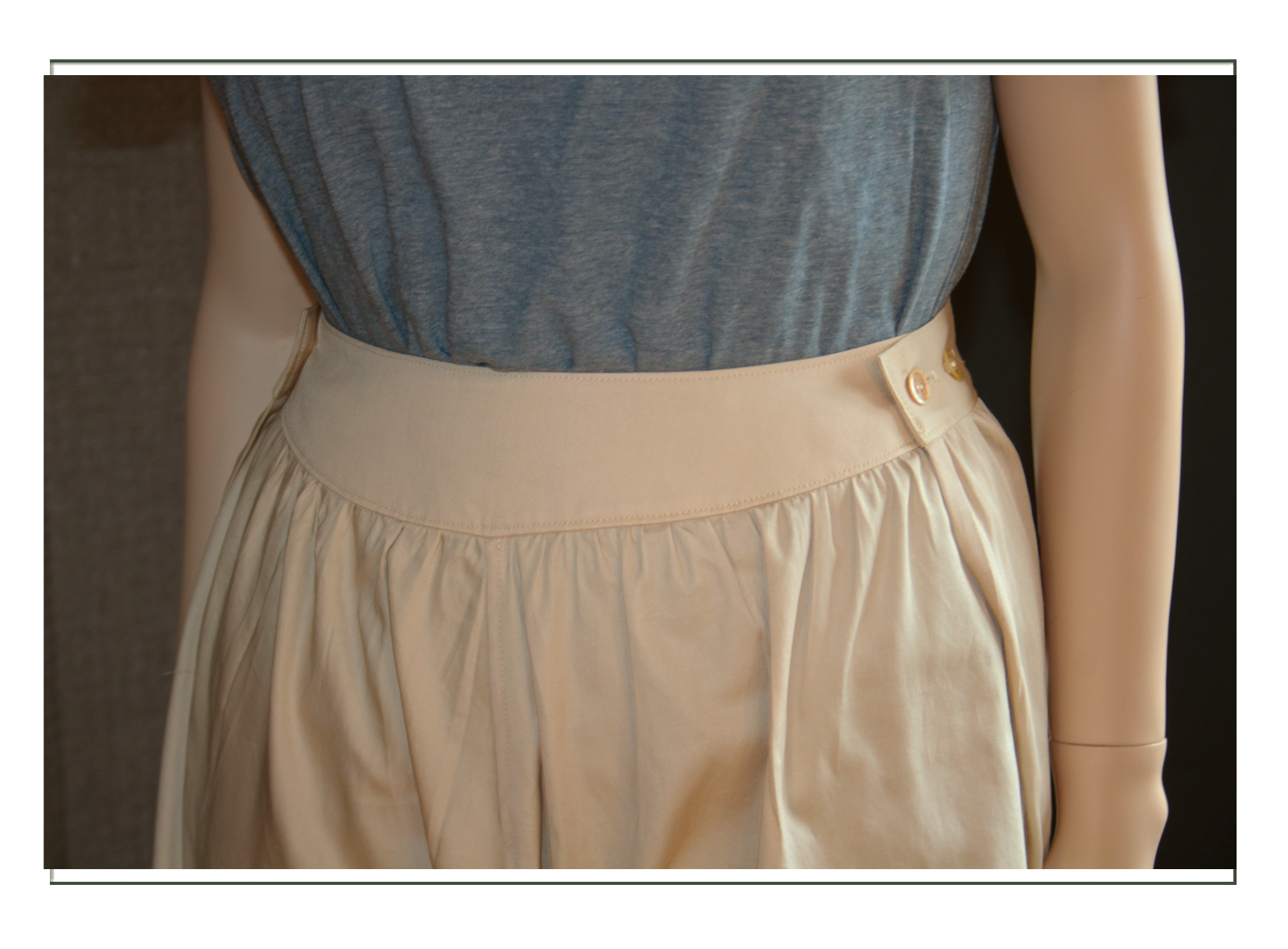
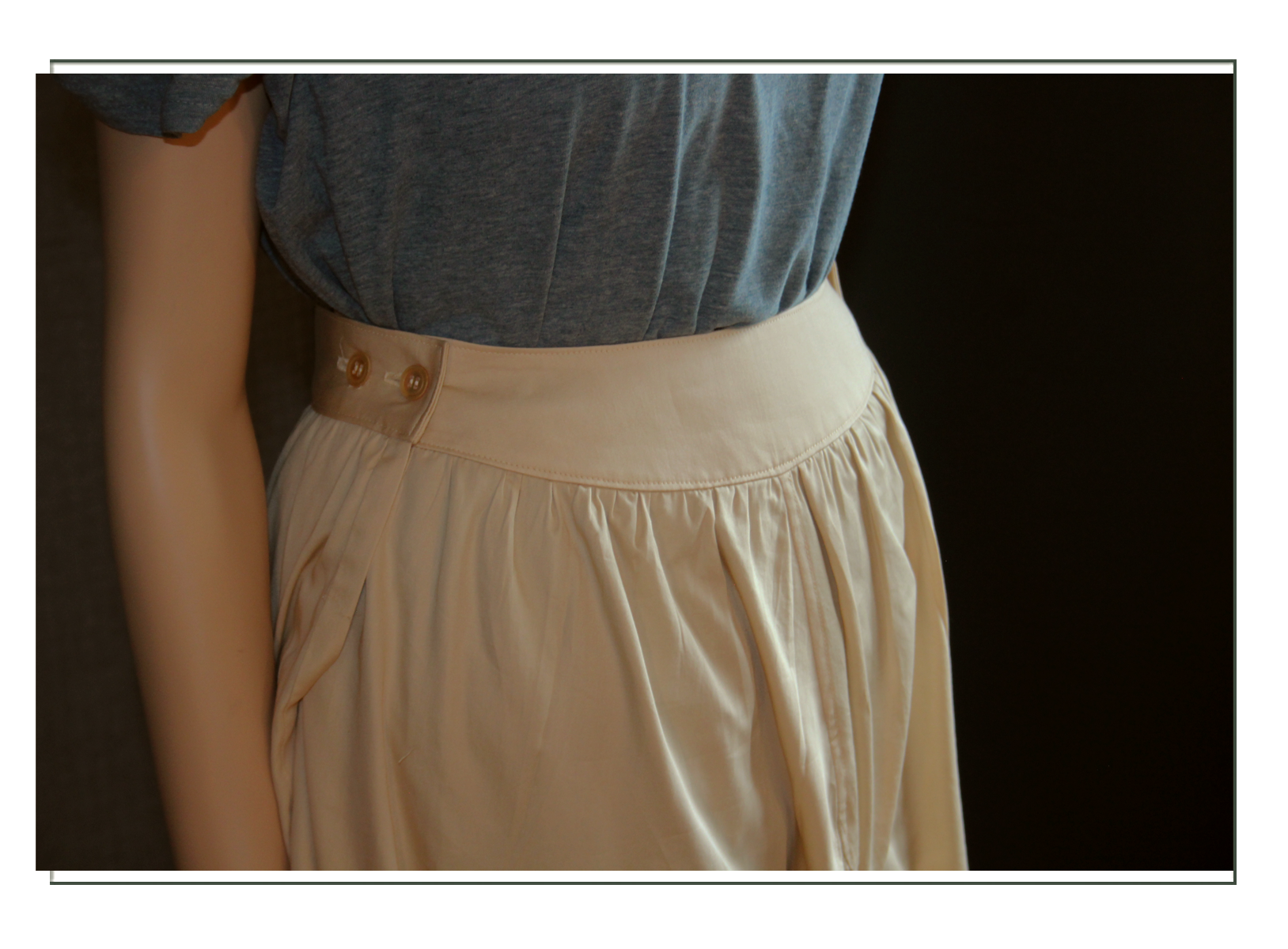
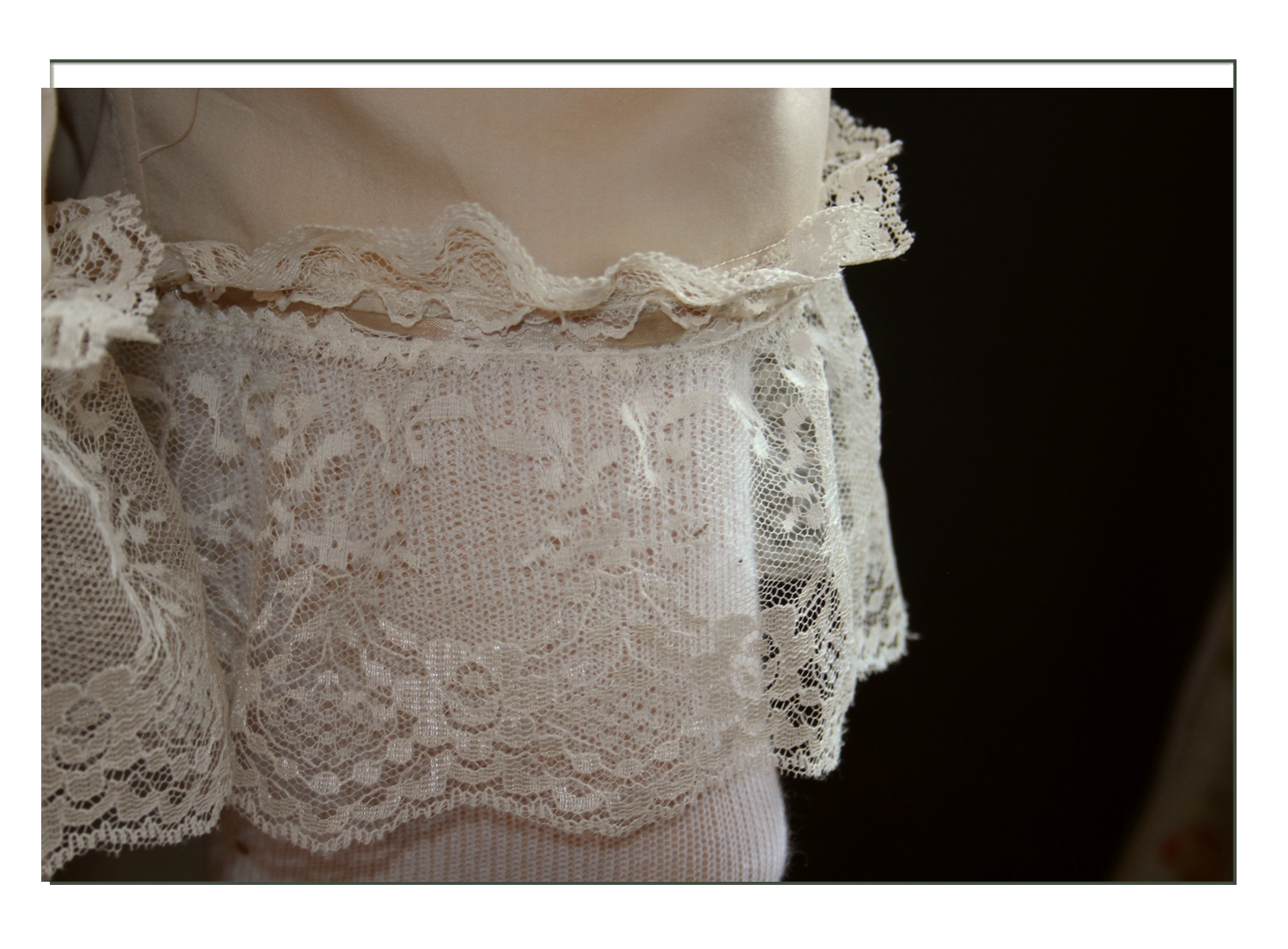
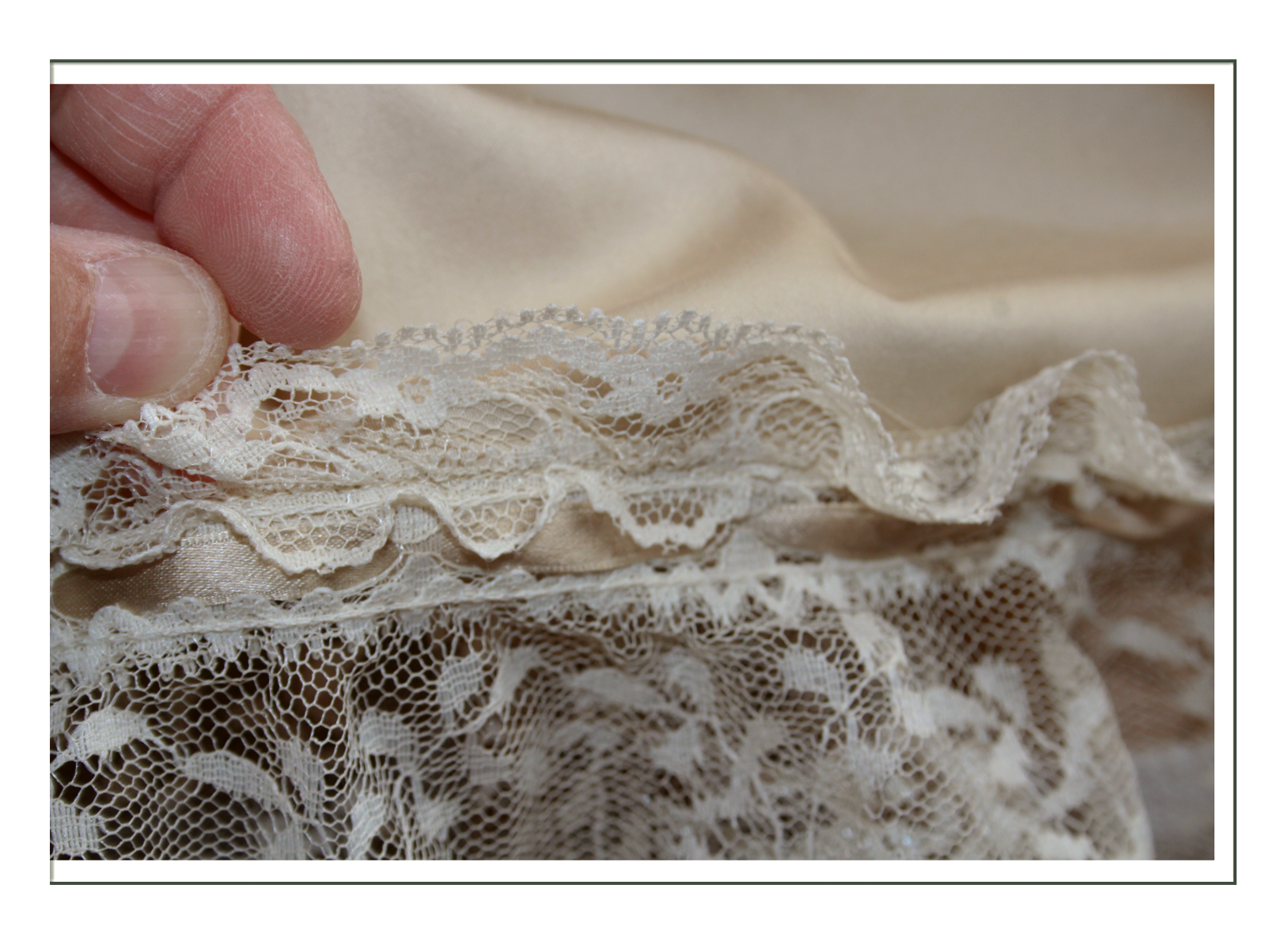
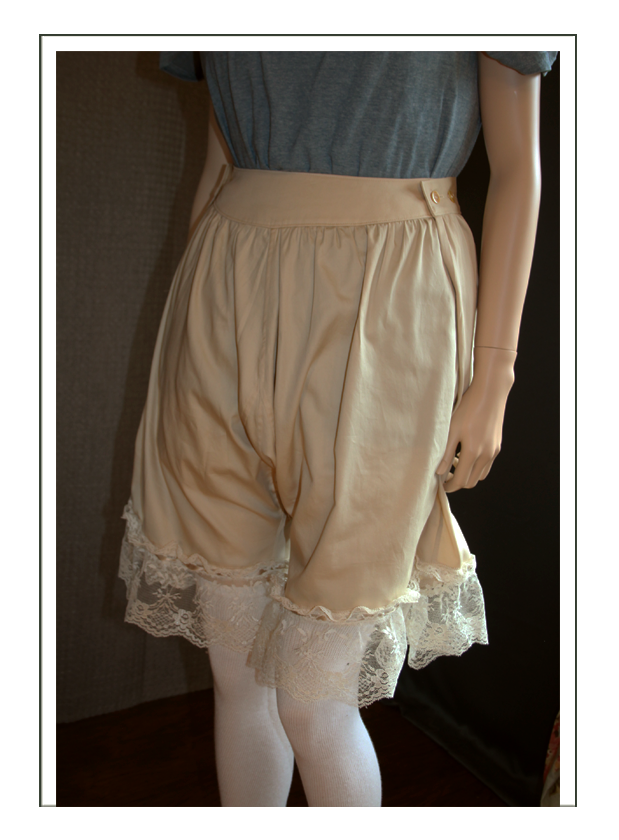
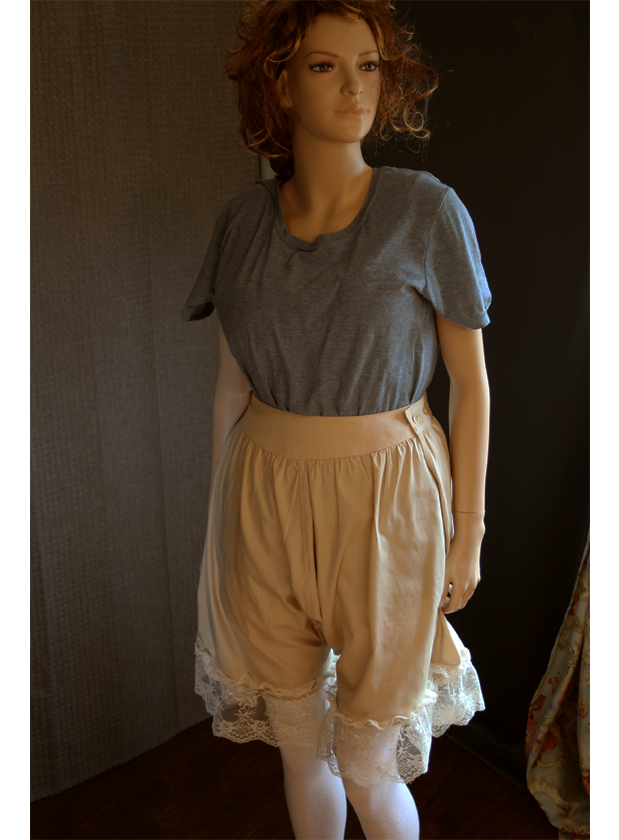
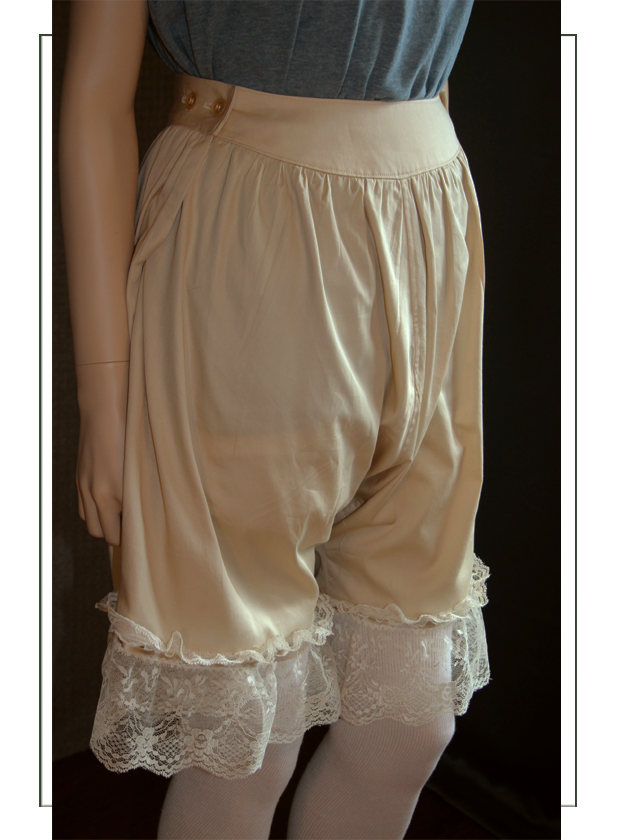
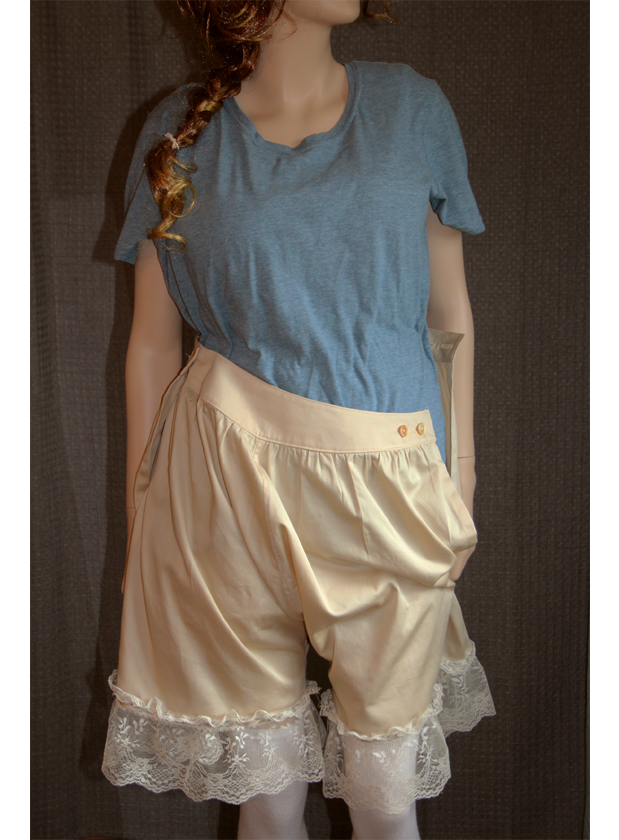
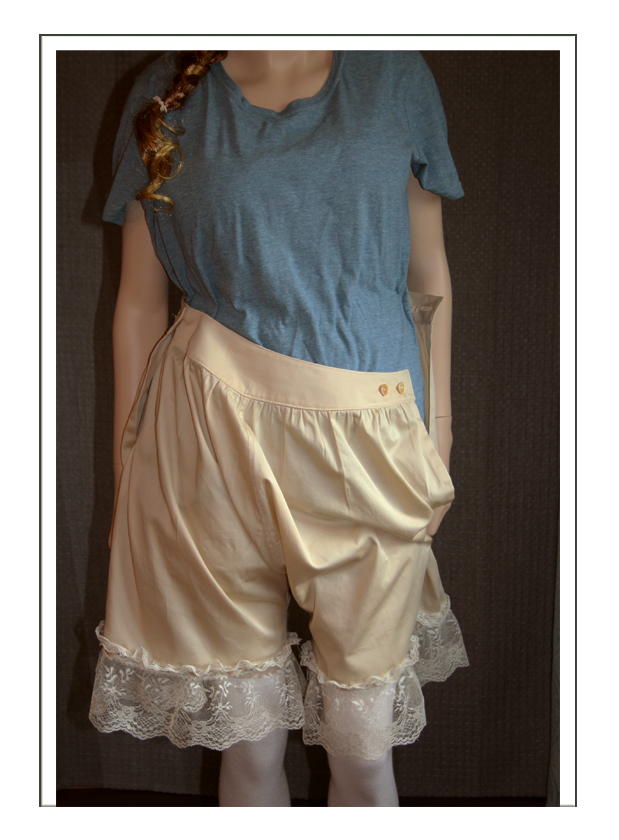
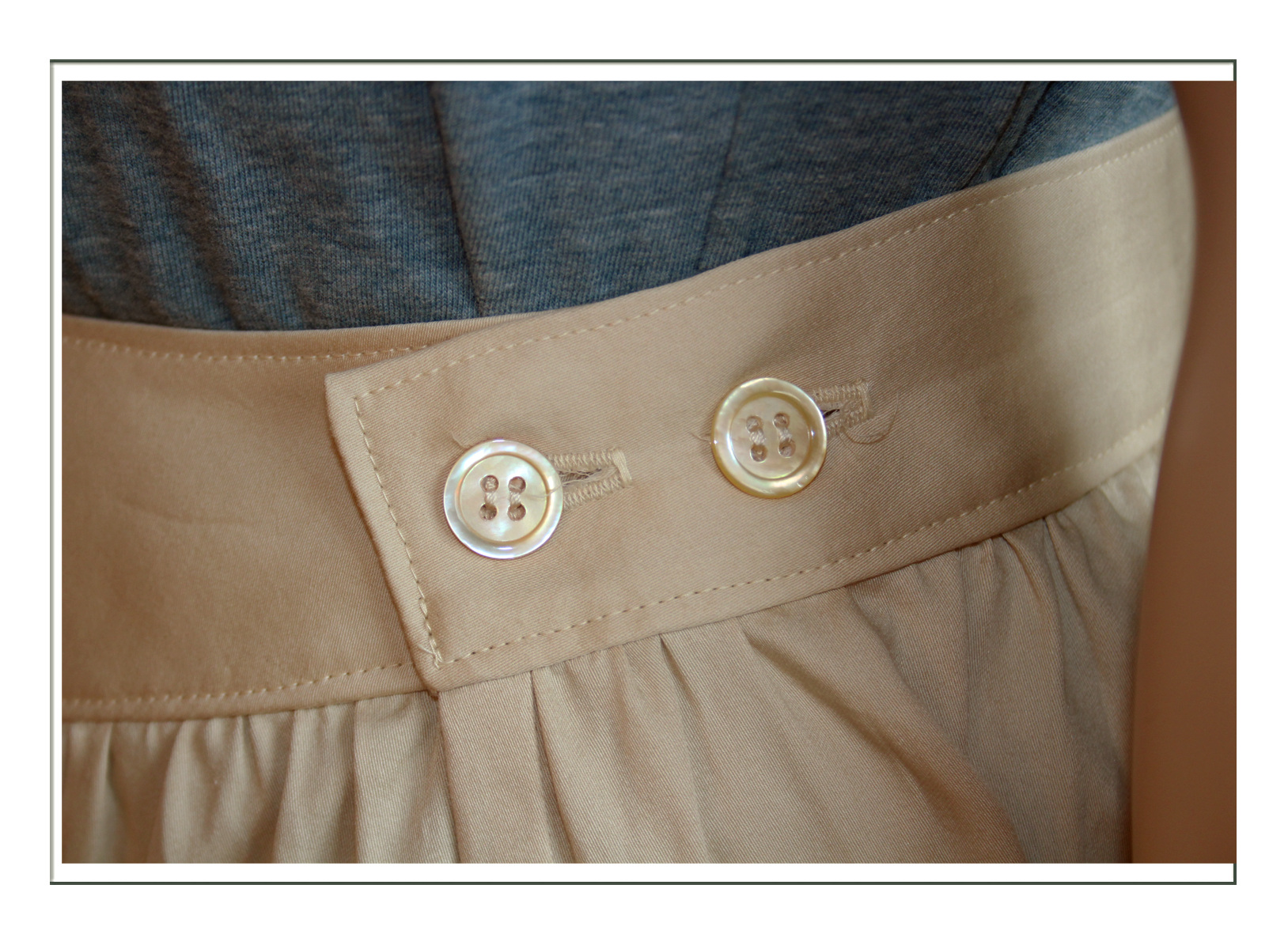
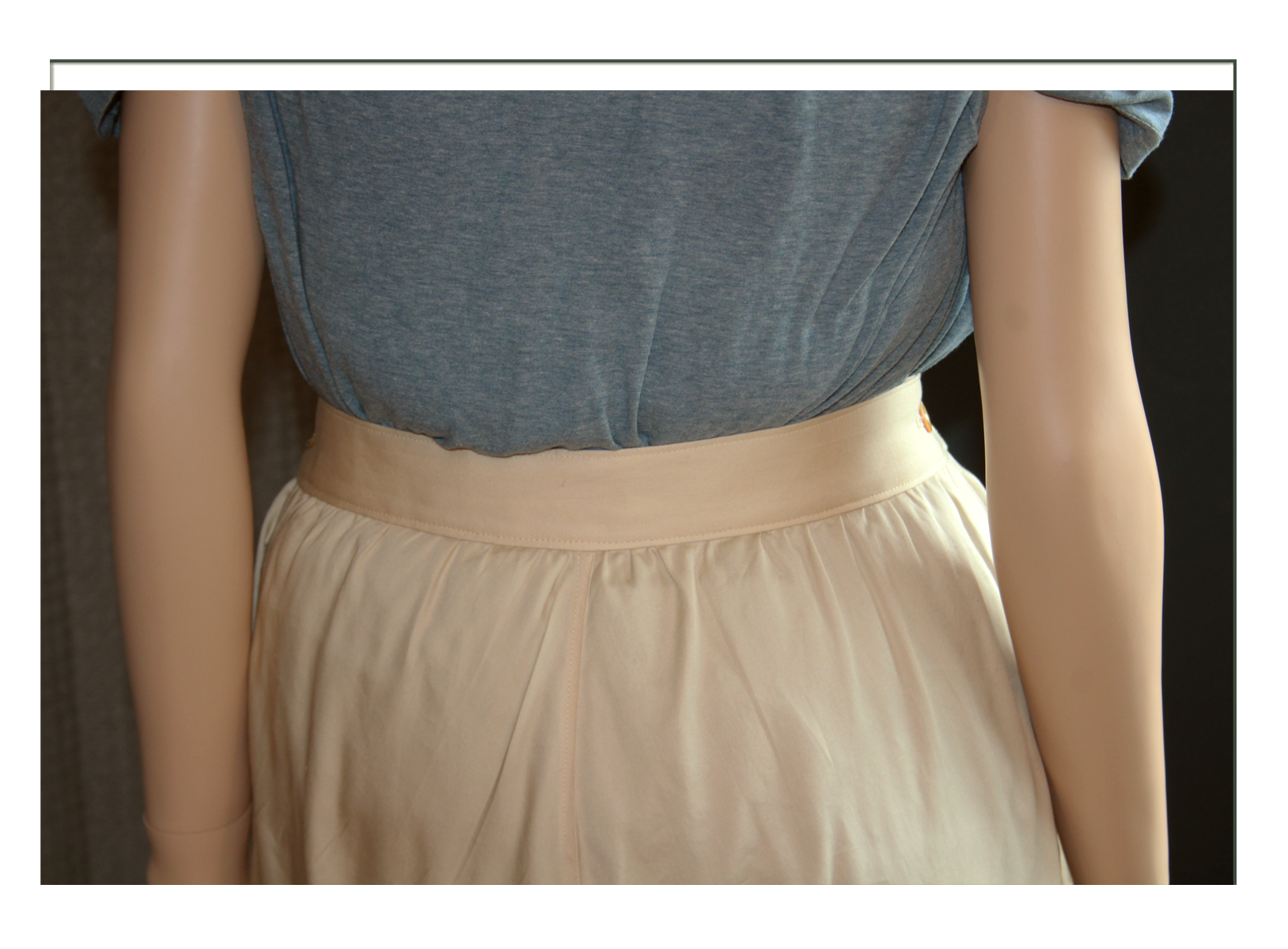
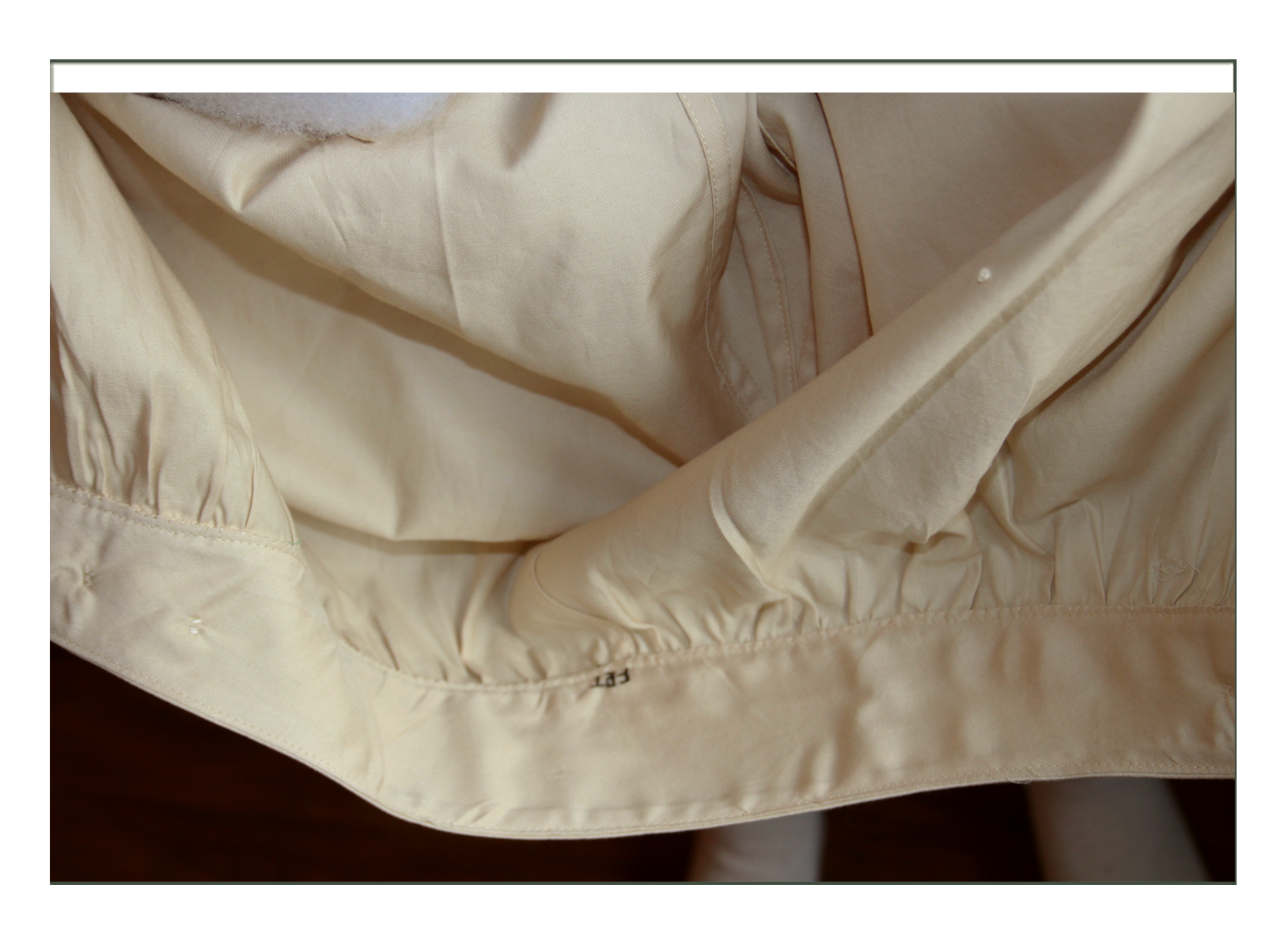
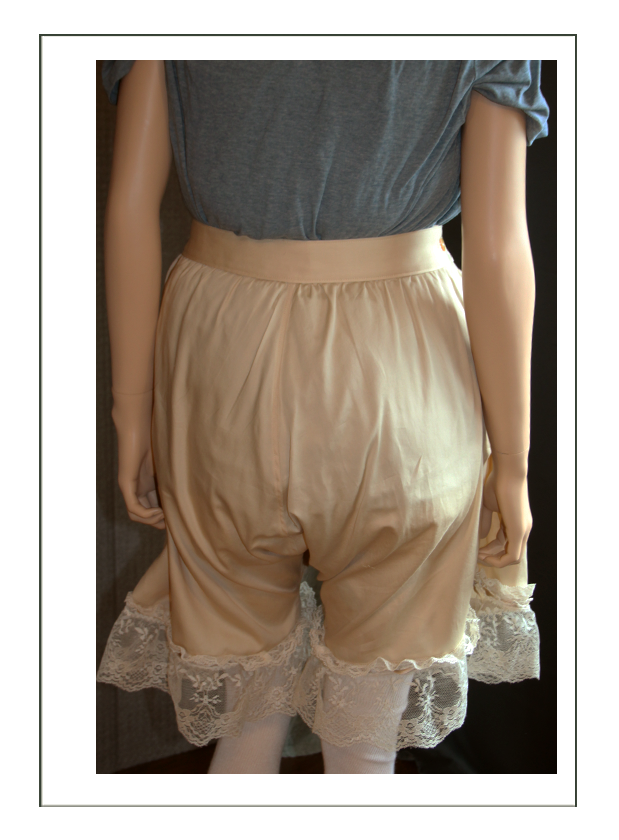
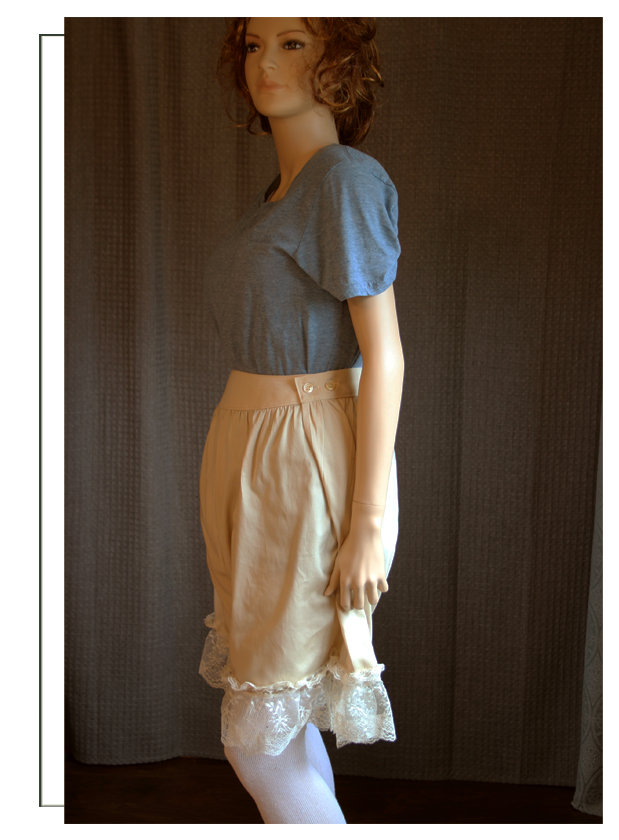
Riding Corset
The corset shown in skirt pictures is just fine, but it belongs to a different 1890’s ensemble, plus it’s a bit too big for Kateri. It also shows through the shirtwaist gauze fabric. This is specifically designed and built for this character and her function. See the discussion on the design on the bottom (at the end) of the Fashion History and Design page.
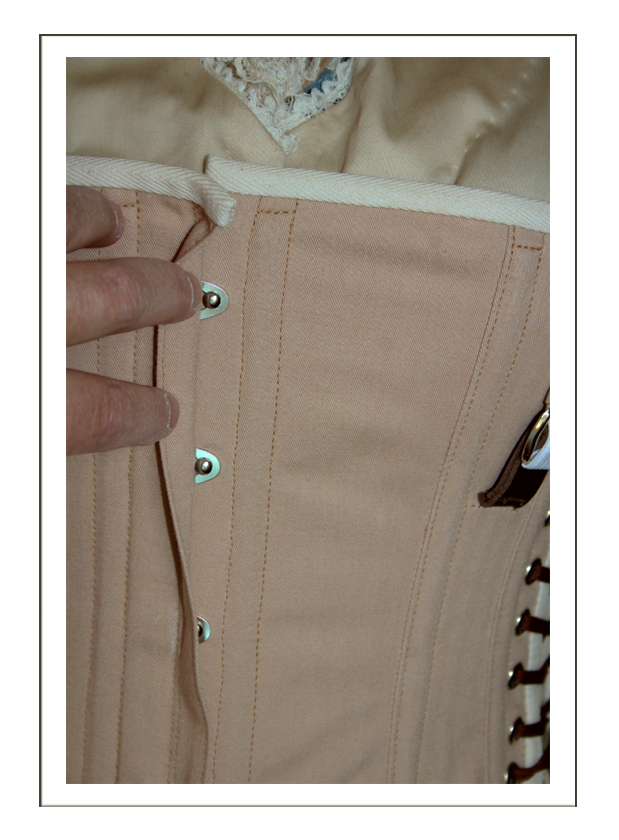
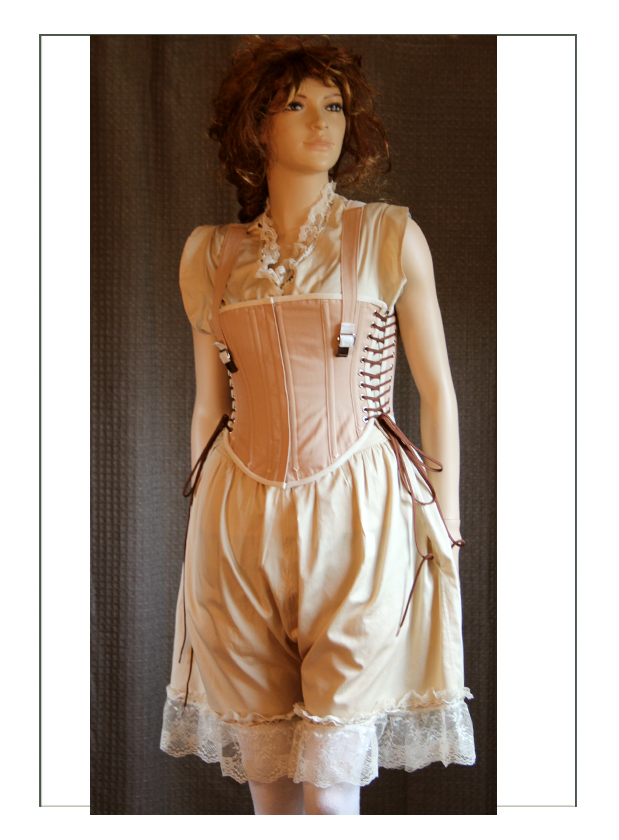
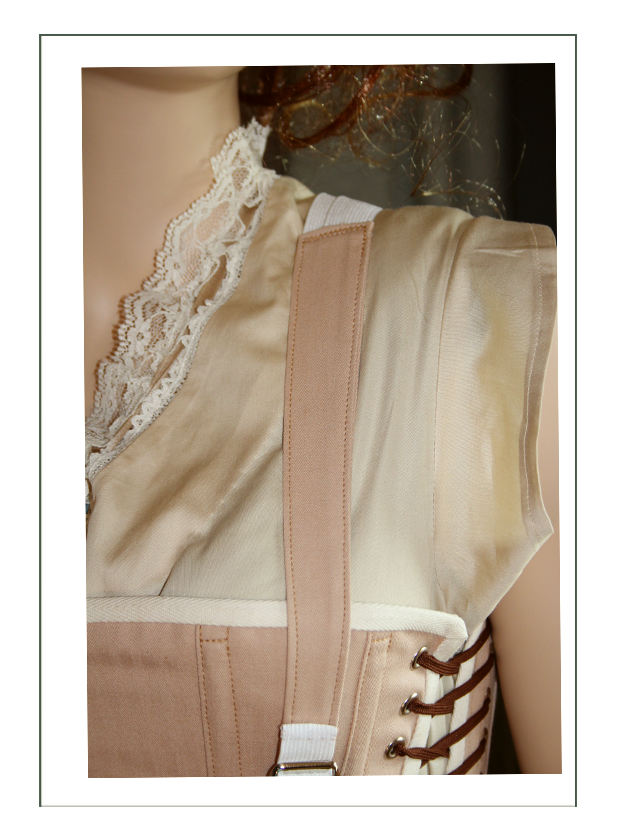
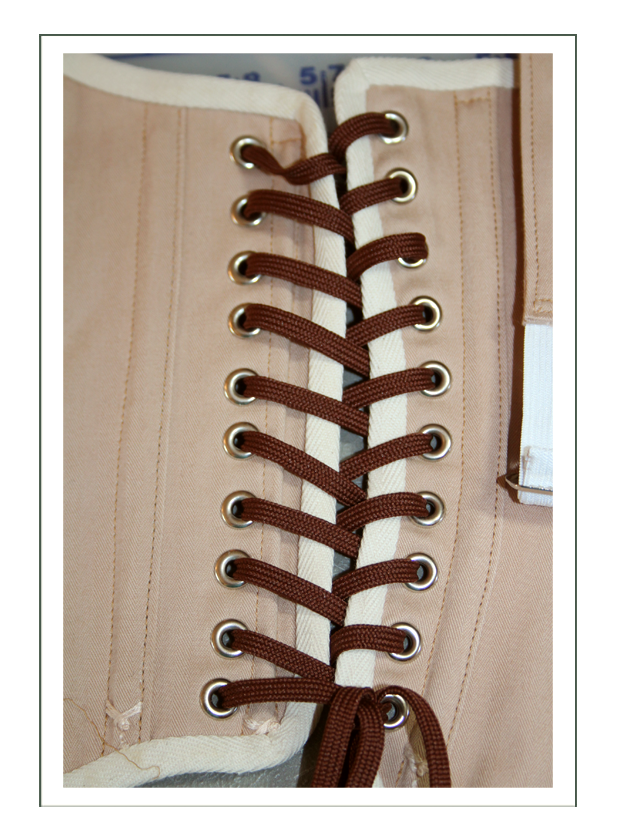
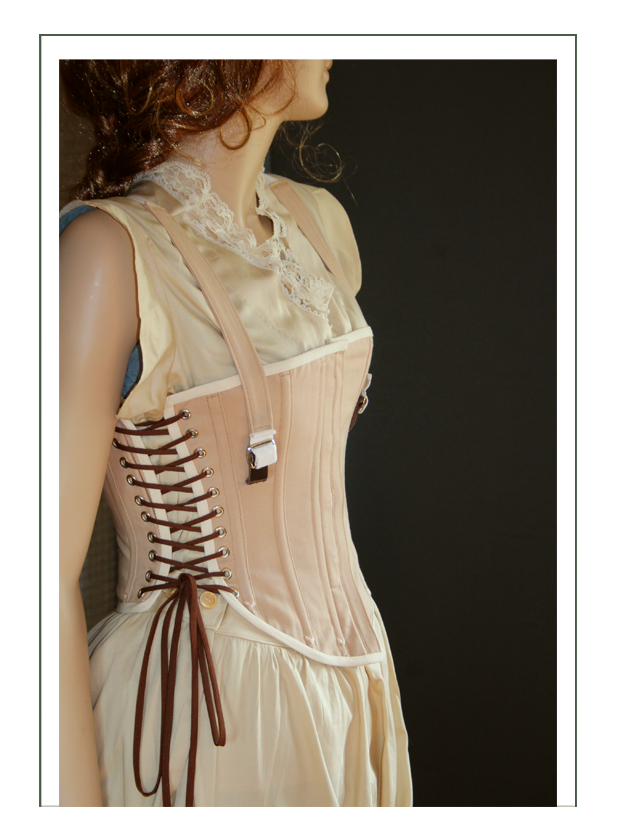
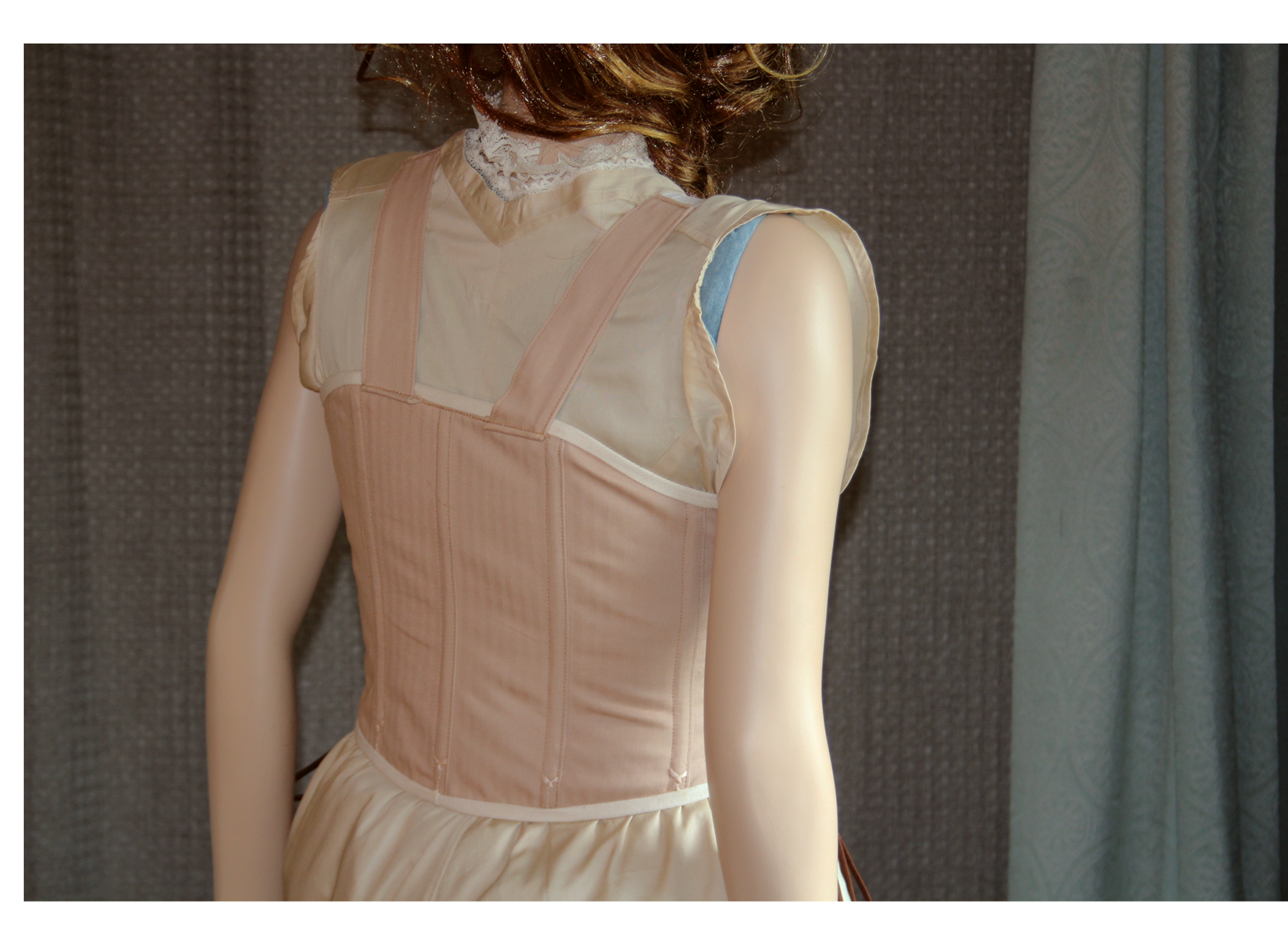
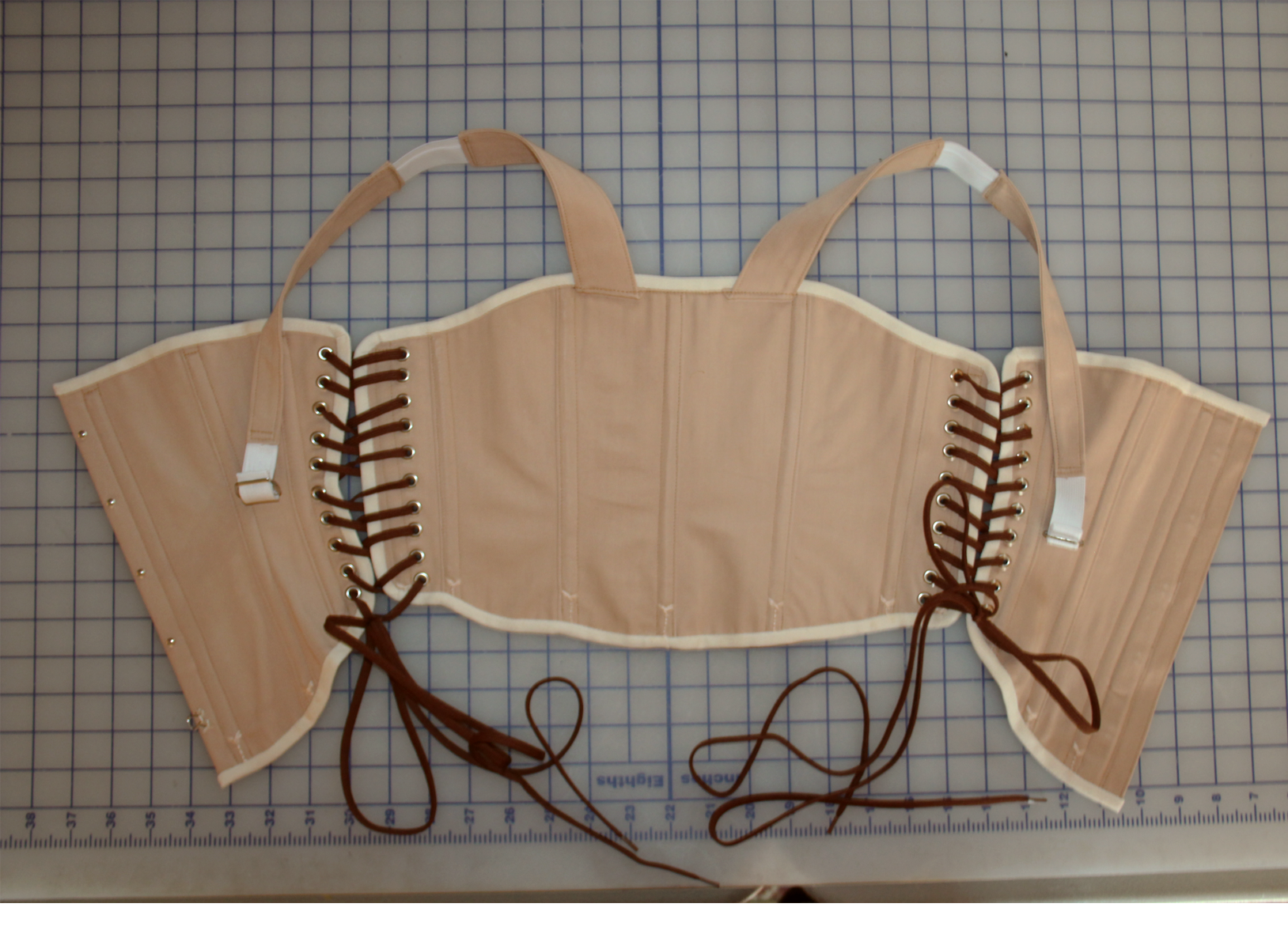
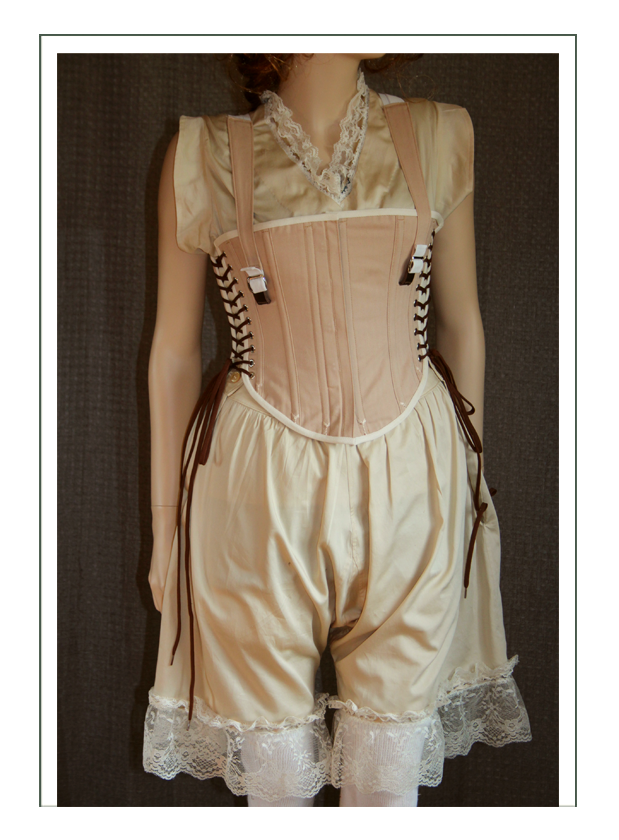
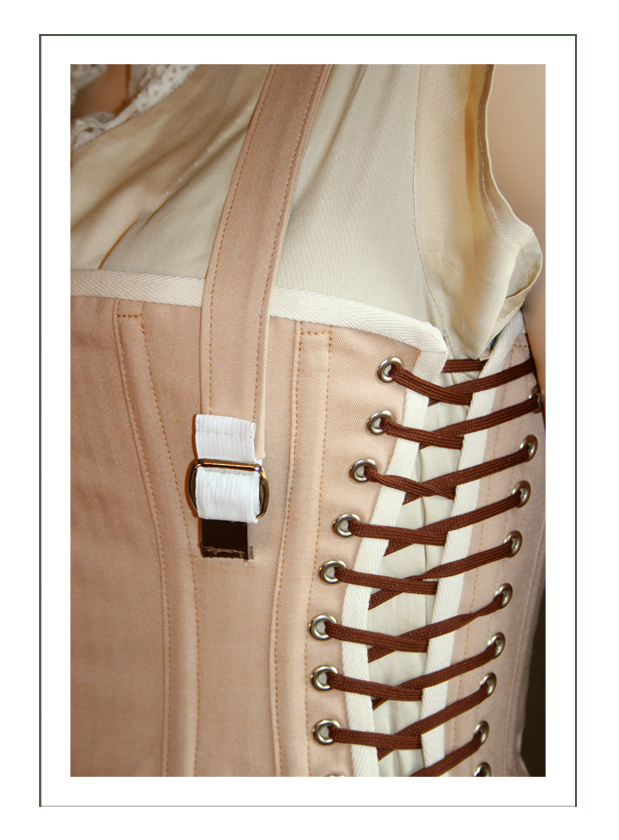
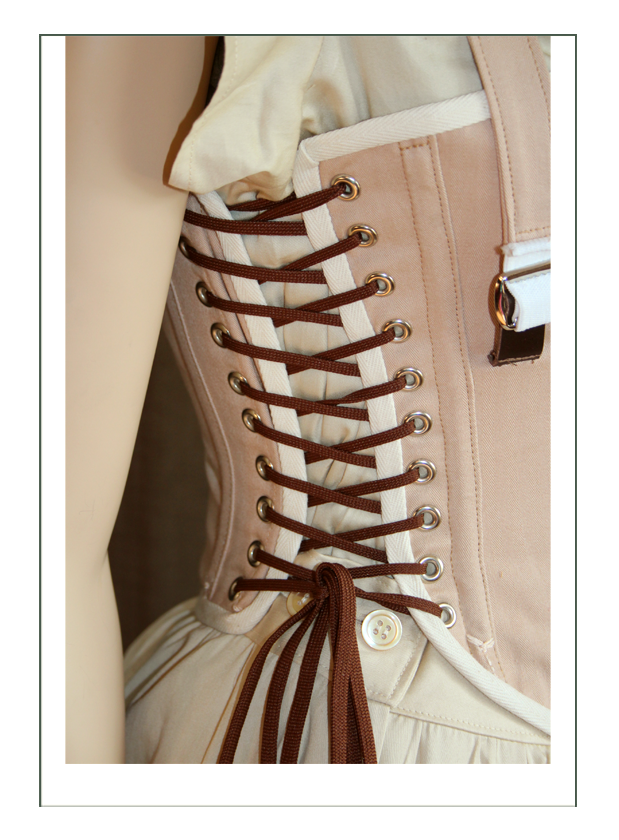
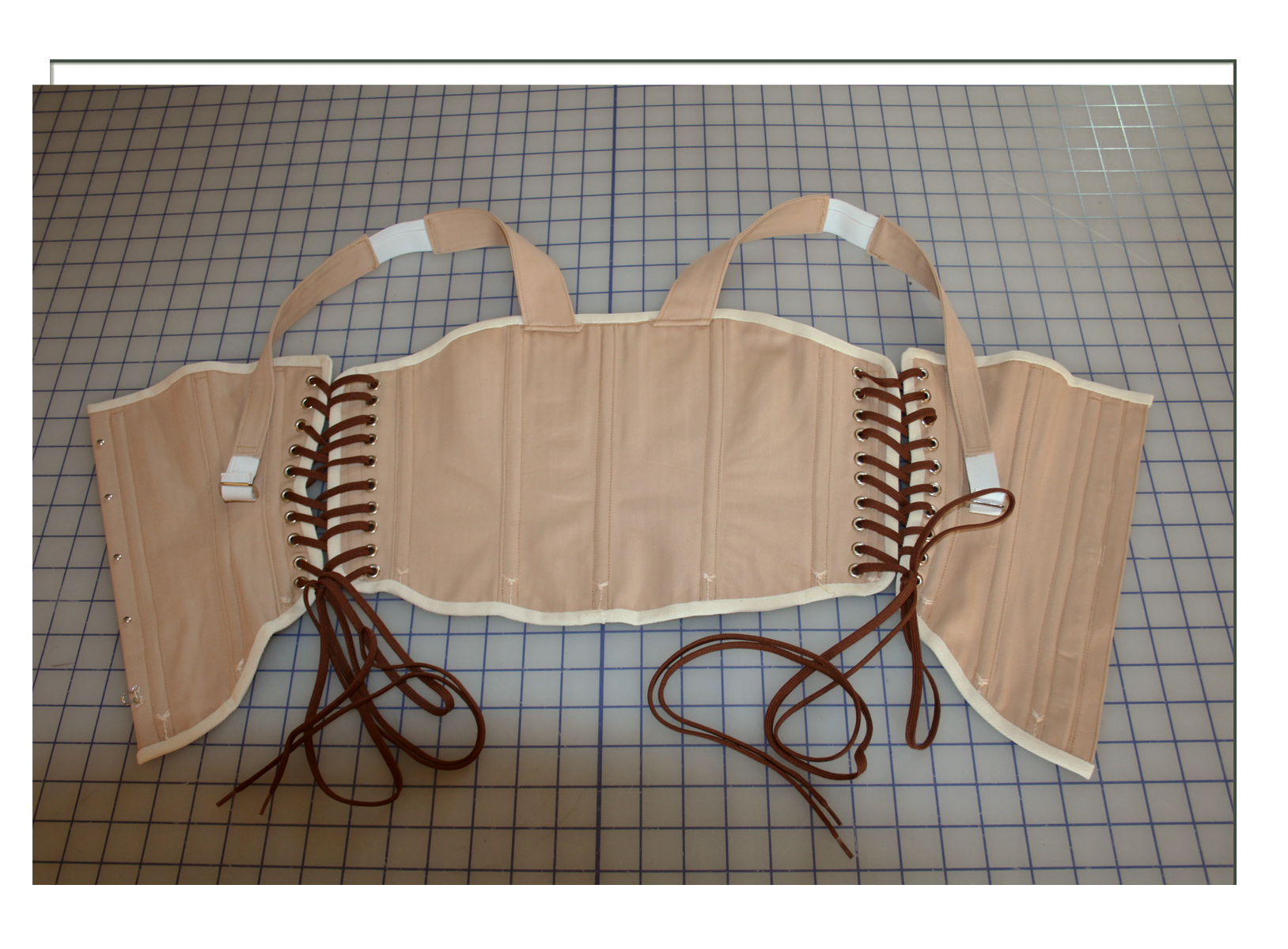
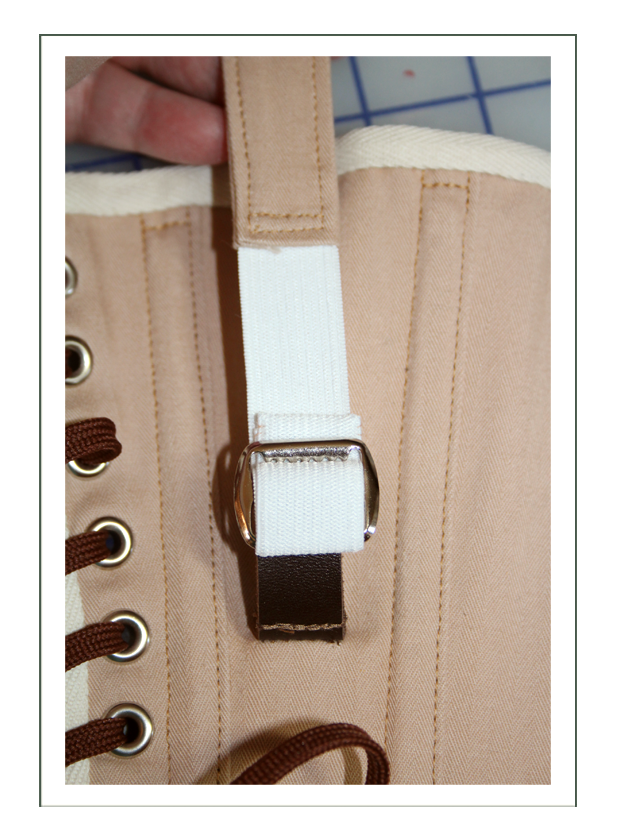
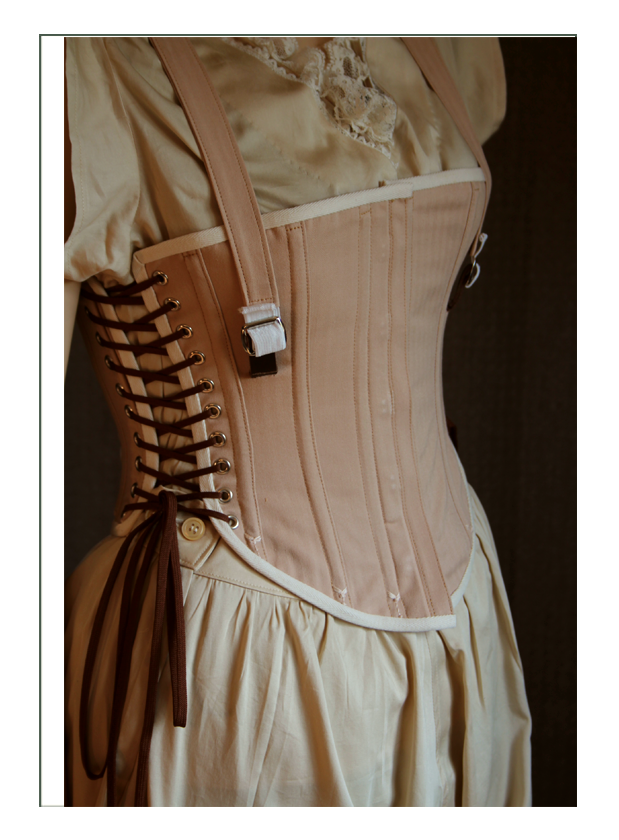
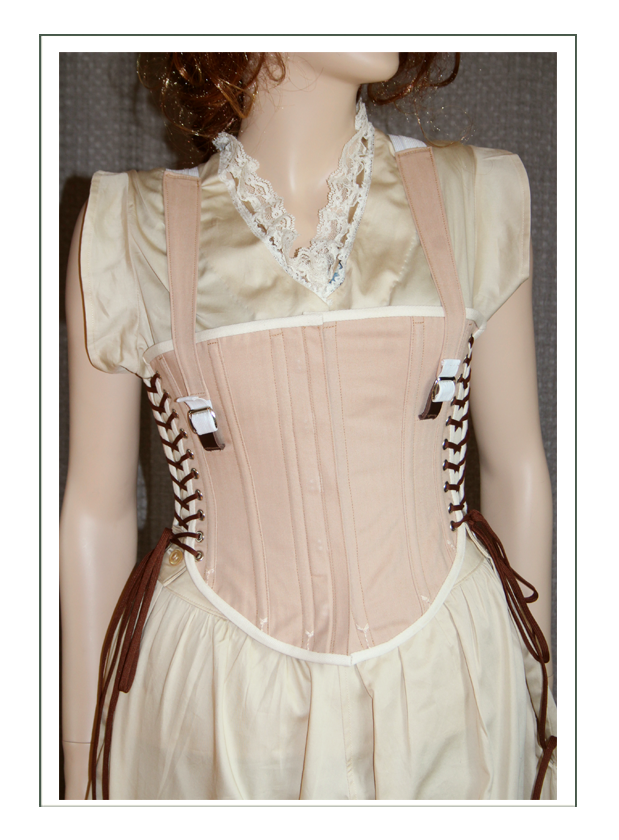
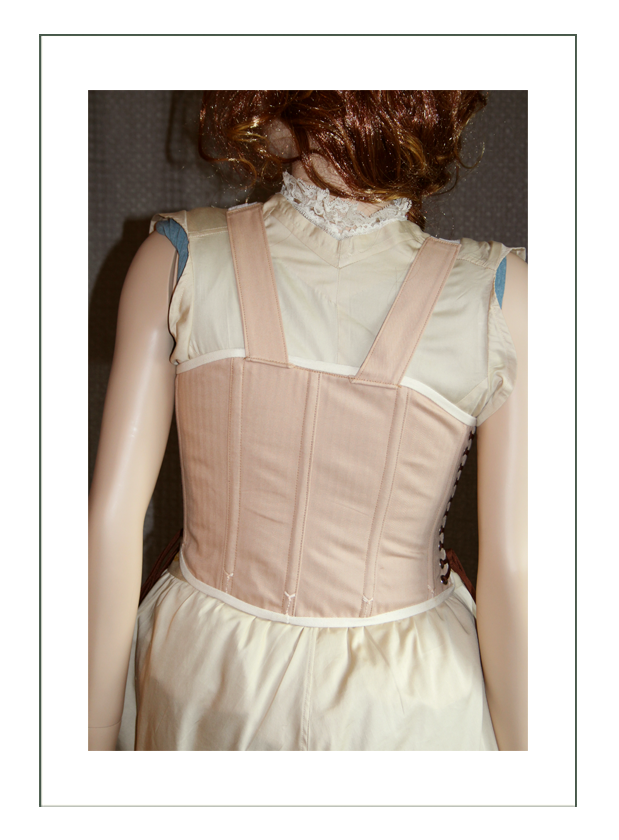
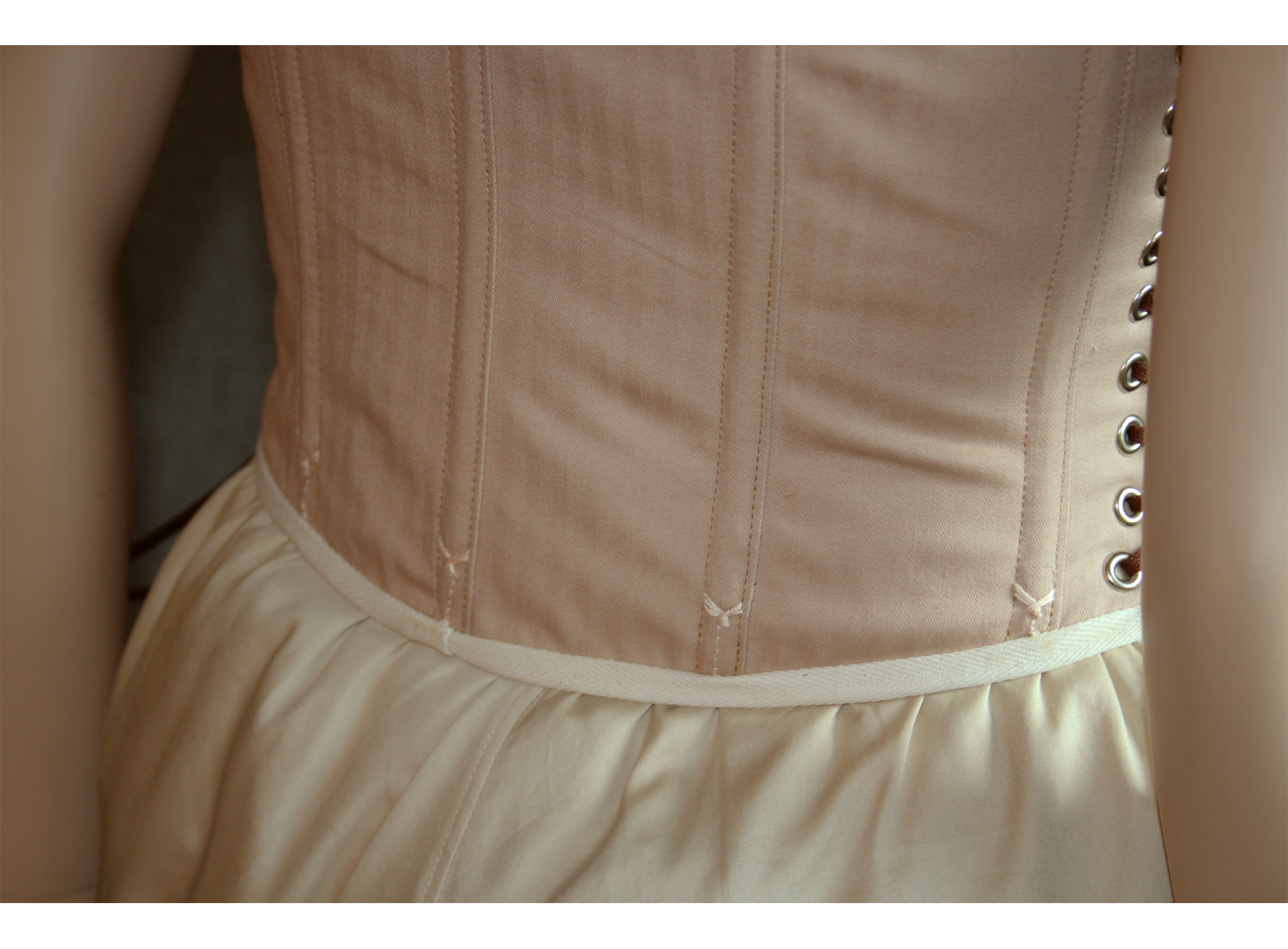
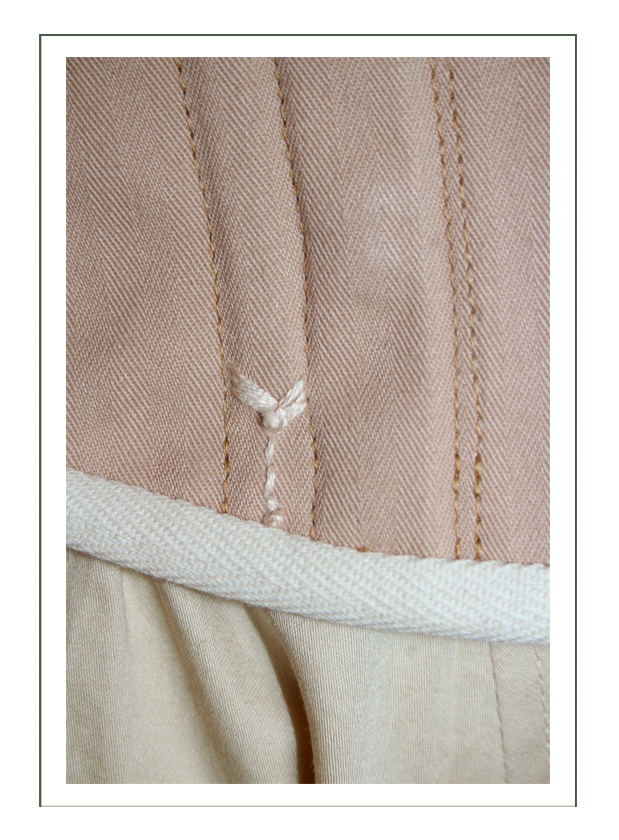
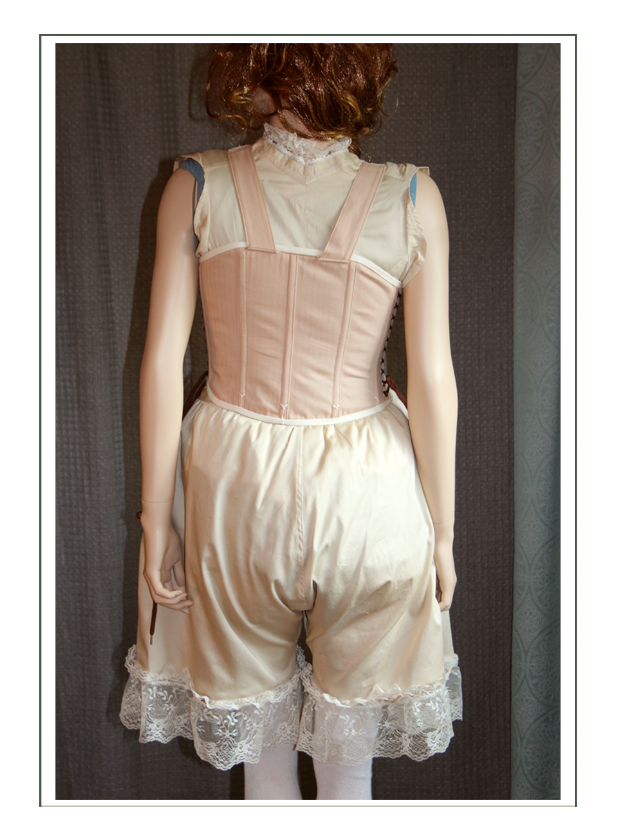
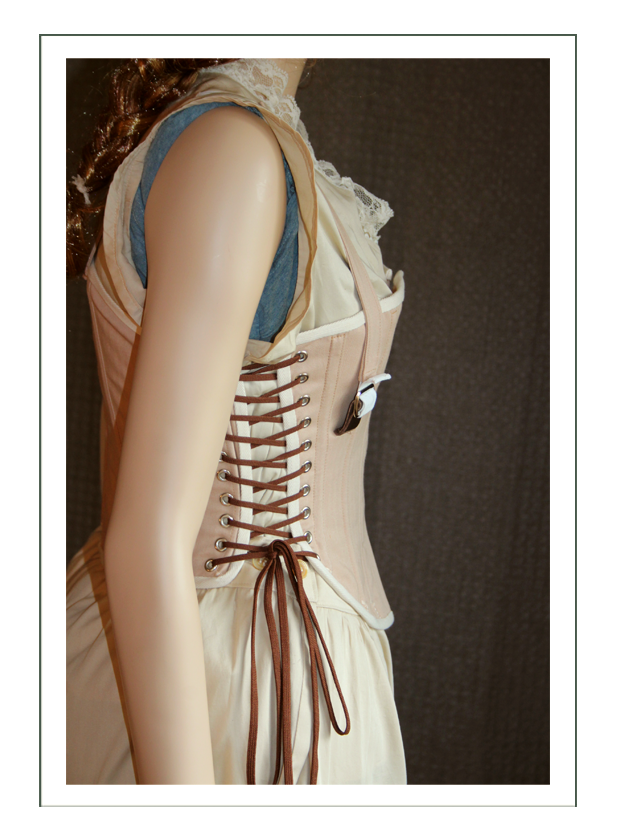
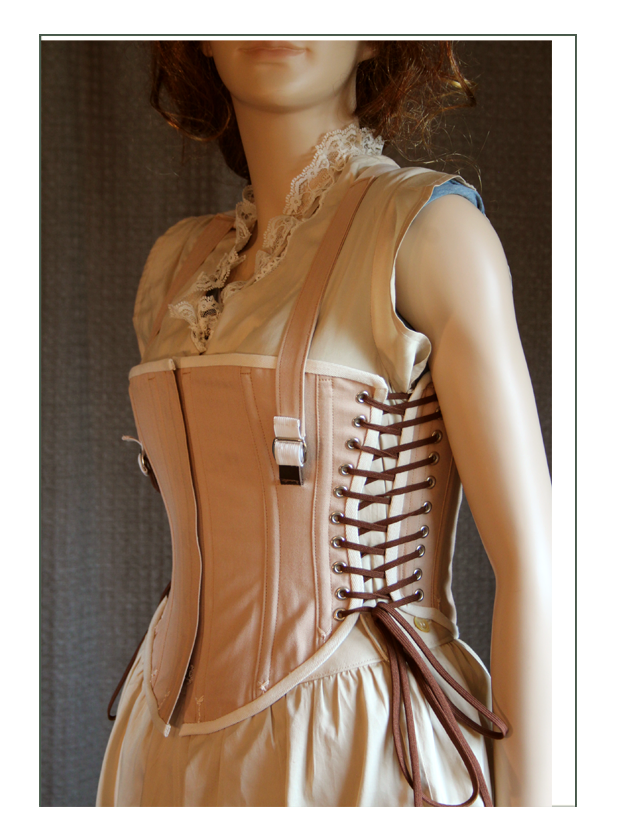
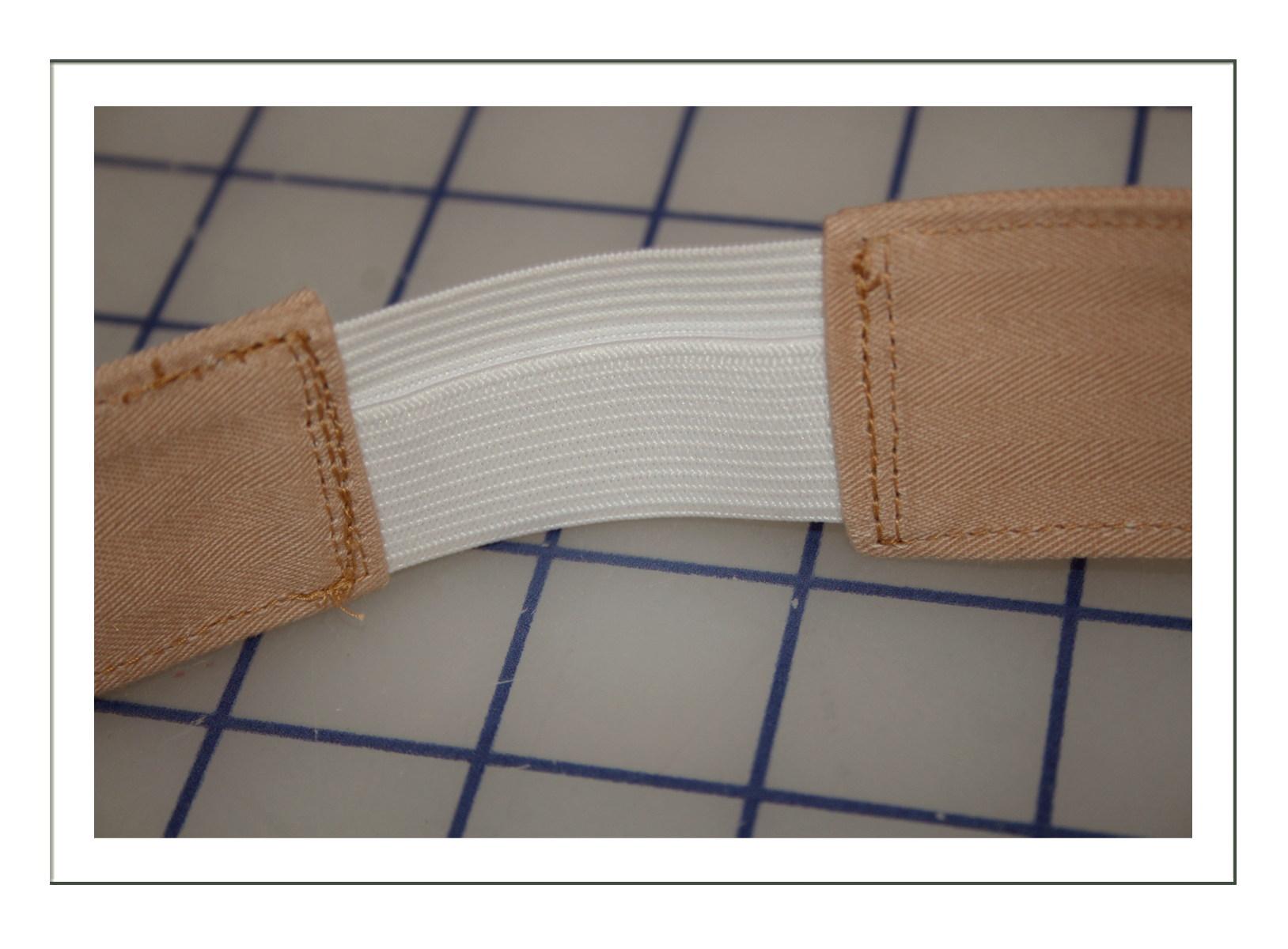
Accessories

Cotton over the knee stockings as shown in photos and a Western hat finish the ensemble – with, or course her six-shooter and holster plus a derringer in the gun pocket of skirt and vest.
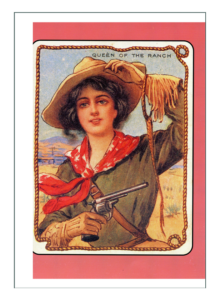
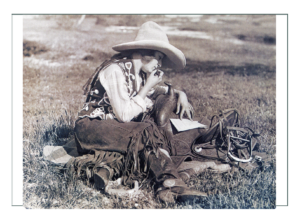
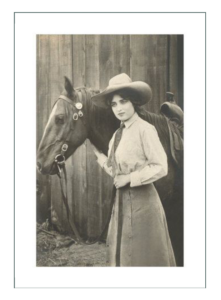
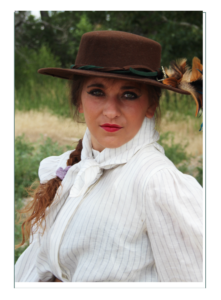
This wool felt southern gauchos hat with silver concha suffices for now, but we feel it puts the character from the south such as New Mexico, whereas the Gunfighters want her to be a Wyoming character. She’ll need to provide her own hat eventually.
We hope to add a 5 Gallon Stetson some day (NOT a 10 gallon! Only men wore those back then). They only had black or white back then, and a 10 gallon hat cost a cowboy a full month’s wages. We bet she’ll choose black.

coming soon!
Click here to go to the Historical Context Page (next)
Click here to go to the Fashion History & Design Development Page
Click here to go to the top of this Page
